Quick filters:
Rodrigues solitaire Stock Photos and Images
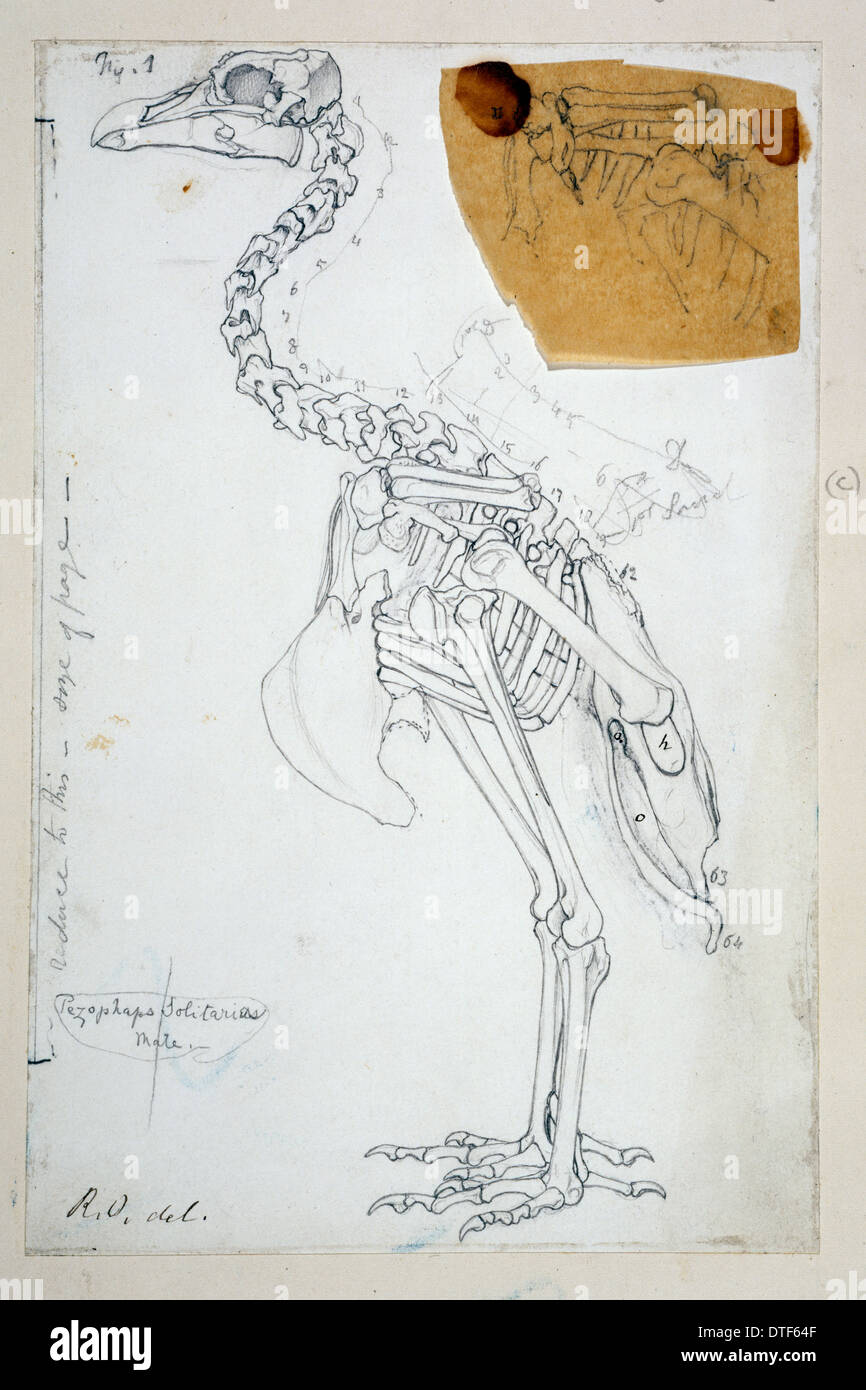 Pezophaps solitaria, Rodrigues solitaire Stock Photohttps://www.alamy.com/image-license-details/?v=1https://www.alamy.com/pezophaps-solitaria-rodrigues-solitaire-image66716959.html
Pezophaps solitaria, Rodrigues solitaire Stock Photohttps://www.alamy.com/image-license-details/?v=1https://www.alamy.com/pezophaps-solitaria-rodrigues-solitaire-image66716959.htmlRMDTF64F–Pezophaps solitaria, Rodrigues solitaire
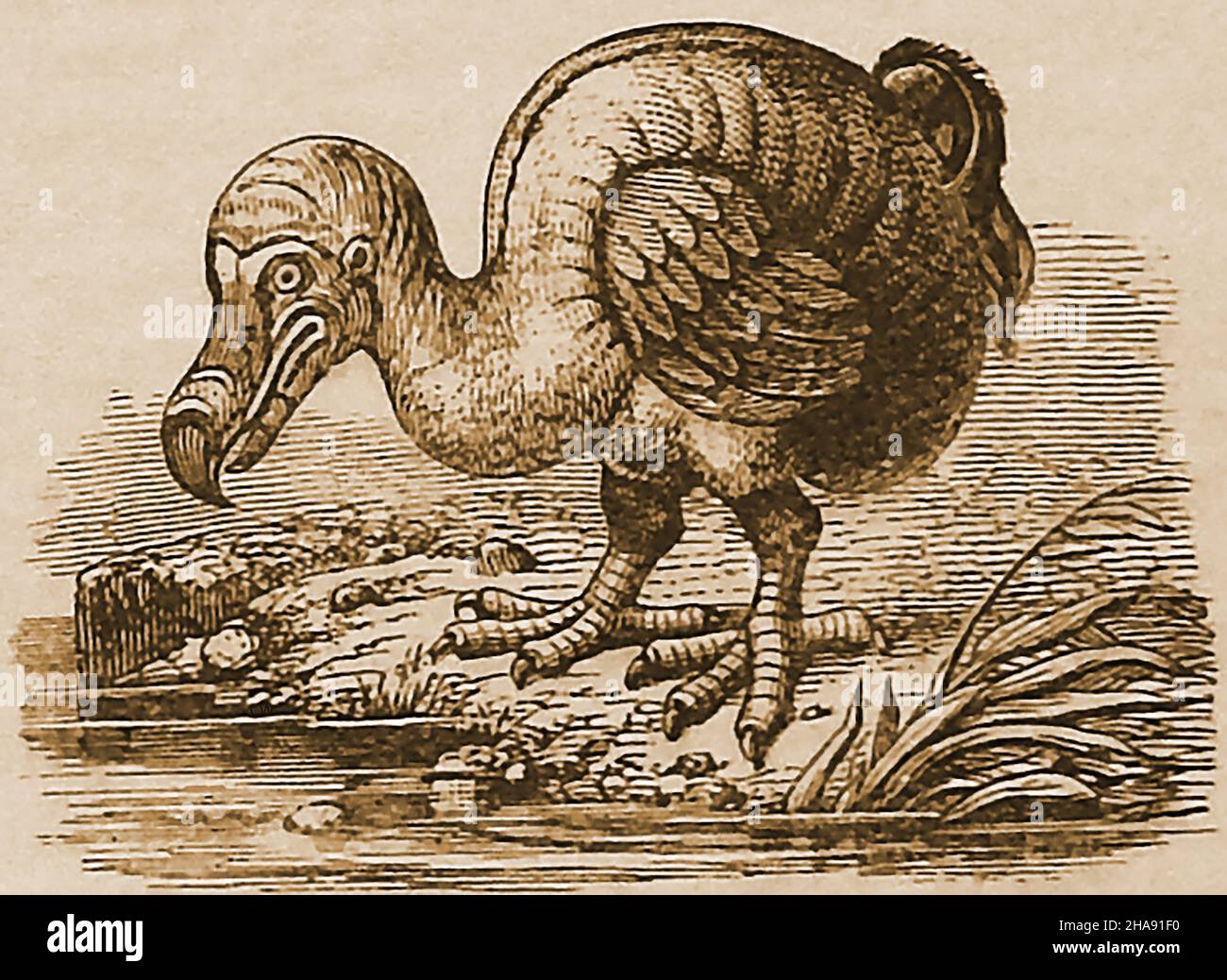 A 19th century engraving of an extinct and flightless Dodo bird. The dodo (Raphus cucullatus) was a bird that lived solely on the island of Mauritius, (Indian Ocean). Its closest genetic relative was the Rodrigues solitaire (now also extinct) that lived on the nearby island of Rodrigues. The first recorded mention of the dodo was by Dutch sailors in 1598. The once abundant bird and its single egg were evidently good eating leading to it being hunted by successive groups of visiting sailors leading to its extinction some time soon after 1662 when it was last sighted. Stock Photohttps://www.alamy.com/image-license-details/?v=1https://www.alamy.com/a-19th-century-engraving-of-an-extinct-and-flightless-dodo-bird-the-dodo-raphus-cucullatus-was-a-bird-that-lived-solely-on-the-island-of-mauritius-indian-ocean-its-closest-genetic-relative-was-the-rodrigues-solitaire-now-also-extinct-that-lived-on-the-nearby-island-of-rodrigues-the-first-recorded-mention-of-the-dodo-was-by-dutch-sailors-in-1598-the-once-abundant-bird-and-its-single-egg-were-evidently-good-eating-leading-to-it-being-hunted-by-successive-groups-of-visiting-sailors-leading-to-its-extinction-some-time-soon-after-1662-when-it-was-last-sighted-image453814900.html
A 19th century engraving of an extinct and flightless Dodo bird. The dodo (Raphus cucullatus) was a bird that lived solely on the island of Mauritius, (Indian Ocean). Its closest genetic relative was the Rodrigues solitaire (now also extinct) that lived on the nearby island of Rodrigues. The first recorded mention of the dodo was by Dutch sailors in 1598. The once abundant bird and its single egg were evidently good eating leading to it being hunted by successive groups of visiting sailors leading to its extinction some time soon after 1662 when it was last sighted. Stock Photohttps://www.alamy.com/image-license-details/?v=1https://www.alamy.com/a-19th-century-engraving-of-an-extinct-and-flightless-dodo-bird-the-dodo-raphus-cucullatus-was-a-bird-that-lived-solely-on-the-island-of-mauritius-indian-ocean-its-closest-genetic-relative-was-the-rodrigues-solitaire-now-also-extinct-that-lived-on-the-nearby-island-of-rodrigues-the-first-recorded-mention-of-the-dodo-was-by-dutch-sailors-in-1598-the-once-abundant-bird-and-its-single-egg-were-evidently-good-eating-leading-to-it-being-hunted-by-successive-groups-of-visiting-sailors-leading-to-its-extinction-some-time-soon-after-1662-when-it-was-last-sighted-image453814900.htmlRM2HA91F0–A 19th century engraving of an extinct and flightless Dodo bird. The dodo (Raphus cucullatus) was a bird that lived solely on the island of Mauritius, (Indian Ocean). Its closest genetic relative was the Rodrigues solitaire (now also extinct) that lived on the nearby island of Rodrigues. The first recorded mention of the dodo was by Dutch sailors in 1598. The once abundant bird and its single egg were evidently good eating leading to it being hunted by successive groups of visiting sailors leading to its extinction some time soon after 1662 when it was last sighted.
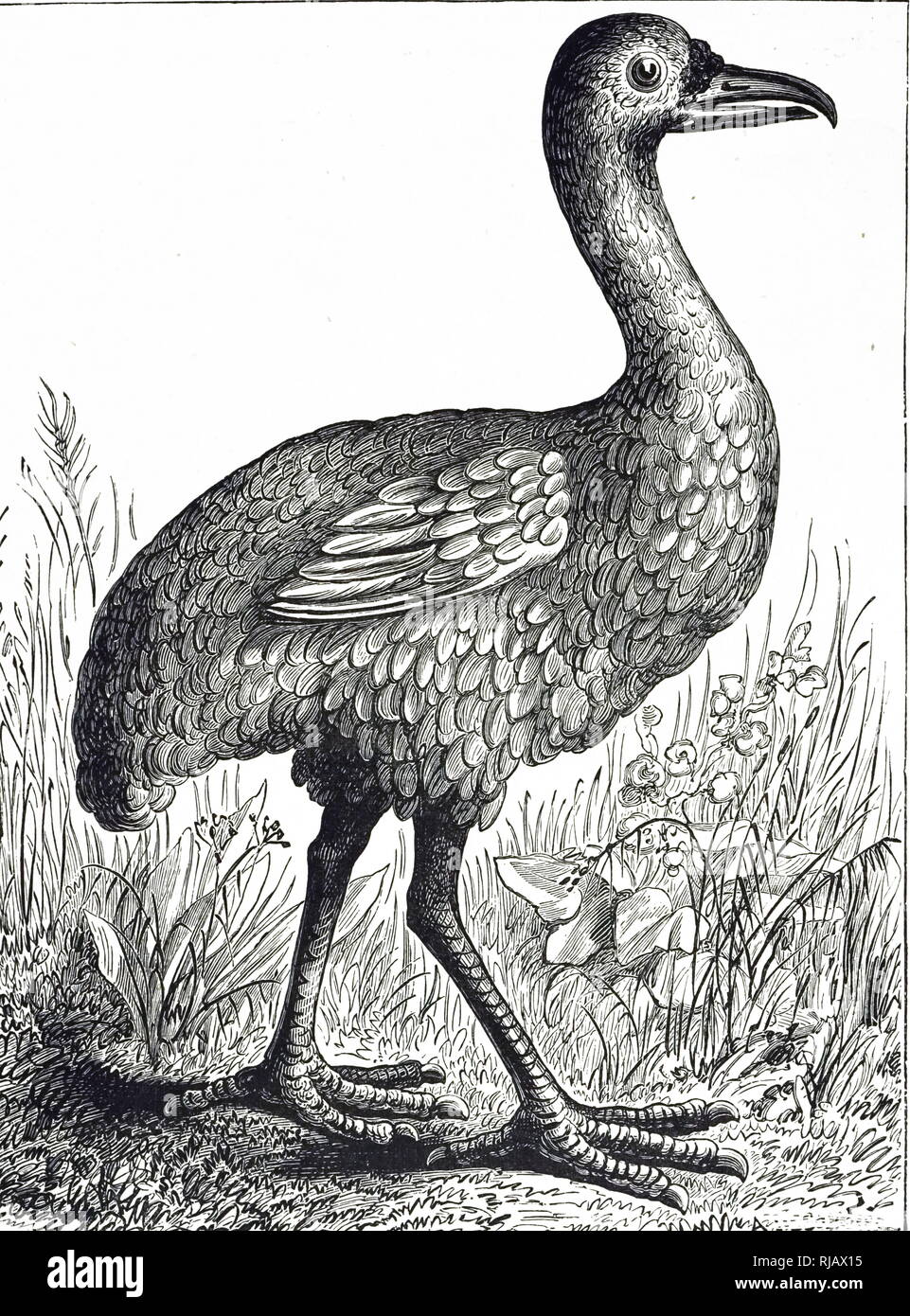 An engraving depicting a Rodrigues solitaire an extinct, flightless bird that was endemic to the island of Rodrigues, east of Madagascar in the Indian Ocean. Dated 19th century Stock Photohttps://www.alamy.com/image-license-details/?v=1https://www.alamy.com/an-engraving-depicting-a-rodrigues-solitaire-an-extinct-flightless-bird-that-was-endemic-to-the-island-of-rodrigues-east-of-madagascar-in-the-indian-ocean-dated-19th-century-image235038529.html
An engraving depicting a Rodrigues solitaire an extinct, flightless bird that was endemic to the island of Rodrigues, east of Madagascar in the Indian Ocean. Dated 19th century Stock Photohttps://www.alamy.com/image-license-details/?v=1https://www.alamy.com/an-engraving-depicting-a-rodrigues-solitaire-an-extinct-flightless-bird-that-was-endemic-to-the-island-of-rodrigues-east-of-madagascar-in-the-indian-ocean-dated-19th-century-image235038529.htmlRMRJAX15–An engraving depicting a Rodrigues solitaire an extinct, flightless bird that was endemic to the island of Rodrigues, east of Madagascar in the Indian Ocean. Dated 19th century
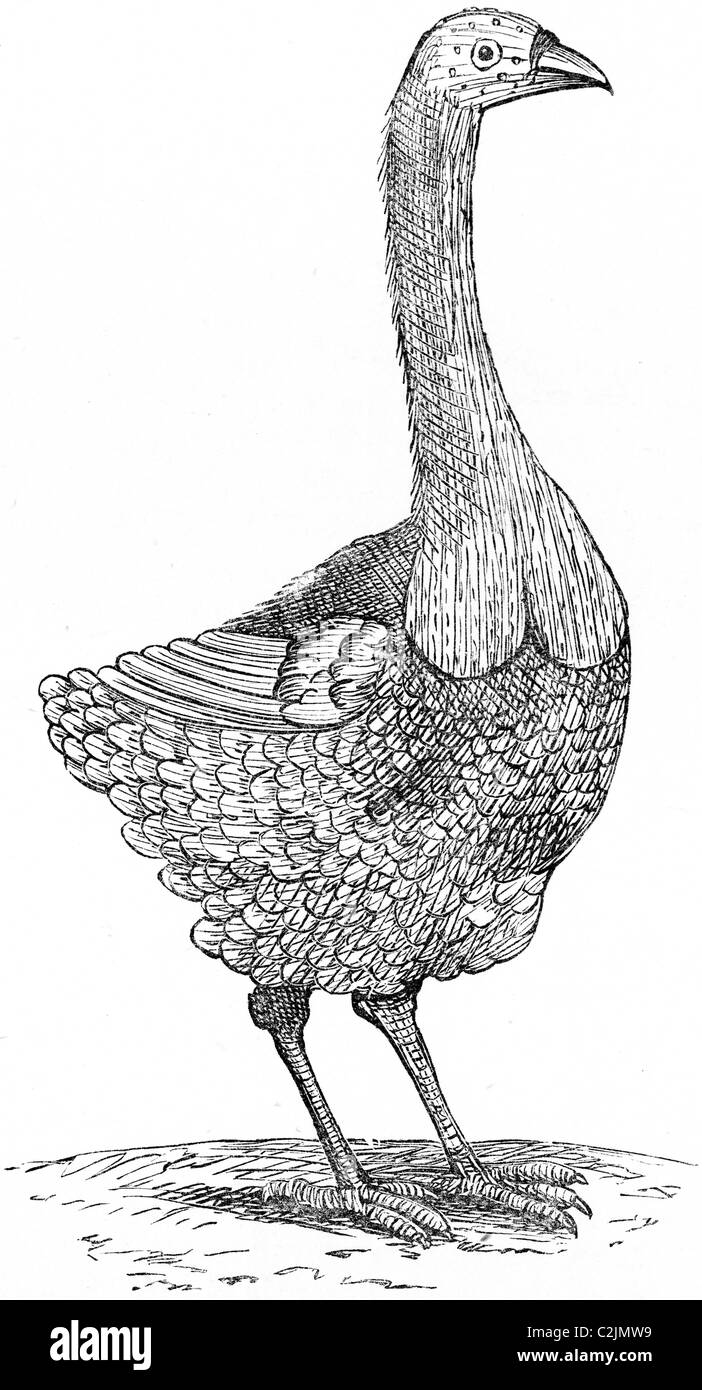 19th Century book illustration, taken from 9th edition (1875) of Encyclopaedia Britannica, of Rodrigues Solitaire Stock Photohttps://www.alamy.com/image-license-details/?v=1https://www.alamy.com/stock-photo-19th-century-book-illustration-taken-from-9th-edition-1875-of-encyclopaedia-36061573.html
19th Century book illustration, taken from 9th edition (1875) of Encyclopaedia Britannica, of Rodrigues Solitaire Stock Photohttps://www.alamy.com/image-license-details/?v=1https://www.alamy.com/stock-photo-19th-century-book-illustration-taken-from-9th-edition-1875-of-encyclopaedia-36061573.htmlRMC2JMW9–19th Century book illustration, taken from 9th edition (1875) of Encyclopaedia Britannica, of Rodrigues Solitaire
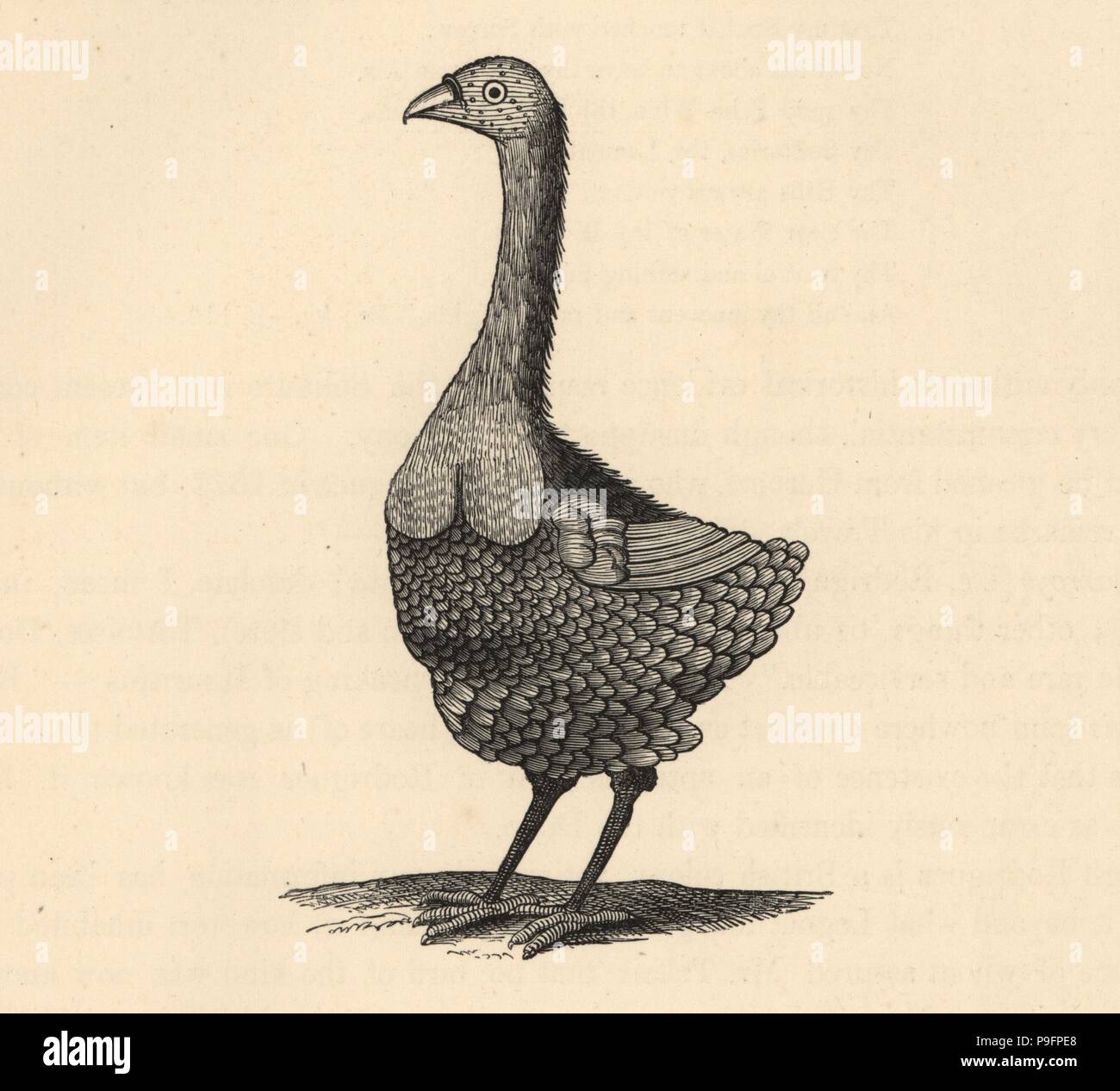 Illustration of a Rodrigues solitaire, Pezophaps solitaria, by Francois Leguat from his Voyage, published 1708. Wood engraving from Hugh Edwin Strickland and Alexander Gordon Melville's The Dodo and its Kindred, London, Reeve, Benham and Reeve, 1848. Stock Photohttps://www.alamy.com/image-license-details/?v=1https://www.alamy.com/illustration-of-a-rodrigues-solitaire-pezophaps-solitaria-by-francois-leguat-from-his-voyage-published-1708-wood-engraving-from-hugh-edwin-strickland-and-alexander-gordon-melvilles-the-dodo-and-its-kindred-london-reeve-benham-and-reeve-1848-image212403248.html
Illustration of a Rodrigues solitaire, Pezophaps solitaria, by Francois Leguat from his Voyage, published 1708. Wood engraving from Hugh Edwin Strickland and Alexander Gordon Melville's The Dodo and its Kindred, London, Reeve, Benham and Reeve, 1848. Stock Photohttps://www.alamy.com/image-license-details/?v=1https://www.alamy.com/illustration-of-a-rodrigues-solitaire-pezophaps-solitaria-by-francois-leguat-from-his-voyage-published-1708-wood-engraving-from-hugh-edwin-strickland-and-alexander-gordon-melvilles-the-dodo-and-its-kindred-london-reeve-benham-and-reeve-1848-image212403248.htmlRMP9FPE8–Illustration of a Rodrigues solitaire, Pezophaps solitaria, by Francois Leguat from his Voyage, published 1708. Wood engraving from Hugh Edwin Strickland and Alexander Gordon Melville's The Dodo and its Kindred, London, Reeve, Benham and Reeve, 1848.
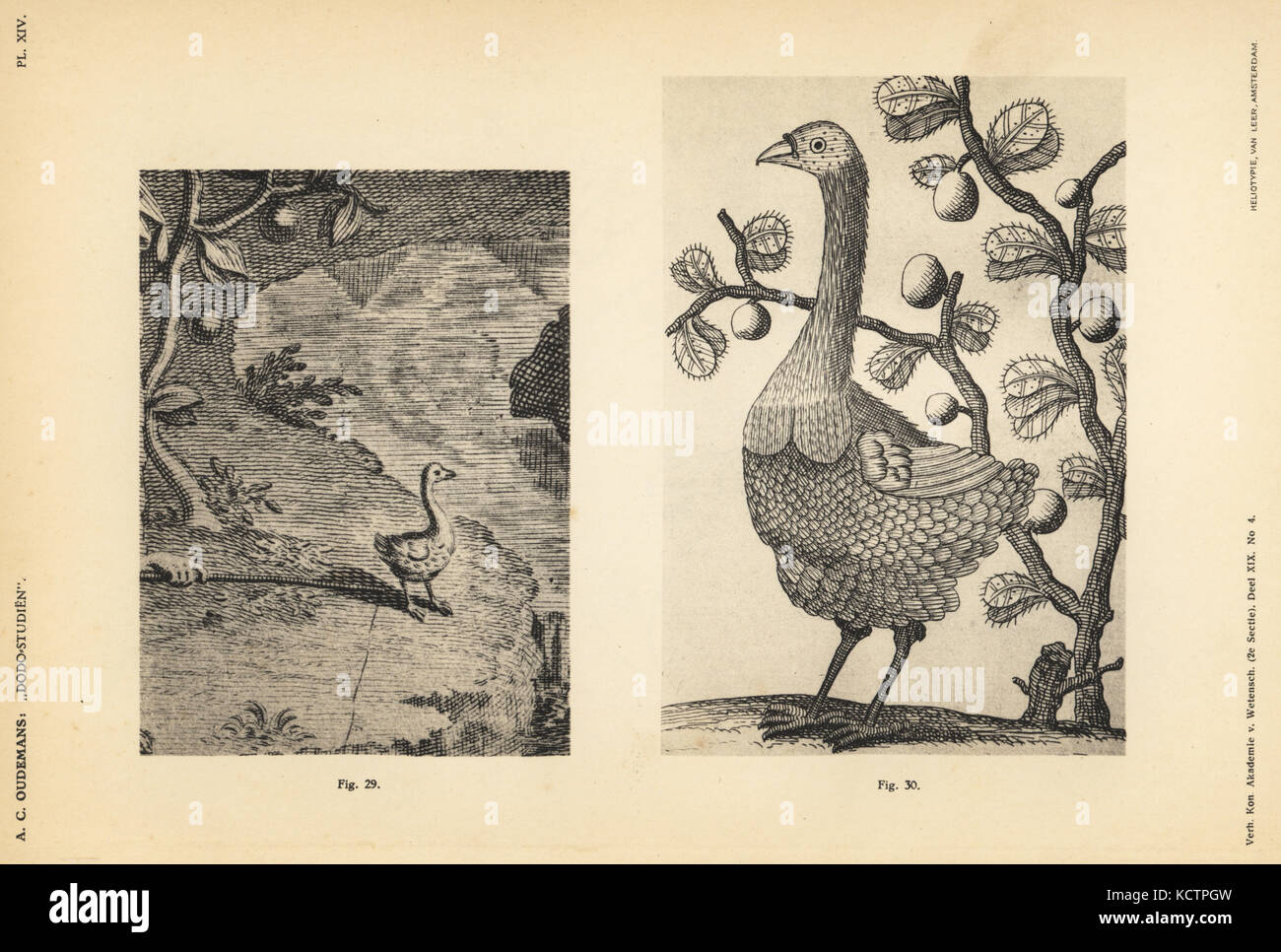 Images of a male Rodrigues solitaire, Pezophaps solitaria, from Francois Lequat's Voyages, 1708. Heliotype by Van Leer from Dr. Anthonie Cornelis Oudemans' Dodo Studies, Amsterdam, Johannes Muller, 1917. Stock Photohttps://www.alamy.com/image-license-details/?v=1https://www.alamy.com/stock-image-images-of-a-male-rodrigues-solitaire-pezophaps-solitaria-from-francois-162813753.html
Images of a male Rodrigues solitaire, Pezophaps solitaria, from Francois Lequat's Voyages, 1708. Heliotype by Van Leer from Dr. Anthonie Cornelis Oudemans' Dodo Studies, Amsterdam, Johannes Muller, 1917. Stock Photohttps://www.alamy.com/image-license-details/?v=1https://www.alamy.com/stock-image-images-of-a-male-rodrigues-solitaire-pezophaps-solitaria-from-francois-162813753.htmlRMKCTPGW–Images of a male Rodrigues solitaire, Pezophaps solitaria, from Francois Lequat's Voyages, 1708. Heliotype by Van Leer from Dr. Anthonie Cornelis Oudemans' Dodo Studies, Amsterdam, Johannes Muller, 1917.
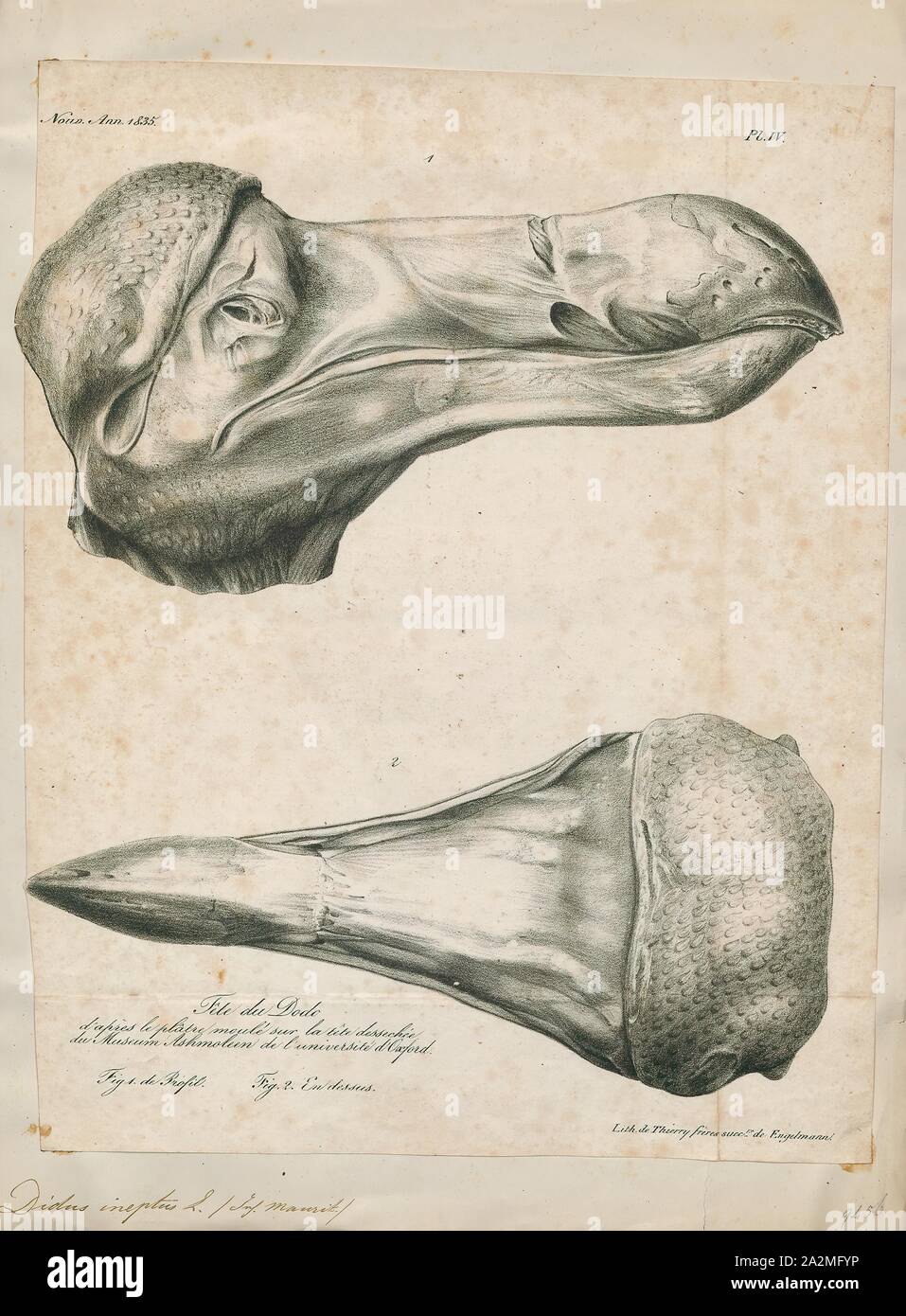 Didus ineptus, Print, The dodo (Raphus cucullatus) is an extinct flightless bird that was endemic to the island of Mauritius, east of Madagascar in the Indian Ocean. The dodo's closest genetic relative was the also-extinct Rodrigues solitaire, the two forming the subfamily Raphinae of the family of pigeons and doves. The closest living relative of the dodo is the Nicobar pigeon. A white dodo was once thought to have existed on the nearby island of Réunion, but this is now thought to have been confusion based on the Réunion ibis and paintings of white dodos., skull Stock Photohttps://www.alamy.com/image-license-details/?v=1https://www.alamy.com/didus-ineptus-print-the-dodo-raphus-cucullatus-is-an-extinct-flightless-bird-that-was-endemic-to-the-island-of-mauritius-east-of-madagascar-in-the-indian-ocean-the-dodos-closest-genetic-relative-was-the-also-extinct-rodrigues-solitaire-the-two-forming-the-subfamily-raphinae-of-the-family-of-pigeons-and-doves-the-closest-living-relative-of-the-dodo-is-the-nicobar-pigeon-a-white-dodo-was-once-thought-to-have-existed-on-the-nearby-island-of-runion-but-this-is-now-thought-to-have-been-confusion-based-on-the-runion-ibis-and-paintings-of-white-dodos-skull-image328677882.html
Didus ineptus, Print, The dodo (Raphus cucullatus) is an extinct flightless bird that was endemic to the island of Mauritius, east of Madagascar in the Indian Ocean. The dodo's closest genetic relative was the also-extinct Rodrigues solitaire, the two forming the subfamily Raphinae of the family of pigeons and doves. The closest living relative of the dodo is the Nicobar pigeon. A white dodo was once thought to have existed on the nearby island of Réunion, but this is now thought to have been confusion based on the Réunion ibis and paintings of white dodos., skull Stock Photohttps://www.alamy.com/image-license-details/?v=1https://www.alamy.com/didus-ineptus-print-the-dodo-raphus-cucullatus-is-an-extinct-flightless-bird-that-was-endemic-to-the-island-of-mauritius-east-of-madagascar-in-the-indian-ocean-the-dodos-closest-genetic-relative-was-the-also-extinct-rodrigues-solitaire-the-two-forming-the-subfamily-raphinae-of-the-family-of-pigeons-and-doves-the-closest-living-relative-of-the-dodo-is-the-nicobar-pigeon-a-white-dodo-was-once-thought-to-have-existed-on-the-nearby-island-of-runion-but-this-is-now-thought-to-have-been-confusion-based-on-the-runion-ibis-and-paintings-of-white-dodos-skull-image328677882.htmlRM2A2MFYP–Didus ineptus, Print, The dodo (Raphus cucullatus) is an extinct flightless bird that was endemic to the island of Mauritius, east of Madagascar in the Indian Ocean. The dodo's closest genetic relative was the also-extinct Rodrigues solitaire, the two forming the subfamily Raphinae of the family of pigeons and doves. The closest living relative of the dodo is the Nicobar pigeon. A white dodo was once thought to have existed on the nearby island of Réunion, but this is now thought to have been confusion based on the Réunion ibis and paintings of white dodos., skull
 Rodrigues Solitaire male pelvis. Stock Photohttps://www.alamy.com/image-license-details/?v=1https://www.alamy.com/rodrigues-solitaire-male-pelvis-image455492808.html
Rodrigues Solitaire male pelvis. Stock Photohttps://www.alamy.com/image-license-details/?v=1https://www.alamy.com/rodrigues-solitaire-male-pelvis-image455492808.htmlRM2HD1DM8–Rodrigues Solitaire male pelvis.
![Didus The Hooded Dodo [The dodo (Raphus cucullatus) is an extinct flightless bird that was endemic to the island of Mauritius, east of Madagascar in the Indian Ocean. The dodo's closest genetic relative was the also-extinct Rodrigues solitaire, the two forming the subfamily Raphinae of the family of pigeons and doves]. Copperplate engraving From the Encyclopaedia Londinensis or, Universal dictionary of arts, sciences, and literature; Volume V; Edited by Wilkes, John. Published in London in 1810 Stock Photo Didus The Hooded Dodo [The dodo (Raphus cucullatus) is an extinct flightless bird that was endemic to the island of Mauritius, east of Madagascar in the Indian Ocean. The dodo's closest genetic relative was the also-extinct Rodrigues solitaire, the two forming the subfamily Raphinae of the family of pigeons and doves]. Copperplate engraving From the Encyclopaedia Londinensis or, Universal dictionary of arts, sciences, and literature; Volume V; Edited by Wilkes, John. Published in London in 1810 Stock Photo](https://c8.alamy.com/comp/2FWK55W/didus-the-hooded-dodo-the-dodo-raphus-cucullatus-is-an-extinct-flightless-bird-that-was-endemic-to-the-island-of-mauritius-east-of-madagascar-in-the-indian-ocean-the-dodos-closest-genetic-relative-was-the-also-extinct-rodrigues-solitaire-the-two-forming-the-subfamily-raphinae-of-the-family-of-pigeons-and-doves-copperplate-engraving-from-the-encyclopaedia-londinensis-or-universal-dictionary-of-arts-sciences-and-literature-volume-v-edited-by-wilkes-john-published-in-london-in-1810-2FWK55W.jpg) Didus The Hooded Dodo [The dodo (Raphus cucullatus) is an extinct flightless bird that was endemic to the island of Mauritius, east of Madagascar in the Indian Ocean. The dodo's closest genetic relative was the also-extinct Rodrigues solitaire, the two forming the subfamily Raphinae of the family of pigeons and doves]. Copperplate engraving From the Encyclopaedia Londinensis or, Universal dictionary of arts, sciences, and literature; Volume V; Edited by Wilkes, John. Published in London in 1810 Stock Photohttps://www.alamy.com/image-license-details/?v=1https://www.alamy.com/didus-the-hooded-dodo-the-dodo-raphus-cucullatus-is-an-extinct-flightless-bird-that-was-endemic-to-the-island-of-mauritius-east-of-madagascar-in-the-indian-ocean-the-dodos-closest-genetic-relative-was-the-also-extinct-rodrigues-solitaire-the-two-forming-the-subfamily-raphinae-of-the-family-of-pigeons-and-doves-copperplate-engraving-from-the-encyclopaedia-londinensis-or-universal-dictionary-of-arts-sciences-and-literature-volume-v-edited-by-wilkes-john-published-in-london-in-1810-image428836405.html
Didus The Hooded Dodo [The dodo (Raphus cucullatus) is an extinct flightless bird that was endemic to the island of Mauritius, east of Madagascar in the Indian Ocean. The dodo's closest genetic relative was the also-extinct Rodrigues solitaire, the two forming the subfamily Raphinae of the family of pigeons and doves]. Copperplate engraving From the Encyclopaedia Londinensis or, Universal dictionary of arts, sciences, and literature; Volume V; Edited by Wilkes, John. Published in London in 1810 Stock Photohttps://www.alamy.com/image-license-details/?v=1https://www.alamy.com/didus-the-hooded-dodo-the-dodo-raphus-cucullatus-is-an-extinct-flightless-bird-that-was-endemic-to-the-island-of-mauritius-east-of-madagascar-in-the-indian-ocean-the-dodos-closest-genetic-relative-was-the-also-extinct-rodrigues-solitaire-the-two-forming-the-subfamily-raphinae-of-the-family-of-pigeons-and-doves-copperplate-engraving-from-the-encyclopaedia-londinensis-or-universal-dictionary-of-arts-sciences-and-literature-volume-v-edited-by-wilkes-john-published-in-london-in-1810-image428836405.htmlRM2FWK55W–Didus The Hooded Dodo [The dodo (Raphus cucullatus) is an extinct flightless bird that was endemic to the island of Mauritius, east of Madagascar in the Indian Ocean. The dodo's closest genetic relative was the also-extinct Rodrigues solitaire, the two forming the subfamily Raphinae of the family of pigeons and doves]. Copperplate engraving From the Encyclopaedia Londinensis or, Universal dictionary of arts, sciences, and literature; Volume V; Edited by Wilkes, John. Published in London in 1810
 The first known stalagmite-encrusted fossil Stock Photohttps://www.alamy.com/image-license-details/?v=1https://www.alamy.com/stock-photo-the-first-known-stalagmite-encrusted-fossil-173403877.html
The first known stalagmite-encrusted fossil Stock Photohttps://www.alamy.com/image-license-details/?v=1https://www.alamy.com/stock-photo-the-first-known-stalagmite-encrusted-fossil-173403877.htmlRMM236BH–The first known stalagmite-encrusted fossil
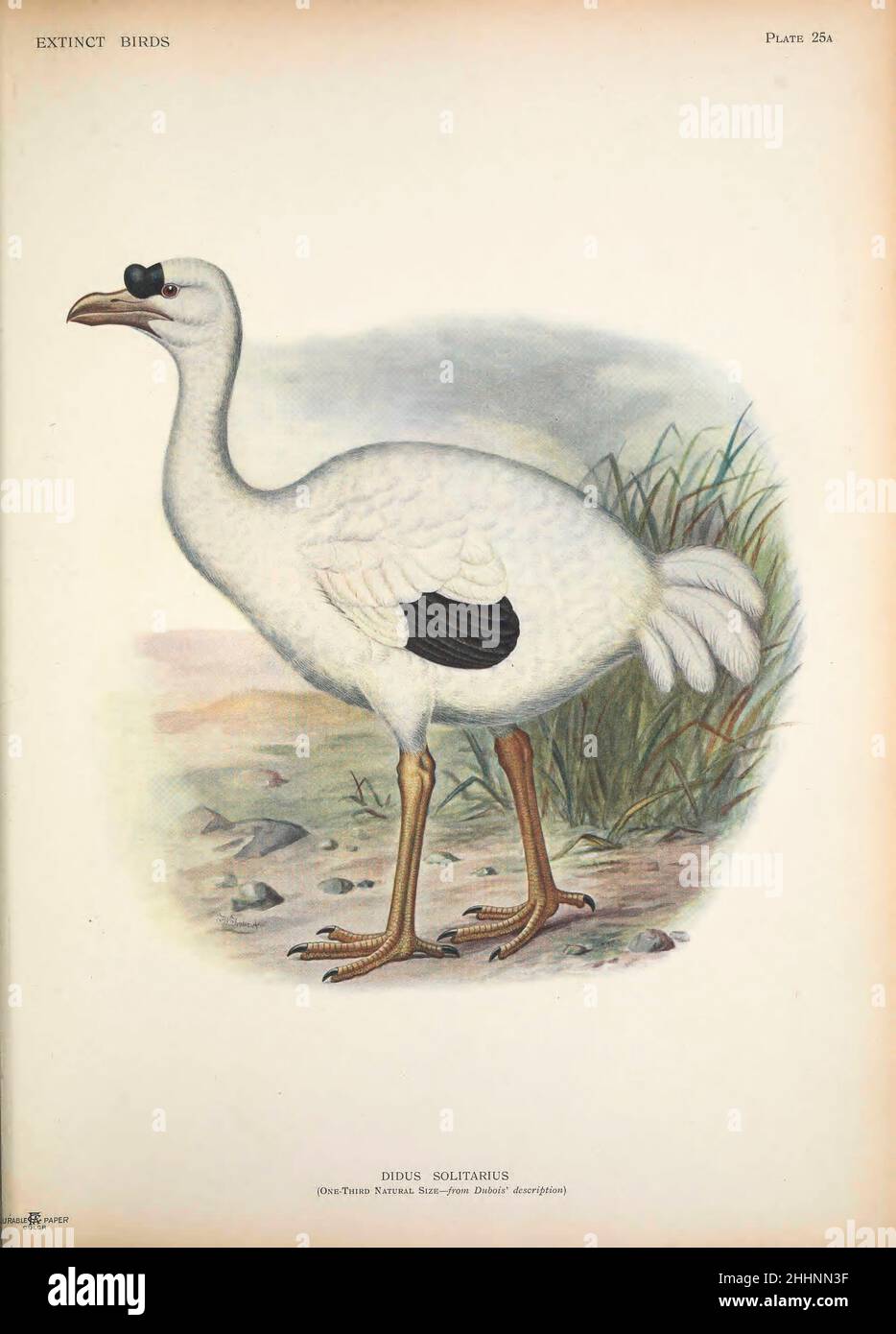 The Rodrigues solitaire (Pezophaps solitaria here as Didus solitarius) is an extinct flightless bird that was endemic to the island of Rodrigues, east of Madagascar in the Indian Ocean. Genetically within the family of pigeons and doves, it was most closely related to the also extinct dodo of the nearby island Mauritius, the two forming the subfamily Raphinae. The Nicobar pigeon is their closest living genetic relative. from ' Extinct birds ' : an attempt to unite in one volume a short account of those birds which have become extinct in historical times : that is, within the last six or seven Stock Photohttps://www.alamy.com/image-license-details/?v=1https://www.alamy.com/the-rodrigues-solitaire-pezophaps-solitaria-here-as-didus-solitarius-is-an-extinct-flightless-bird-that-was-endemic-to-the-island-of-rodrigues-east-of-madagascar-in-the-indian-ocean-genetically-within-the-family-of-pigeons-and-doves-it-was-most-closely-related-to-the-also-extinct-dodo-of-the-nearby-island-mauritius-the-two-forming-the-subfamily-raphinae-the-nicobar-pigeon-is-their-closest-living-genetic-relative-from-extinct-birds-an-attempt-to-unite-in-one-volume-a-short-account-of-those-birds-which-have-become-extinct-in-historical-times-that-is-within-the-last-six-or-seven-image458396275.html
The Rodrigues solitaire (Pezophaps solitaria here as Didus solitarius) is an extinct flightless bird that was endemic to the island of Rodrigues, east of Madagascar in the Indian Ocean. Genetically within the family of pigeons and doves, it was most closely related to the also extinct dodo of the nearby island Mauritius, the two forming the subfamily Raphinae. The Nicobar pigeon is their closest living genetic relative. from ' Extinct birds ' : an attempt to unite in one volume a short account of those birds which have become extinct in historical times : that is, within the last six or seven Stock Photohttps://www.alamy.com/image-license-details/?v=1https://www.alamy.com/the-rodrigues-solitaire-pezophaps-solitaria-here-as-didus-solitarius-is-an-extinct-flightless-bird-that-was-endemic-to-the-island-of-rodrigues-east-of-madagascar-in-the-indian-ocean-genetically-within-the-family-of-pigeons-and-doves-it-was-most-closely-related-to-the-also-extinct-dodo-of-the-nearby-island-mauritius-the-two-forming-the-subfamily-raphinae-the-nicobar-pigeon-is-their-closest-living-genetic-relative-from-extinct-birds-an-attempt-to-unite-in-one-volume-a-short-account-of-those-birds-which-have-become-extinct-in-historical-times-that-is-within-the-last-six-or-seven-image458396275.htmlRF2HHNN3F–The Rodrigues solitaire (Pezophaps solitaria here as Didus solitarius) is an extinct flightless bird that was endemic to the island of Rodrigues, east of Madagascar in the Indian Ocean. Genetically within the family of pigeons and doves, it was most closely related to the also extinct dodo of the nearby island Mauritius, the two forming the subfamily Raphinae. The Nicobar pigeon is their closest living genetic relative. from ' Extinct birds ' : an attempt to unite in one volume a short account of those birds which have become extinct in historical times : that is, within the last six or seven
 Pezophaps pelvis and gizzard stone Stock Photohttps://www.alamy.com/image-license-details/?v=1https://www.alamy.com/pezophaps-pelvis-and-gizzard-stone-image260866164.html
Pezophaps pelvis and gizzard stone Stock Photohttps://www.alamy.com/image-license-details/?v=1https://www.alamy.com/pezophaps-pelvis-and-gizzard-stone-image260866164.htmlRMW4BDCM–Pezophaps pelvis and gizzard stone
 Rodrigues solitaire, illustration Stock Photohttps://www.alamy.com/image-license-details/?v=1https://www.alamy.com/rodrigues-solitaire-illustration-image568313299.html
Rodrigues solitaire, illustration Stock Photohttps://www.alamy.com/image-license-details/?v=1https://www.alamy.com/rodrigues-solitaire-illustration-image568313299.htmlRF2T0GWBF–Rodrigues solitaire, illustration
 Rodrigues solitaire Stock Photohttps://www.alamy.com/image-license-details/?v=1https://www.alamy.com/rodrigues-solitaire-image544037365.html
Rodrigues solitaire Stock Photohttps://www.alamy.com/image-license-details/?v=1https://www.alamy.com/rodrigues-solitaire-image544037365.htmlRM2PH315W–Rodrigues solitaire
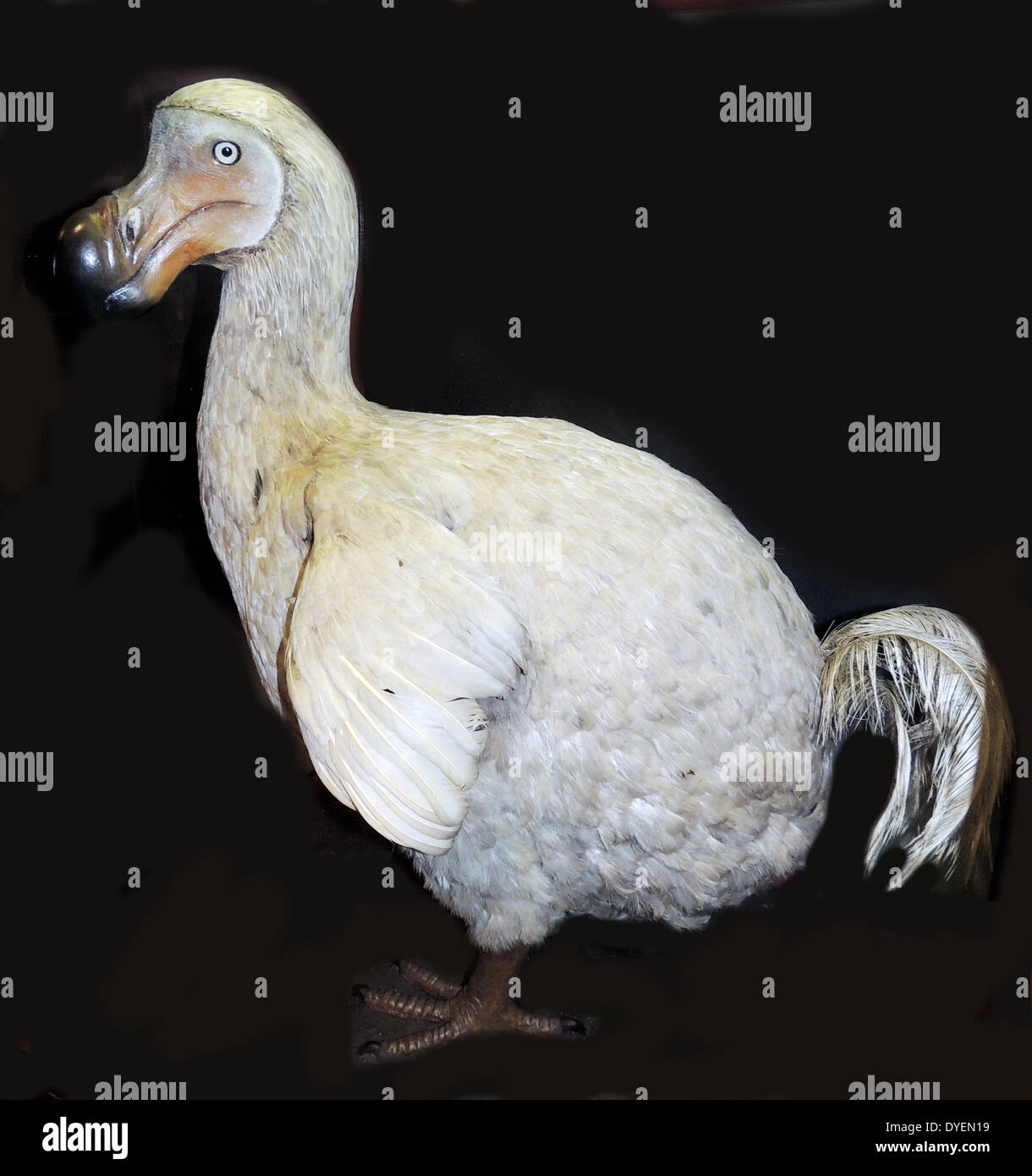 The Dodo (Raphus cucullatus) an extinct flightless bird that was endemic to the island of Mauritius, east of Madagascar in the Indian Ocean. Its closest genetic relative was the also extinct Rodrigues Solitaire, the two forming the subfamily Raphinae of the family of pigeons and doves. Stock Photohttps://www.alamy.com/image-license-details/?v=1https://www.alamy.com/the-dodo-raphus-cucullatus-an-extinct-flightless-bird-that-was-endemic-image68550645.html
The Dodo (Raphus cucullatus) an extinct flightless bird that was endemic to the island of Mauritius, east of Madagascar in the Indian Ocean. Its closest genetic relative was the also extinct Rodrigues Solitaire, the two forming the subfamily Raphinae of the family of pigeons and doves. Stock Photohttps://www.alamy.com/image-license-details/?v=1https://www.alamy.com/the-dodo-raphus-cucullatus-an-extinct-flightless-bird-that-was-endemic-image68550645.htmlRMDYEN19–The Dodo (Raphus cucullatus) an extinct flightless bird that was endemic to the island of Mauritius, east of Madagascar in the Indian Ocean. Its closest genetic relative was the also extinct Rodrigues Solitaire, the two forming the subfamily Raphinae of the family of pigeons and doves.
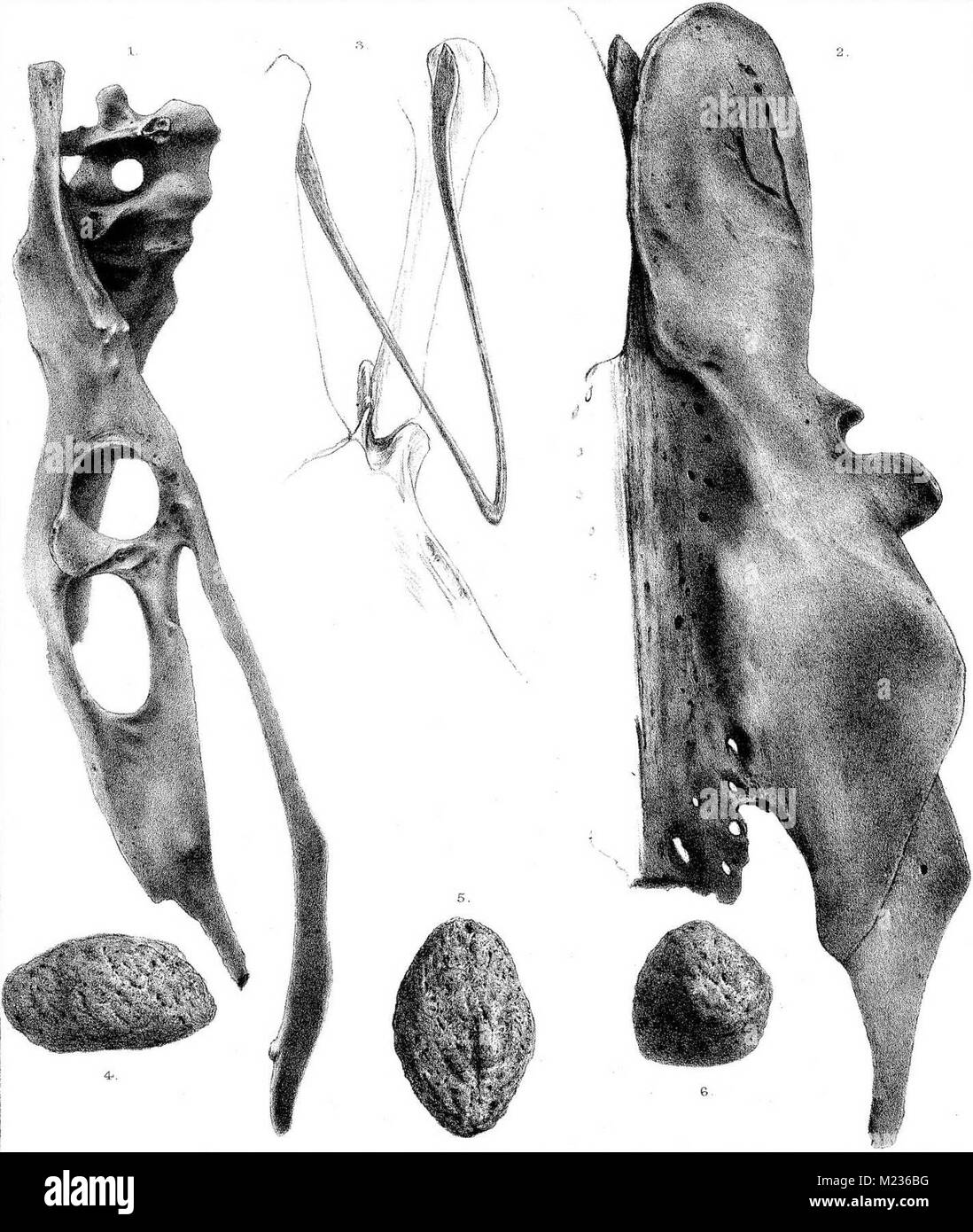 The Rodrigues solitaire (Pezophaps solitaria) Stock Photohttps://www.alamy.com/image-license-details/?v=1https://www.alamy.com/stock-photo-the-rodrigues-solitaire-pezophaps-solitaria-173403876.html
The Rodrigues solitaire (Pezophaps solitaria) Stock Photohttps://www.alamy.com/image-license-details/?v=1https://www.alamy.com/stock-photo-the-rodrigues-solitaire-pezophaps-solitaria-173403876.htmlRMM236BG–The Rodrigues solitaire (Pezophaps solitaria)
 Rodrigues Solitaire Stock Photohttps://www.alamy.com/image-license-details/?v=1https://www.alamy.com/stock-photo-rodrigues-solitaire-140398539.html
Rodrigues Solitaire Stock Photohttps://www.alamy.com/image-license-details/?v=1https://www.alamy.com/stock-photo-rodrigues-solitaire-140398539.htmlRMJ4BKNF–Rodrigues Solitaire
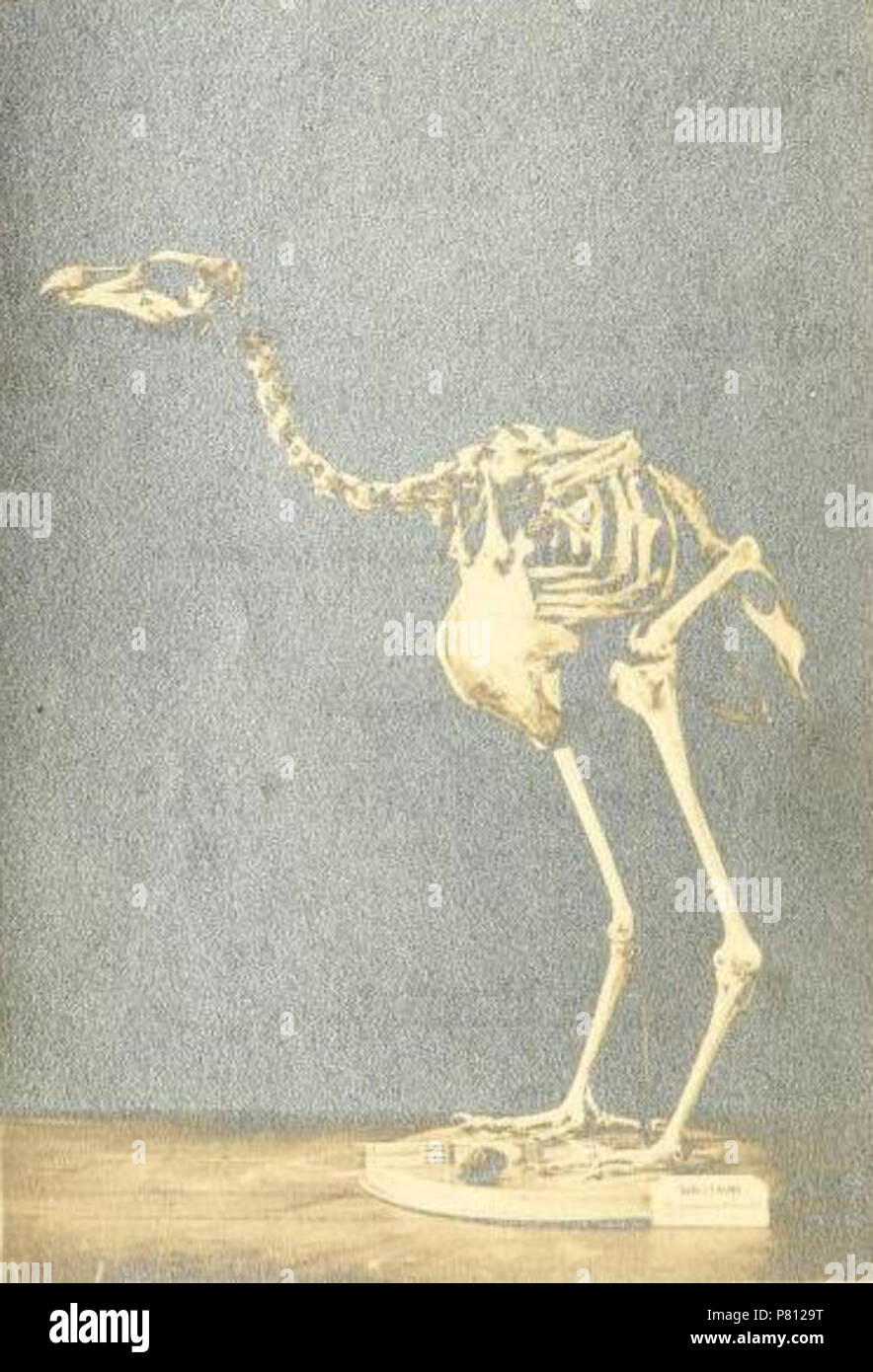 English: skeleton of a Rodrigues Solitaire Pezophaps solitaria . 19 October 2013, 15:18:29 335 Rodrigues Solitaire skeleton Stock Photohttps://www.alamy.com/image-license-details/?v=1https://www.alamy.com/english-skeleton-of-a-rodrigues-solitaire-pezophaps-solitaria-19-october-2013-151829-335-rodrigues-solitaire-skeleton-image211465460.html
English: skeleton of a Rodrigues Solitaire Pezophaps solitaria . 19 October 2013, 15:18:29 335 Rodrigues Solitaire skeleton Stock Photohttps://www.alamy.com/image-license-details/?v=1https://www.alamy.com/english-skeleton-of-a-rodrigues-solitaire-pezophaps-solitaria-19-october-2013-151829-335-rodrigues-solitaire-skeleton-image211465460.htmlRMP8129T–English: skeleton of a Rodrigues Solitaire Pezophaps solitaria . 19 October 2013, 15:18:29 335 Rodrigues Solitaire skeleton
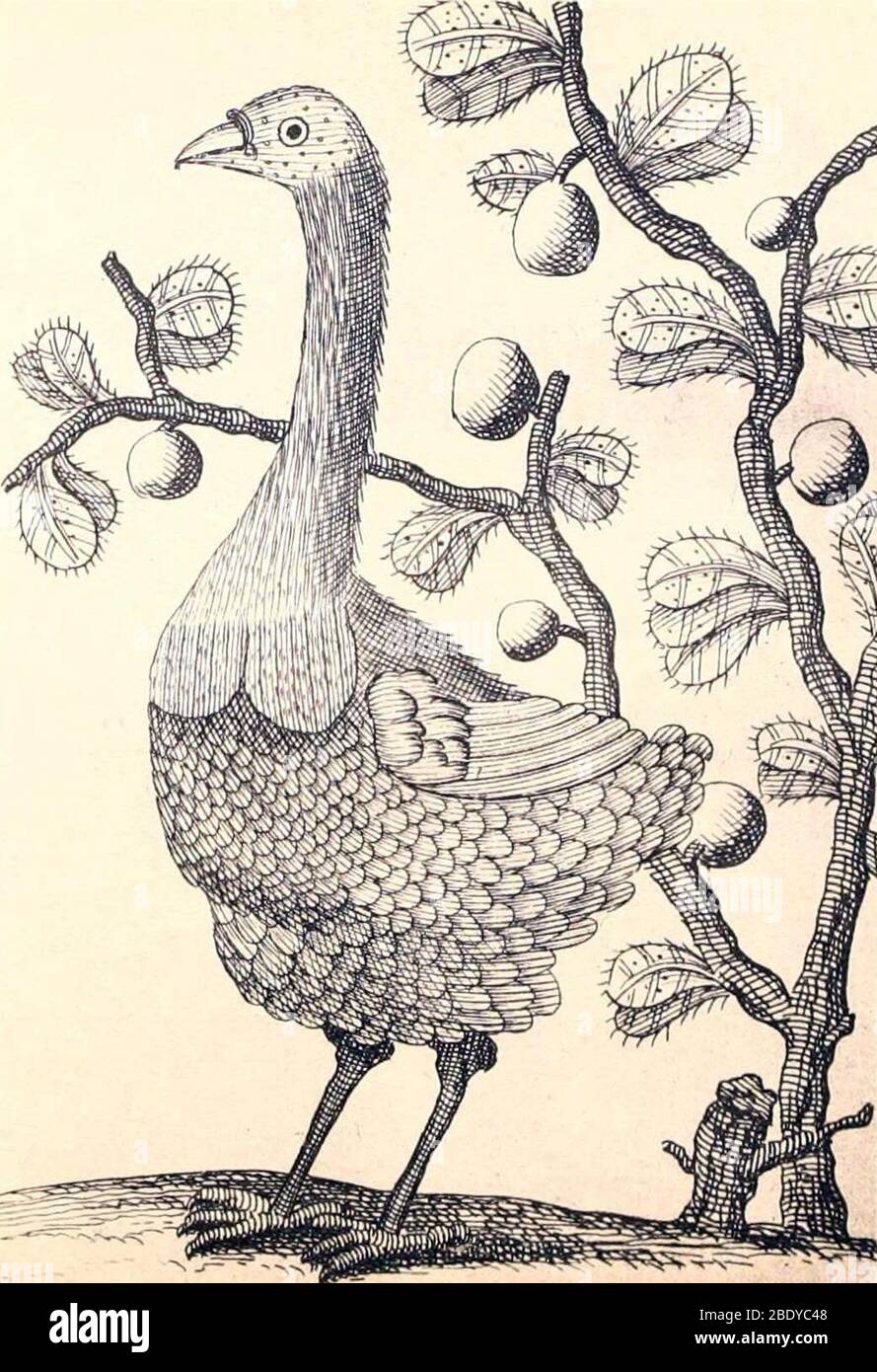 Dodo, Rodriguez solitaire Stock Photohttps://www.alamy.com/image-license-details/?v=1https://www.alamy.com/dodo-rodriguez-solitaire-image352800120.html
Dodo, Rodriguez solitaire Stock Photohttps://www.alamy.com/image-license-details/?v=1https://www.alamy.com/dodo-rodriguez-solitaire-image352800120.htmlRM2BDYC48–Dodo, Rodriguez solitaire
 Rodrigues Solitaire. Stock Photohttps://www.alamy.com/image-license-details/?v=1https://www.alamy.com/rodrigues-solitaire-image455492814.html
Rodrigues Solitaire. Stock Photohttps://www.alamy.com/image-license-details/?v=1https://www.alamy.com/rodrigues-solitaire-image455492814.htmlRM2HD1DME–Rodrigues Solitaire.
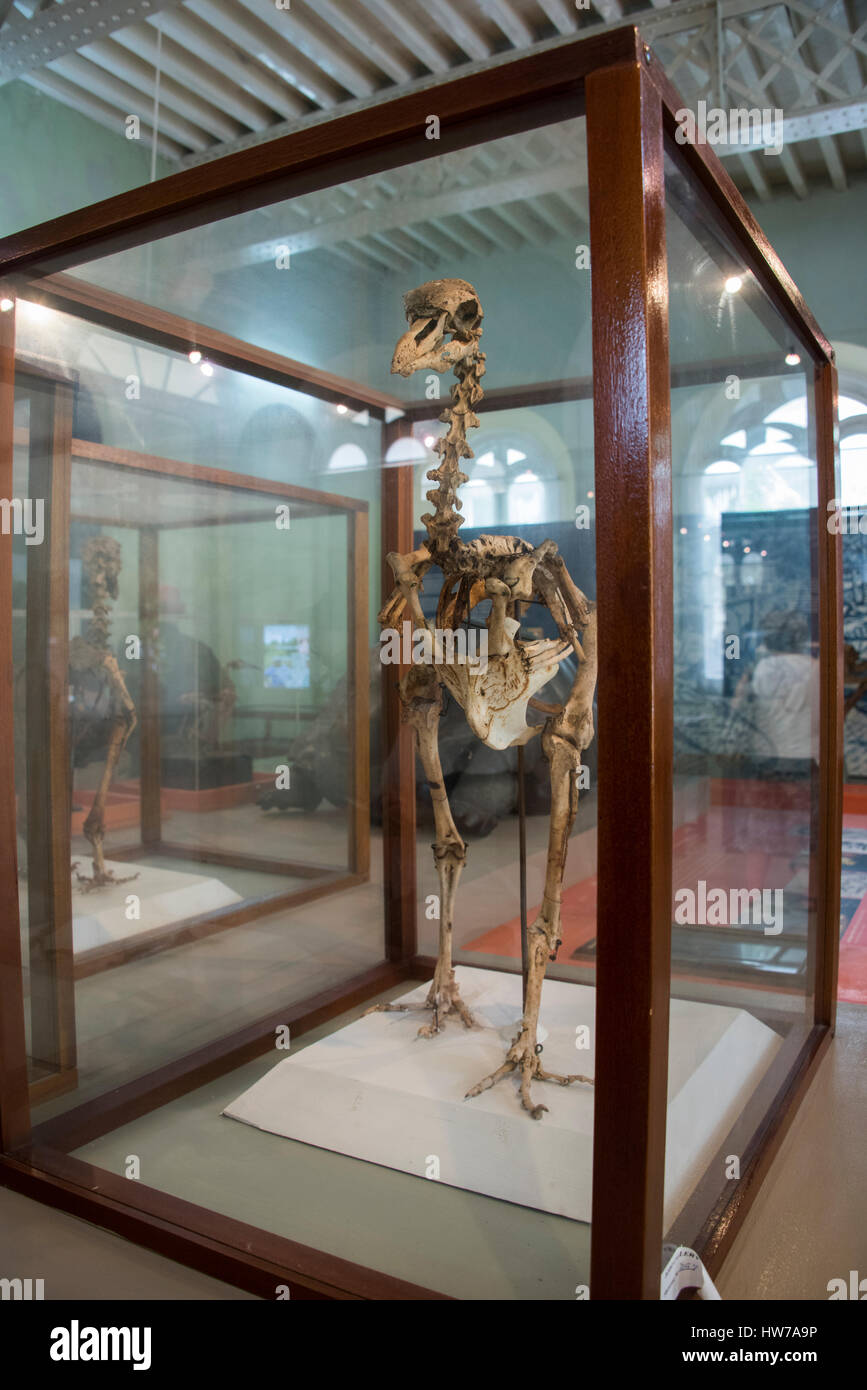 Mauritius, Capital city of Port Louis. Natural History Museum aka Mauritius Institute. Skeletal display of the extinct Rodrigues Solitaire (Pezophaps Stock Photohttps://www.alamy.com/image-license-details/?v=1https://www.alamy.com/stock-photo-mauritius-capital-city-of-port-louis-natural-history-museum-aka-mauritius-136000754.html
Mauritius, Capital city of Port Louis. Natural History Museum aka Mauritius Institute. Skeletal display of the extinct Rodrigues Solitaire (Pezophaps Stock Photohttps://www.alamy.com/image-license-details/?v=1https://www.alamy.com/stock-photo-mauritius-capital-city-of-port-louis-natural-history-museum-aka-mauritius-136000754.htmlRMHW7A9P–Mauritius, Capital city of Port Louis. Natural History Museum aka Mauritius Institute. Skeletal display of the extinct Rodrigues Solitaire (Pezophaps
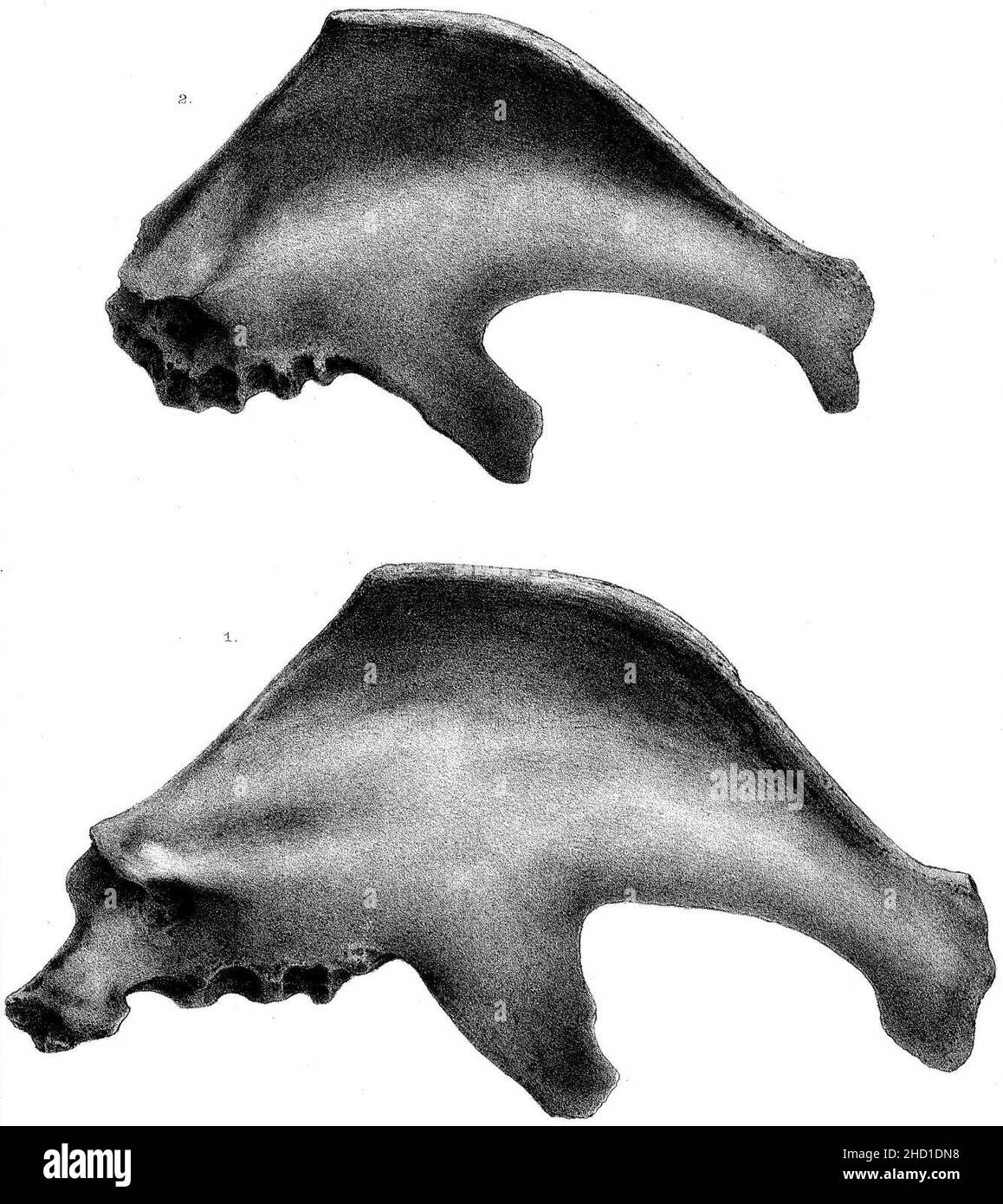 Rodrigues Solitaire sterna. Stock Photohttps://www.alamy.com/image-license-details/?v=1https://www.alamy.com/rodrigues-solitaire-sterna-image455492836.html
Rodrigues Solitaire sterna. Stock Photohttps://www.alamy.com/image-license-details/?v=1https://www.alamy.com/rodrigues-solitaire-sterna-image455492836.htmlRM2HD1DN8–Rodrigues Solitaire sterna.
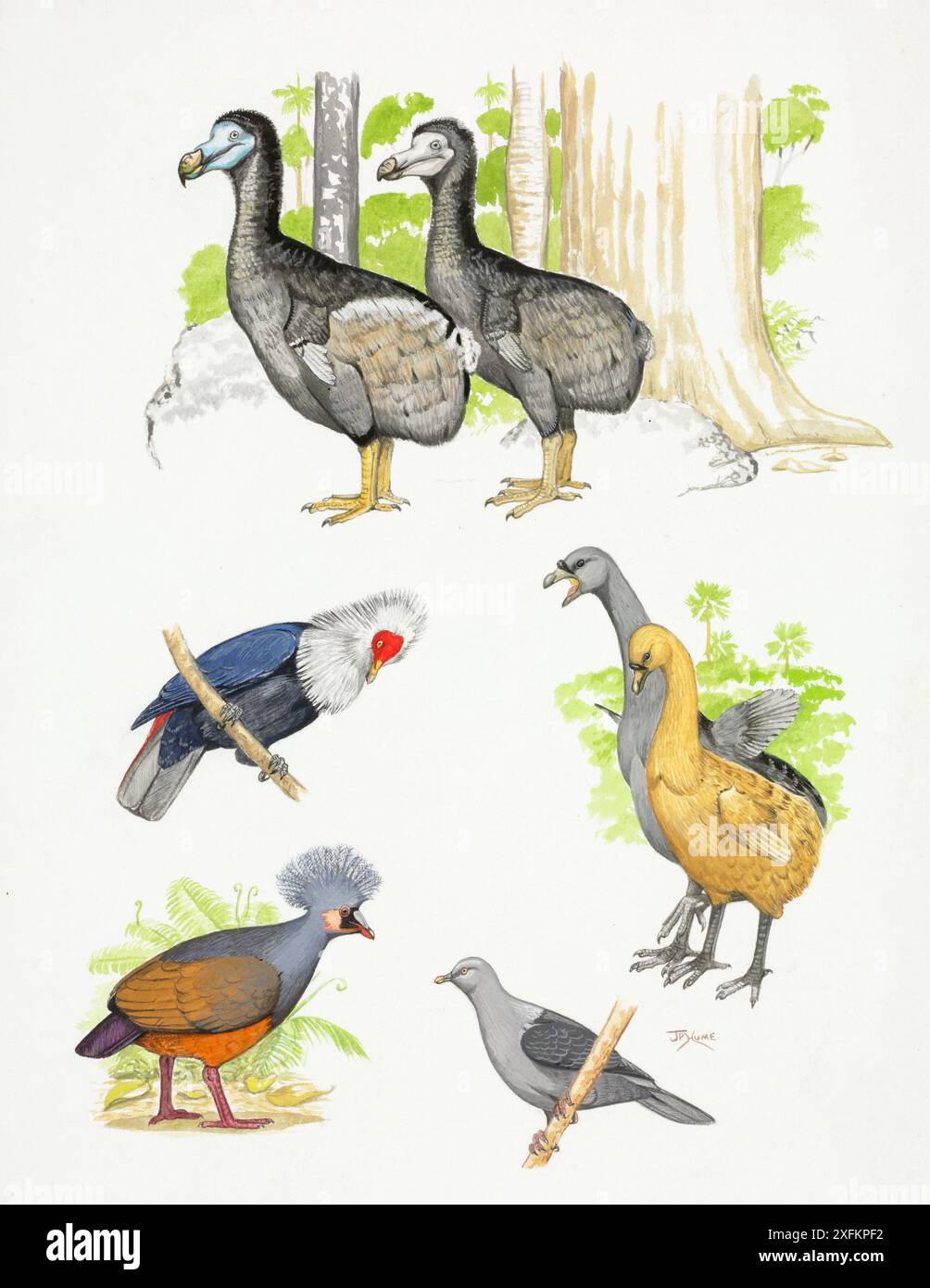 Extinct pigeons. Clockwise from top left: Dodo (Raphus cucullatus) Extinct circa.1690, Rodrigues solitaire (Pezophaps solitaria) extinct, circa.1760, Rodrigues turtle dove (Nesoenas rodericana) extinct. circa 1750, Choiseul ground pigeon (Microgoura meeki) extinct 1904; Mauritius blue pigeon (Alectroenas nitidissima) extinct 1837 Stock Photohttps://www.alamy.com/image-license-details/?v=1https://www.alamy.com/extinct-pigeons-clockwise-from-top-left-dodo-raphus-cucullatus-extinct-circa1690-rodrigues-solitaire-pezophaps-solitaria-extinct-circa1760-rodrigues-turtle-dove-nesoenas-rodericana-extinct-circa-1750-choiseul-ground-pigeon-microgoura-meeki-extinct-1904-mauritius-blue-pigeon-alectroenas-nitidissima-extinct-1837-image612017478.html
Extinct pigeons. Clockwise from top left: Dodo (Raphus cucullatus) Extinct circa.1690, Rodrigues solitaire (Pezophaps solitaria) extinct, circa.1760, Rodrigues turtle dove (Nesoenas rodericana) extinct. circa 1750, Choiseul ground pigeon (Microgoura meeki) extinct 1904; Mauritius blue pigeon (Alectroenas nitidissima) extinct 1837 Stock Photohttps://www.alamy.com/image-license-details/?v=1https://www.alamy.com/extinct-pigeons-clockwise-from-top-left-dodo-raphus-cucullatus-extinct-circa1690-rodrigues-solitaire-pezophaps-solitaria-extinct-circa1760-rodrigues-turtle-dove-nesoenas-rodericana-extinct-circa-1750-choiseul-ground-pigeon-microgoura-meeki-extinct-1904-mauritius-blue-pigeon-alectroenas-nitidissima-extinct-1837-image612017478.htmlRM2XFKPF2–Extinct pigeons. Clockwise from top left: Dodo (Raphus cucullatus) Extinct circa.1690, Rodrigues solitaire (Pezophaps solitaria) extinct, circa.1760, Rodrigues turtle dove (Nesoenas rodericana) extinct. circa 1750, Choiseul ground pigeon (Microgoura meeki) extinct 1904; Mauritius blue pigeon (Alectroenas nitidissima) extinct 1837
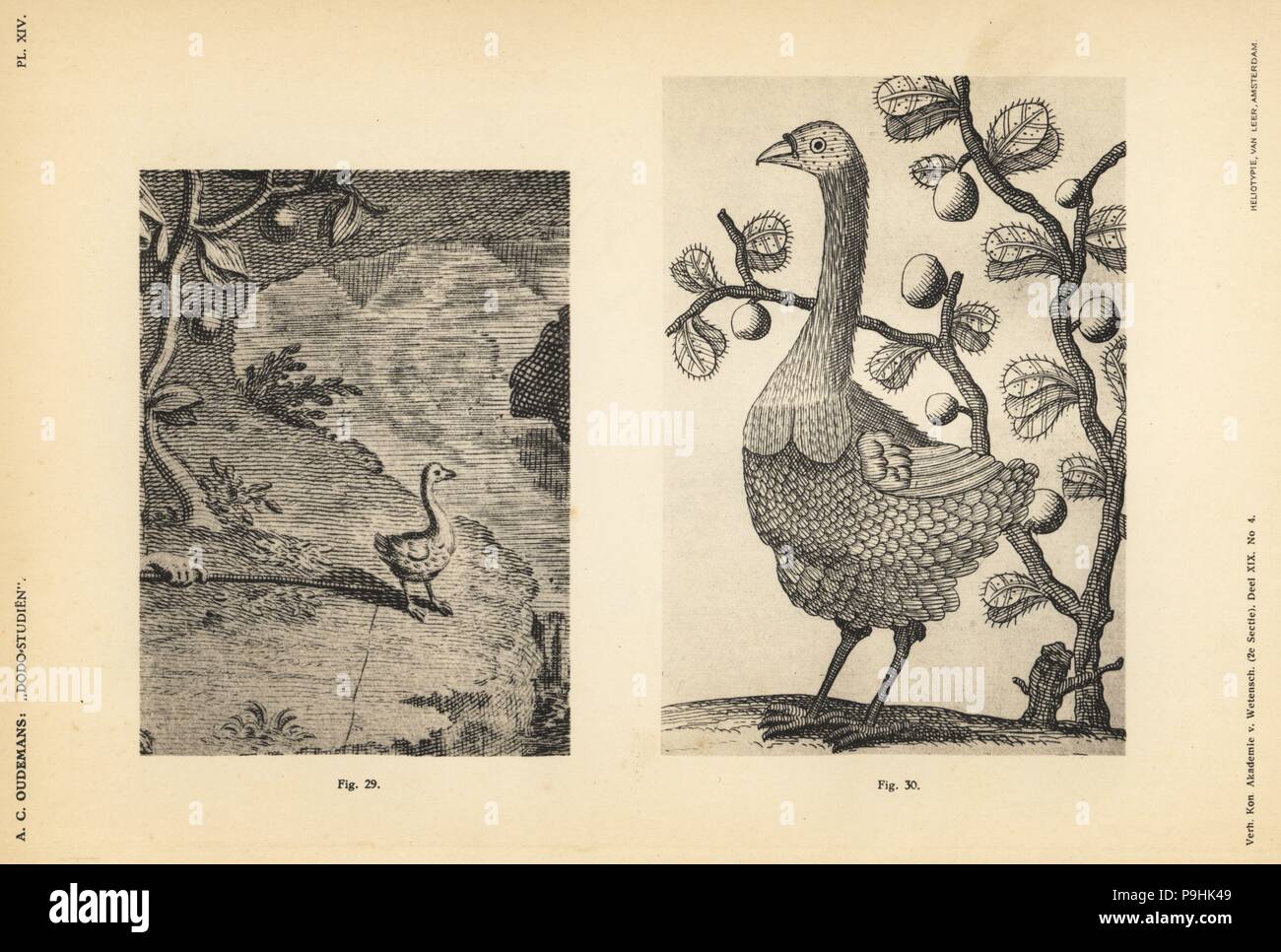 Images of a male Rodrigues solitaire, Pezophaps solitaria, from Francois Lequat's Voyages, 1708. Heliotype by Van Leer from Dr. Anthonie Cornelis Oudemans' Dodo Studies, Amsterdam, Johannes Muller, 1917. Stock Photohttps://www.alamy.com/image-license-details/?v=1https://www.alamy.com/images-of-a-male-rodrigues-solitaire-pezophaps-solitaria-from-francois-lequats-voyages-1708-heliotype-by-van-leer-from-dr-anthonie-cornelis-oudemans-dodo-studies-amsterdam-johannes-muller-1917-image212444521.html
Images of a male Rodrigues solitaire, Pezophaps solitaria, from Francois Lequat's Voyages, 1708. Heliotype by Van Leer from Dr. Anthonie Cornelis Oudemans' Dodo Studies, Amsterdam, Johannes Muller, 1917. Stock Photohttps://www.alamy.com/image-license-details/?v=1https://www.alamy.com/images-of-a-male-rodrigues-solitaire-pezophaps-solitaria-from-francois-lequats-voyages-1708-heliotype-by-van-leer-from-dr-anthonie-cornelis-oudemans-dodo-studies-amsterdam-johannes-muller-1917-image212444521.htmlRMP9HK49–Images of a male Rodrigues solitaire, Pezophaps solitaria, from Francois Lequat's Voyages, 1708. Heliotype by Van Leer from Dr. Anthonie Cornelis Oudemans' Dodo Studies, Amsterdam, Johannes Muller, 1917.
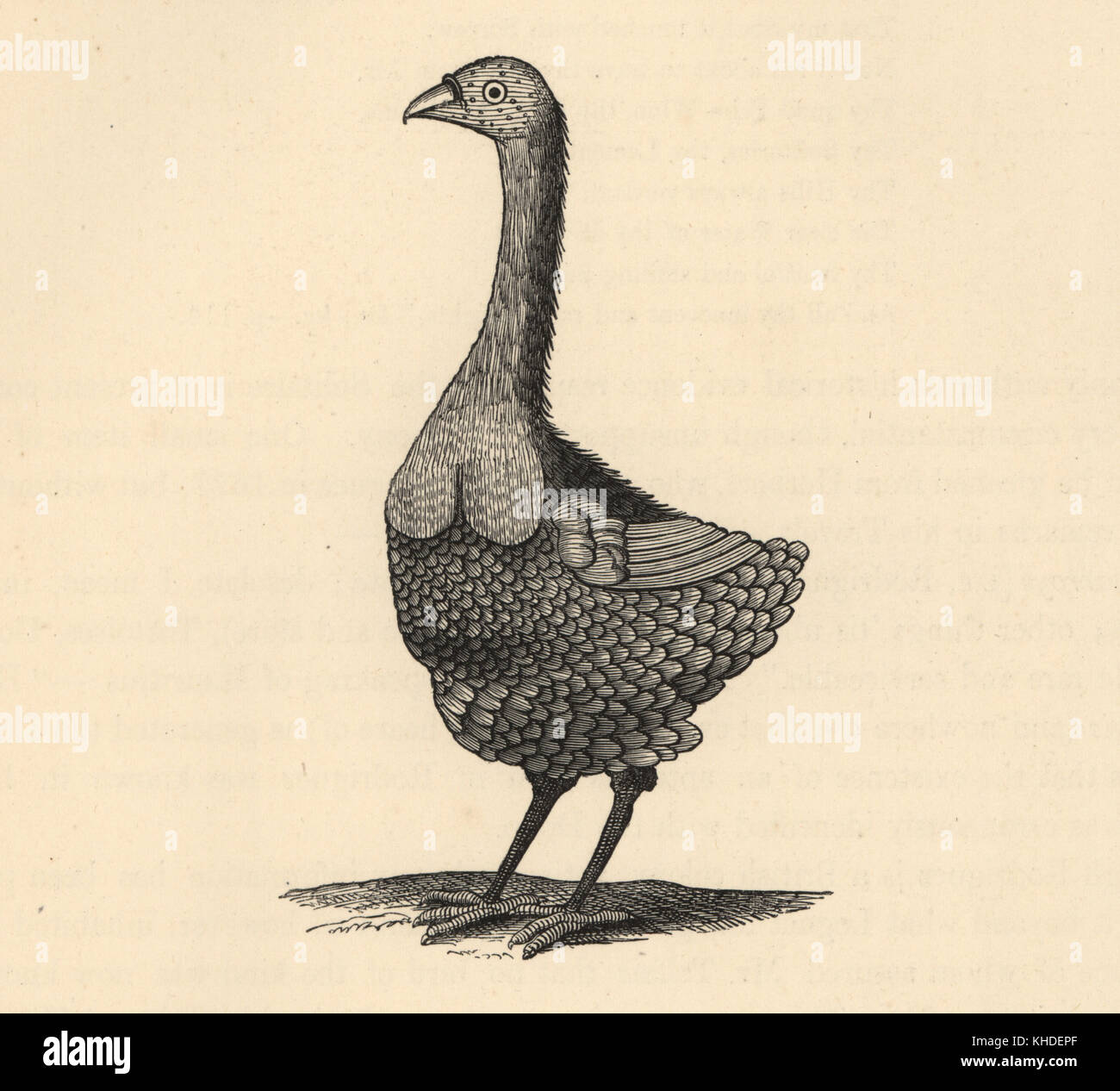 Illustration of a Rodrigues solitaire, Pezophaps solitaria, by Francois Leguat from his Voyage, published 1708. Wood engraving from Hugh Edwin Strickland and Alexander Gordon Melville's The Dodo and its Kindred, London, Reeve, Benham and Reeve, 1848. Stock Photohttps://www.alamy.com/image-license-details/?v=1https://www.alamy.com/stock-image-illustration-of-a-rodrigues-solitaire-pezophaps-solitaria-by-francois-165639447.html
Illustration of a Rodrigues solitaire, Pezophaps solitaria, by Francois Leguat from his Voyage, published 1708. Wood engraving from Hugh Edwin Strickland and Alexander Gordon Melville's The Dodo and its Kindred, London, Reeve, Benham and Reeve, 1848. Stock Photohttps://www.alamy.com/image-license-details/?v=1https://www.alamy.com/stock-image-illustration-of-a-rodrigues-solitaire-pezophaps-solitaria-by-francois-165639447.htmlRMKHDEPF–Illustration of a Rodrigues solitaire, Pezophaps solitaria, by Francois Leguat from his Voyage, published 1708. Wood engraving from Hugh Edwin Strickland and Alexander Gordon Melville's The Dodo and its Kindred, London, Reeve, Benham and Reeve, 1848.
 Caloenas nicobarica, Print, The Nicobar pigeon (Caloenas nicobarica) is a pigeon found on small islands and in coastal regions from the Andaman and Nicobar Islands, India, east through the Malay Archipelago, to the Solomons and Palau. It is the only living member of the genus Caloenas and might be the closest living relative of the extinct dodo, and extinct Rodrigues solitaire., 1700-1880 Stock Photohttps://www.alamy.com/image-license-details/?v=1https://www.alamy.com/caloenas-nicobarica-print-the-nicobar-pigeon-caloenas-nicobarica-is-a-pigeon-found-on-small-islands-and-in-coastal-regions-from-the-andaman-and-nicobar-islands-india-east-through-the-malay-archipelago-to-the-solomons-and-palau-it-is-the-only-living-member-of-the-genus-caloenas-and-might-be-the-closest-living-relative-of-the-extinct-dodo-and-extinct-rodrigues-solitaire-1700-1880-image328669291.html
Caloenas nicobarica, Print, The Nicobar pigeon (Caloenas nicobarica) is a pigeon found on small islands and in coastal regions from the Andaman and Nicobar Islands, India, east through the Malay Archipelago, to the Solomons and Palau. It is the only living member of the genus Caloenas and might be the closest living relative of the extinct dodo, and extinct Rodrigues solitaire., 1700-1880 Stock Photohttps://www.alamy.com/image-license-details/?v=1https://www.alamy.com/caloenas-nicobarica-print-the-nicobar-pigeon-caloenas-nicobarica-is-a-pigeon-found-on-small-islands-and-in-coastal-regions-from-the-andaman-and-nicobar-islands-india-east-through-the-malay-archipelago-to-the-solomons-and-palau-it-is-the-only-living-member-of-the-genus-caloenas-and-might-be-the-closest-living-relative-of-the-extinct-dodo-and-extinct-rodrigues-solitaire-1700-1880-image328669291.htmlRM2A2M50Y–Caloenas nicobarica, Print, The Nicobar pigeon (Caloenas nicobarica) is a pigeon found on small islands and in coastal regions from the Andaman and Nicobar Islands, India, east through the Malay Archipelago, to the Solomons and Palau. It is the only living member of the genus Caloenas and might be the closest living relative of the extinct dodo, and extinct Rodrigues solitaire., 1700-1880
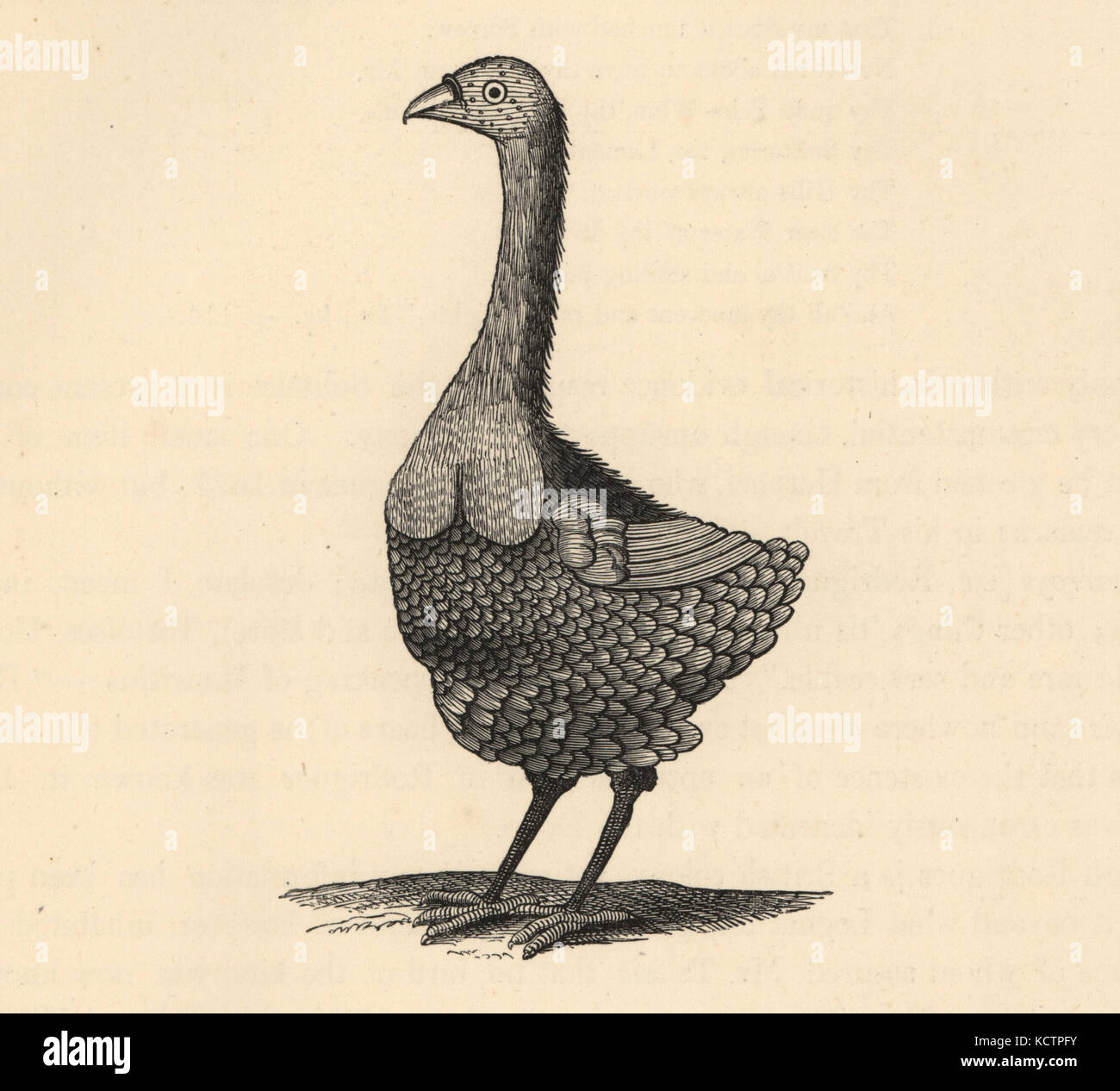 Illustration of a Rodrigues solitaire, Pezophaps solitaria, by Francois Leguat from his Voyage, published 1708. Wood engraving from Hugh Edwin Strickland and Alexander Gordon Melville's The Dodo and its Kindred, London, Reeve, Benham and Reeve, 1848. Stock Photohttps://www.alamy.com/image-license-details/?v=1https://www.alamy.com/stock-image-illustration-of-a-rodrigues-solitaire-pezophaps-solitaria-by-francois-162813727.html
Illustration of a Rodrigues solitaire, Pezophaps solitaria, by Francois Leguat from his Voyage, published 1708. Wood engraving from Hugh Edwin Strickland and Alexander Gordon Melville's The Dodo and its Kindred, London, Reeve, Benham and Reeve, 1848. Stock Photohttps://www.alamy.com/image-license-details/?v=1https://www.alamy.com/stock-image-illustration-of-a-rodrigues-solitaire-pezophaps-solitaria-by-francois-162813727.htmlRMKCTPFY–Illustration of a Rodrigues solitaire, Pezophaps solitaria, by Francois Leguat from his Voyage, published 1708. Wood engraving from Hugh Edwin Strickland and Alexander Gordon Melville's The Dodo and its Kindred, London, Reeve, Benham and Reeve, 1848.
 Rodrigues Solitaire skeleton. Stock Photohttps://www.alamy.com/image-license-details/?v=1https://www.alamy.com/rodrigues-solitaire-skeleton-image455492805.html
Rodrigues Solitaire skeleton. Stock Photohttps://www.alamy.com/image-license-details/?v=1https://www.alamy.com/rodrigues-solitaire-skeleton-image455492805.htmlRM2HD1DM5–Rodrigues Solitaire skeleton.
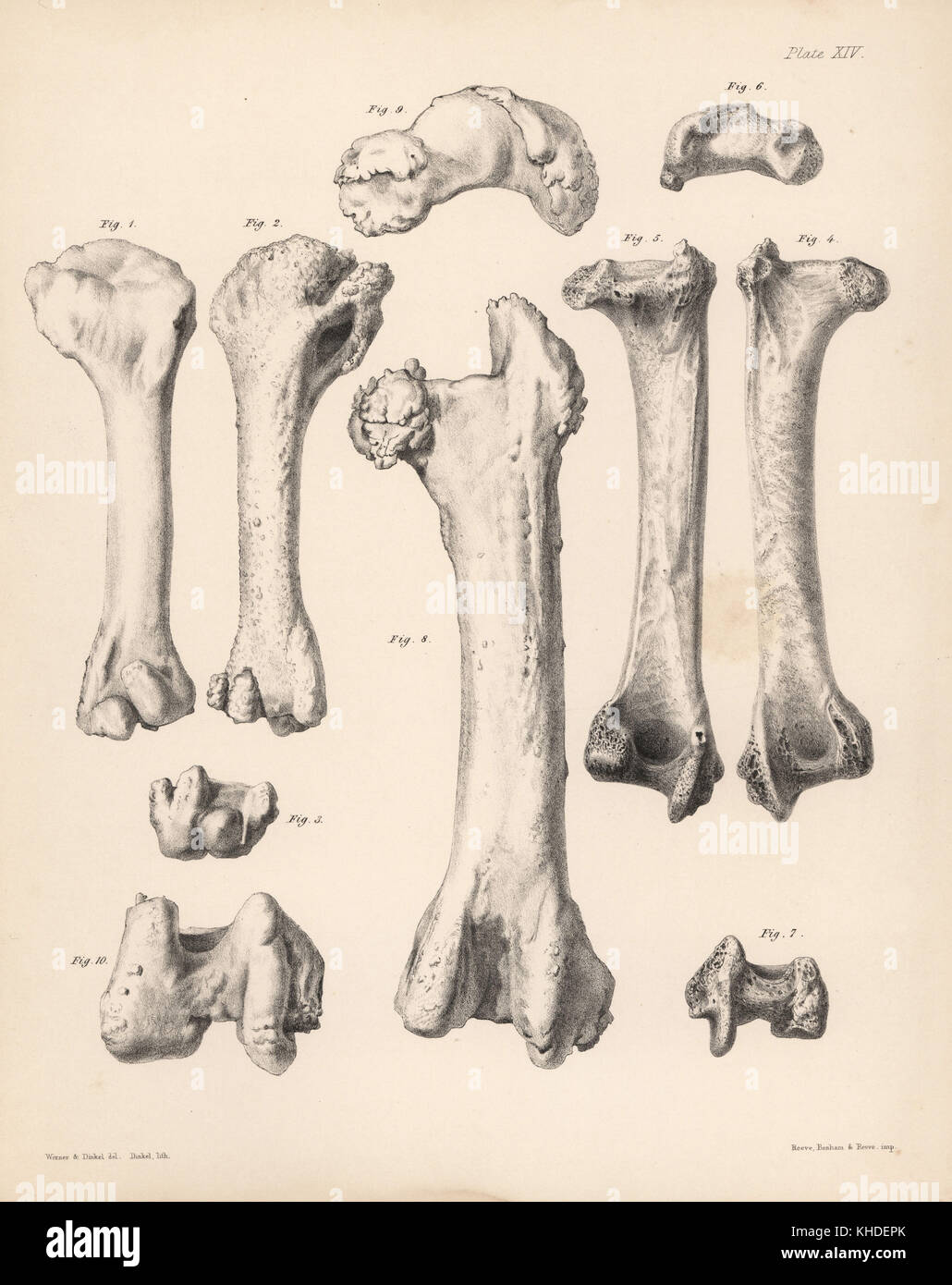 Humerus and femur of the extinct Rodrigues solitaire, Pezophaps solitaria, in the Parisian Collection and Andersonian Collection. Lithograph by Joseph Dinkel after Werner and Dinkel from Hugh Edwin Strickland and Alexander Gordon Melville's The Dodo and its Kindred, London, Reeve, Benham and Reeve, 1848. Stock Photohttps://www.alamy.com/image-license-details/?v=1https://www.alamy.com/stock-image-humerus-and-femur-of-the-extinct-rodrigues-solitaire-pezophaps-solitaria-165639451.html
Humerus and femur of the extinct Rodrigues solitaire, Pezophaps solitaria, in the Parisian Collection and Andersonian Collection. Lithograph by Joseph Dinkel after Werner and Dinkel from Hugh Edwin Strickland and Alexander Gordon Melville's The Dodo and its Kindred, London, Reeve, Benham and Reeve, 1848. Stock Photohttps://www.alamy.com/image-license-details/?v=1https://www.alamy.com/stock-image-humerus-and-femur-of-the-extinct-rodrigues-solitaire-pezophaps-solitaria-165639451.htmlRMKHDEPK–Humerus and femur of the extinct Rodrigues solitaire, Pezophaps solitaria, in the Parisian Collection and Andersonian Collection. Lithograph by Joseph Dinkel after Werner and Dinkel from Hugh Edwin Strickland and Alexander Gordon Melville's The Dodo and its Kindred, London, Reeve, Benham and Reeve, 1848.
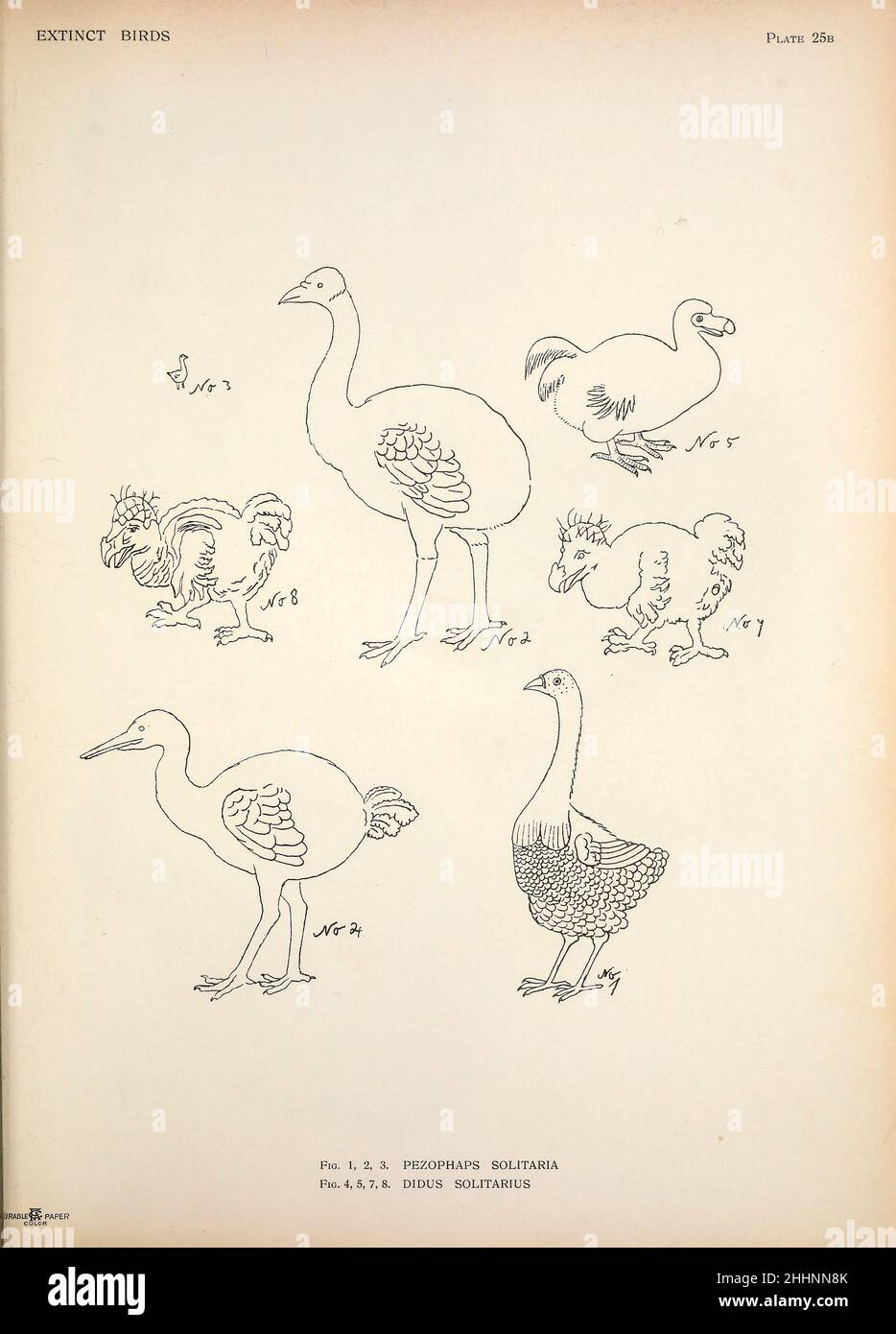 The Rodrigues solitaire (Pezophaps solitaria here as Didus solitarius) is an extinct flightless bird that was endemic to the island of Rodrigues, east of Madagascar in the Indian Ocean. Genetically within the family of pigeons and doves, it was most closely related to the also extinct dodo of the nearby island Mauritius, the two forming the subfamily Raphinae. The Nicobar pigeon is their closest living genetic relative. from ' Extinct birds ' : an attempt to unite in one volume a short account of those birds which have become extinct in historical times : that is, within the last six or seven Stock Photohttps://www.alamy.com/image-license-details/?v=1https://www.alamy.com/the-rodrigues-solitaire-pezophaps-solitaria-here-as-didus-solitarius-is-an-extinct-flightless-bird-that-was-endemic-to-the-island-of-rodrigues-east-of-madagascar-in-the-indian-ocean-genetically-within-the-family-of-pigeons-and-doves-it-was-most-closely-related-to-the-also-extinct-dodo-of-the-nearby-island-mauritius-the-two-forming-the-subfamily-raphinae-the-nicobar-pigeon-is-their-closest-living-genetic-relative-from-extinct-birds-an-attempt-to-unite-in-one-volume-a-short-account-of-those-birds-which-have-become-extinct-in-historical-times-that-is-within-the-last-six-or-seven-image458396419.html
The Rodrigues solitaire (Pezophaps solitaria here as Didus solitarius) is an extinct flightless bird that was endemic to the island of Rodrigues, east of Madagascar in the Indian Ocean. Genetically within the family of pigeons and doves, it was most closely related to the also extinct dodo of the nearby island Mauritius, the two forming the subfamily Raphinae. The Nicobar pigeon is their closest living genetic relative. from ' Extinct birds ' : an attempt to unite in one volume a short account of those birds which have become extinct in historical times : that is, within the last six or seven Stock Photohttps://www.alamy.com/image-license-details/?v=1https://www.alamy.com/the-rodrigues-solitaire-pezophaps-solitaria-here-as-didus-solitarius-is-an-extinct-flightless-bird-that-was-endemic-to-the-island-of-rodrigues-east-of-madagascar-in-the-indian-ocean-genetically-within-the-family-of-pigeons-and-doves-it-was-most-closely-related-to-the-also-extinct-dodo-of-the-nearby-island-mauritius-the-two-forming-the-subfamily-raphinae-the-nicobar-pigeon-is-their-closest-living-genetic-relative-from-extinct-birds-an-attempt-to-unite-in-one-volume-a-short-account-of-those-birds-which-have-become-extinct-in-historical-times-that-is-within-the-last-six-or-seven-image458396419.htmlRF2HHNN8K–The Rodrigues solitaire (Pezophaps solitaria here as Didus solitarius) is an extinct flightless bird that was endemic to the island of Rodrigues, east of Madagascar in the Indian Ocean. Genetically within the family of pigeons and doves, it was most closely related to the also extinct dodo of the nearby island Mauritius, the two forming the subfamily Raphinae. The Nicobar pigeon is their closest living genetic relative. from ' Extinct birds ' : an attempt to unite in one volume a short account of those birds which have become extinct in historical times : that is, within the last six or seven
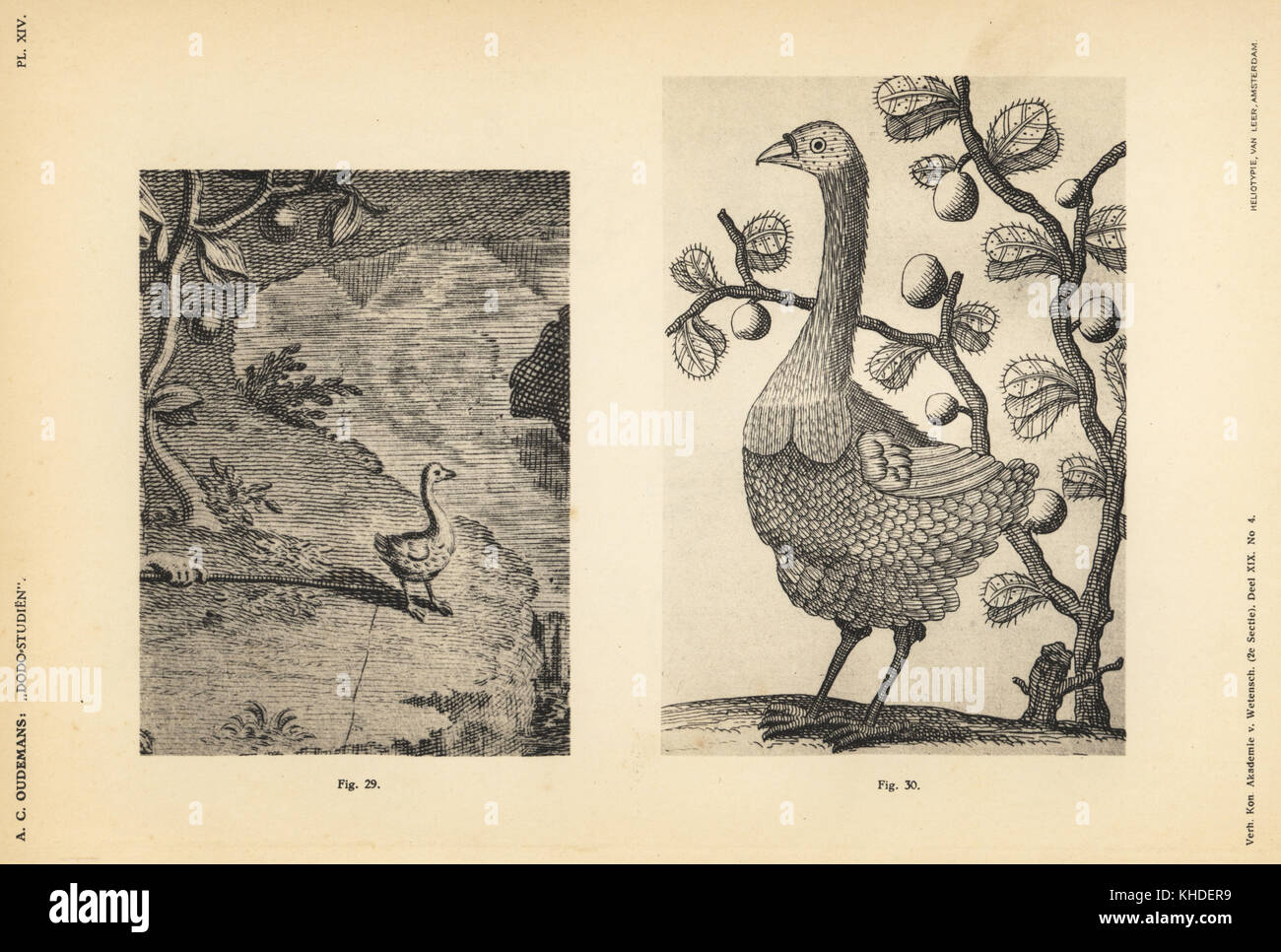 Images of a male Rodrigues solitaire, Pezophaps solitaria, from Francois Lequat's Voyages, 1708. Heliotype by Van Leer from Dr. Anthonie Cornelis Oudemans' Dodo Studies, Amsterdam, Johannes Muller, 1917. Stock Photohttps://www.alamy.com/image-license-details/?v=1https://www.alamy.com/stock-image-images-of-a-male-rodrigues-solitaire-pezophaps-solitaria-from-francois-165639469.html
Images of a male Rodrigues solitaire, Pezophaps solitaria, from Francois Lequat's Voyages, 1708. Heliotype by Van Leer from Dr. Anthonie Cornelis Oudemans' Dodo Studies, Amsterdam, Johannes Muller, 1917. Stock Photohttps://www.alamy.com/image-license-details/?v=1https://www.alamy.com/stock-image-images-of-a-male-rodrigues-solitaire-pezophaps-solitaria-from-francois-165639469.htmlRMKHDER9–Images of a male Rodrigues solitaire, Pezophaps solitaria, from Francois Lequat's Voyages, 1708. Heliotype by Van Leer from Dr. Anthonie Cornelis Oudemans' Dodo Studies, Amsterdam, Johannes Muller, 1917.
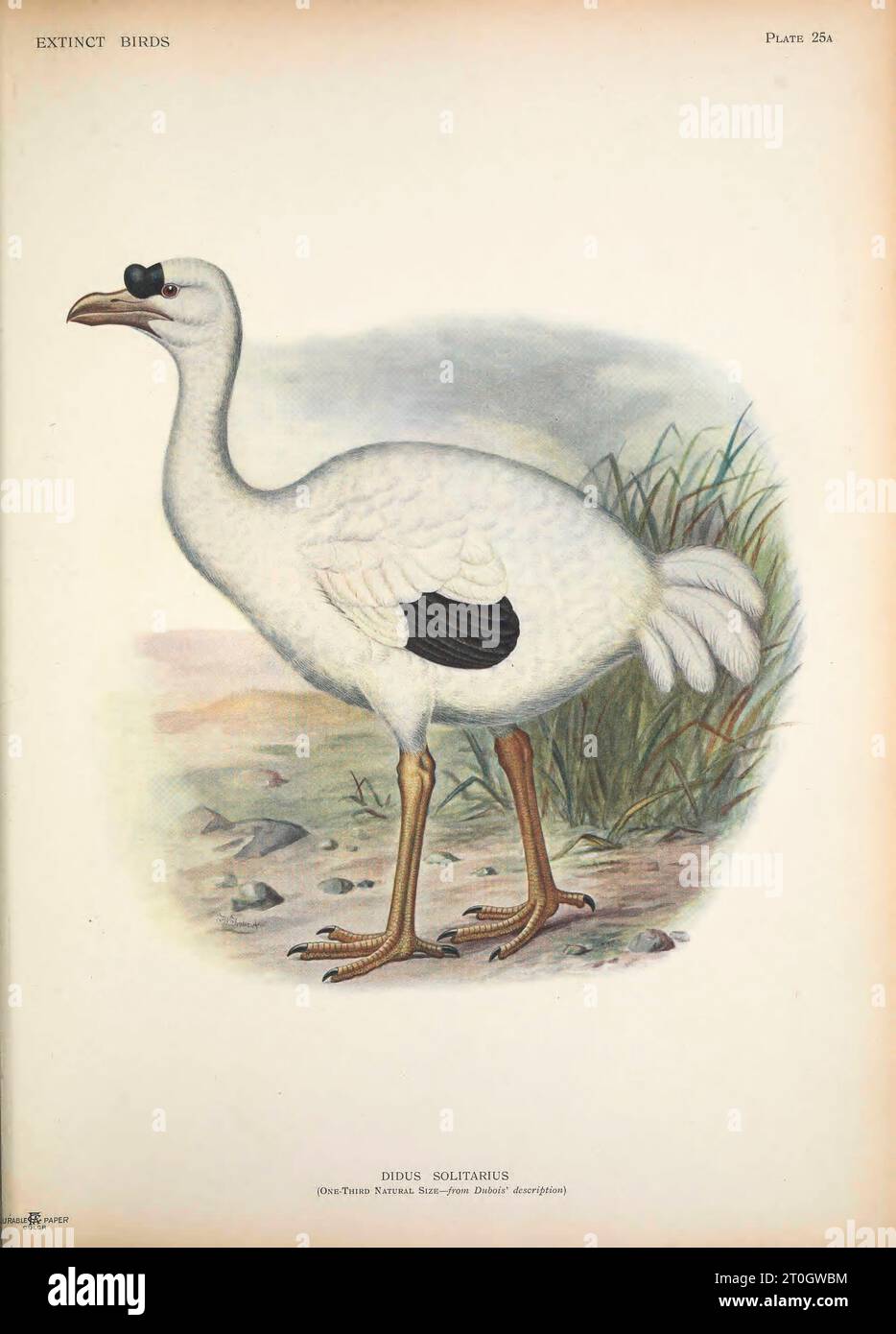 Rodrigues solitaire, illustration Stock Photohttps://www.alamy.com/image-license-details/?v=1https://www.alamy.com/rodrigues-solitaire-illustration-image568313304.html
Rodrigues solitaire, illustration Stock Photohttps://www.alamy.com/image-license-details/?v=1https://www.alamy.com/rodrigues-solitaire-illustration-image568313304.htmlRF2T0GWBM–Rodrigues solitaire, illustration
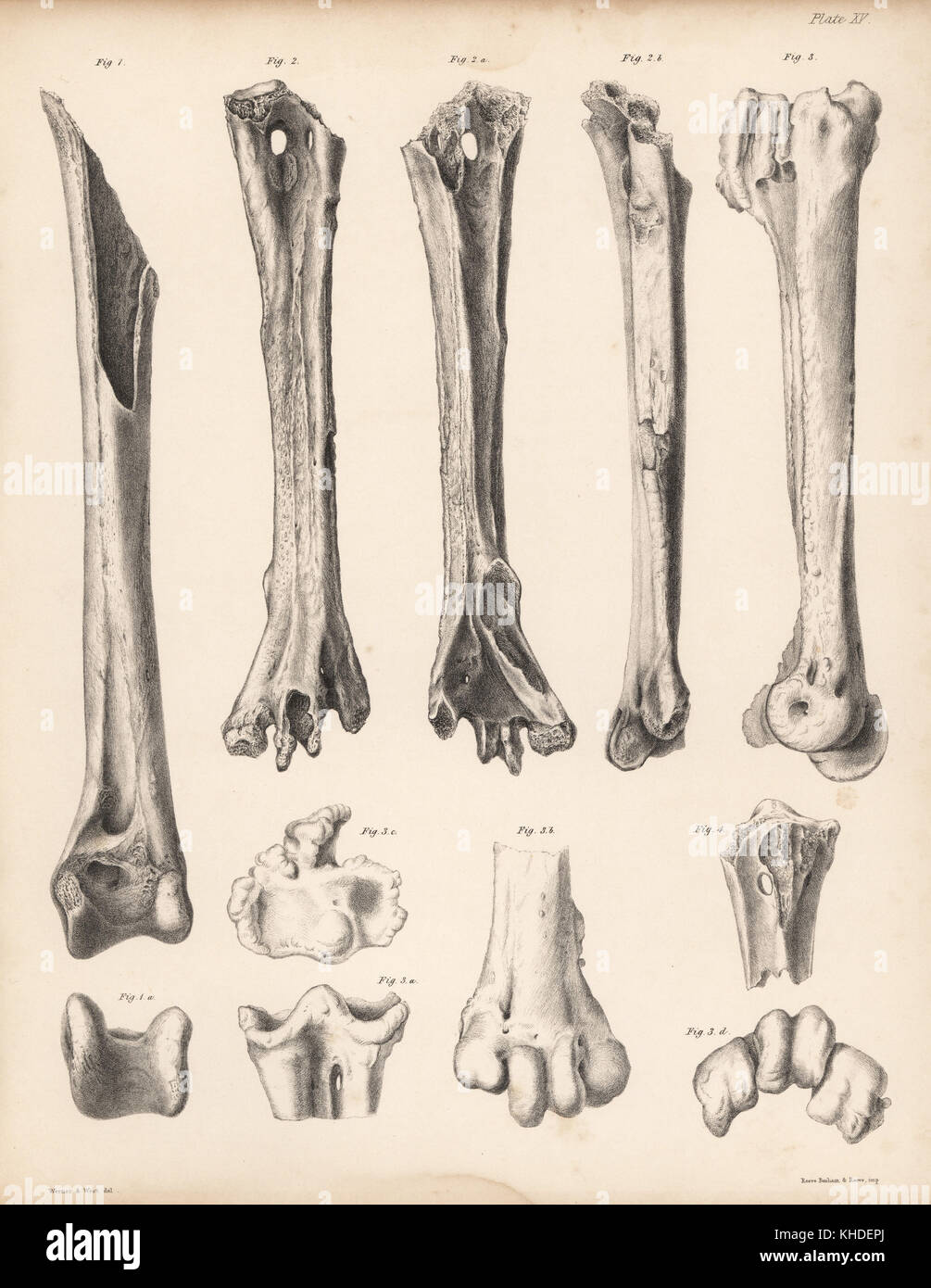 Tibia and metatarsus of the extinct Rodrigues solitaire, Pezophaps solitaria, in the Parisian Collection and Andersonian Collection. Lithograph after Werner and Tuffen West from Hugh Edwin Strickland and Alexander Gordon Melville's The Dodo and its Kindred, London, Reeve, Benham and Reeve, 1848. Stock Photohttps://www.alamy.com/image-license-details/?v=1https://www.alamy.com/stock-image-tibia-and-metatarsus-of-the-extinct-rodrigues-solitaire-pezophaps-165639450.html
Tibia and metatarsus of the extinct Rodrigues solitaire, Pezophaps solitaria, in the Parisian Collection and Andersonian Collection. Lithograph after Werner and Tuffen West from Hugh Edwin Strickland and Alexander Gordon Melville's The Dodo and its Kindred, London, Reeve, Benham and Reeve, 1848. Stock Photohttps://www.alamy.com/image-license-details/?v=1https://www.alamy.com/stock-image-tibia-and-metatarsus-of-the-extinct-rodrigues-solitaire-pezophaps-165639450.htmlRMKHDEPJ–Tibia and metatarsus of the extinct Rodrigues solitaire, Pezophaps solitaria, in the Parisian Collection and Andersonian Collection. Lithograph after Werner and Tuffen West from Hugh Edwin Strickland and Alexander Gordon Melville's The Dodo and its Kindred, London, Reeve, Benham and Reeve, 1848.
 The dodo (Raphus cucullatus) Stock Photohttps://www.alamy.com/image-license-details/?v=1https://www.alamy.com/stock-photo-the-dodo-raphus-cucullatus-43398487.html
The dodo (Raphus cucullatus) Stock Photohttps://www.alamy.com/image-license-details/?v=1https://www.alamy.com/stock-photo-the-dodo-raphus-cucullatus-43398487.htmlRMCEGY5Y–The dodo (Raphus cucullatus)
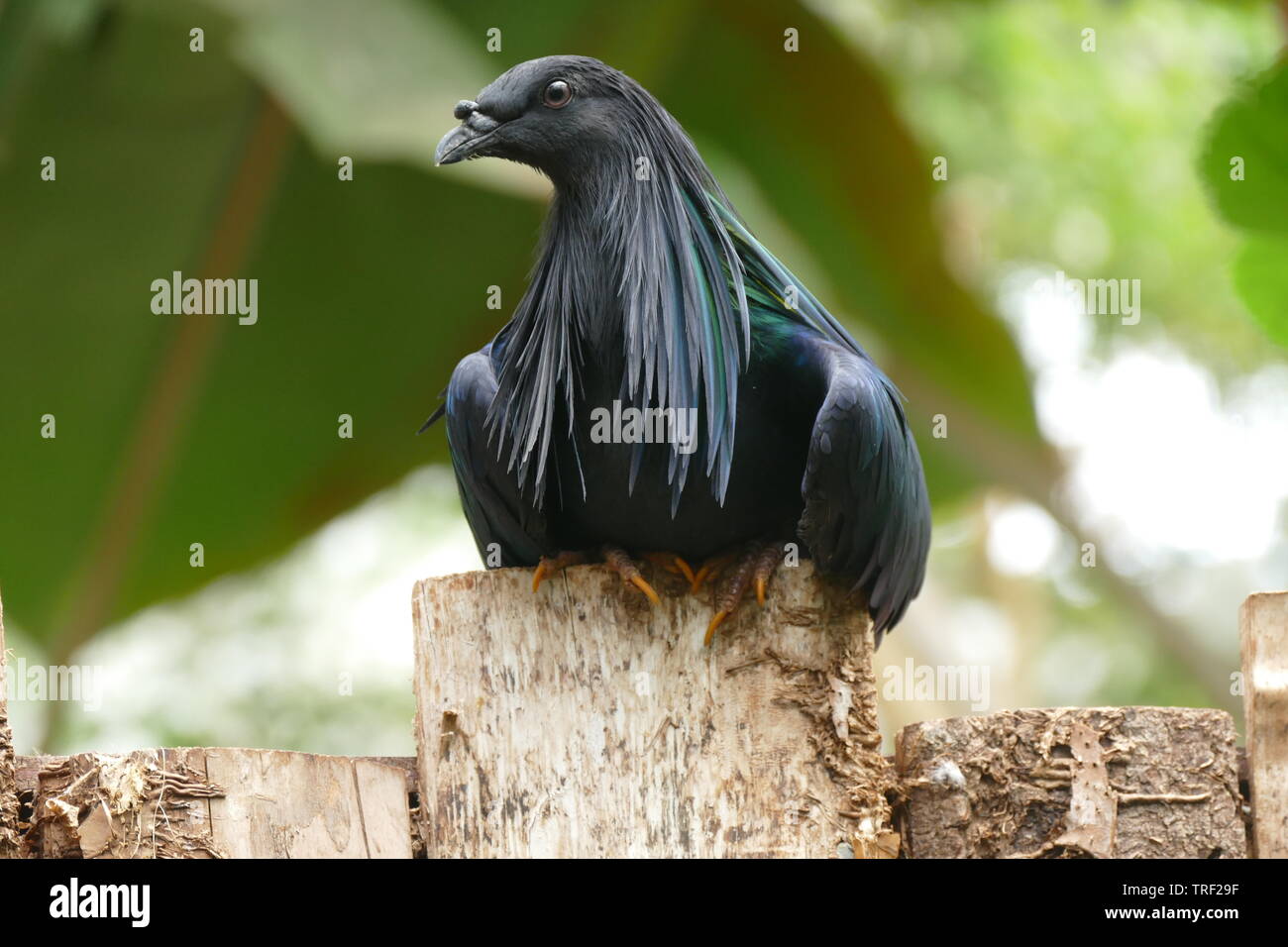 Nicobar pigeon, perched on a fence Stock Photohttps://www.alamy.com/image-license-details/?v=1https://www.alamy.com/nicobar-pigeon-perched-on-a-fence-image255413355.html
Nicobar pigeon, perched on a fence Stock Photohttps://www.alamy.com/image-license-details/?v=1https://www.alamy.com/nicobar-pigeon-perched-on-a-fence-image255413355.htmlRFTRF29F–Nicobar pigeon, perched on a fence
 Rodrigues Solitaire skeleton Stock Photohttps://www.alamy.com/image-license-details/?v=1https://www.alamy.com/rodrigues-solitaire-skeleton-image153719762.html
Rodrigues Solitaire skeleton Stock Photohttps://www.alamy.com/image-license-details/?v=1https://www.alamy.com/rodrigues-solitaire-skeleton-image153719762.htmlRMJX2F3E–Rodrigues Solitaire skeleton
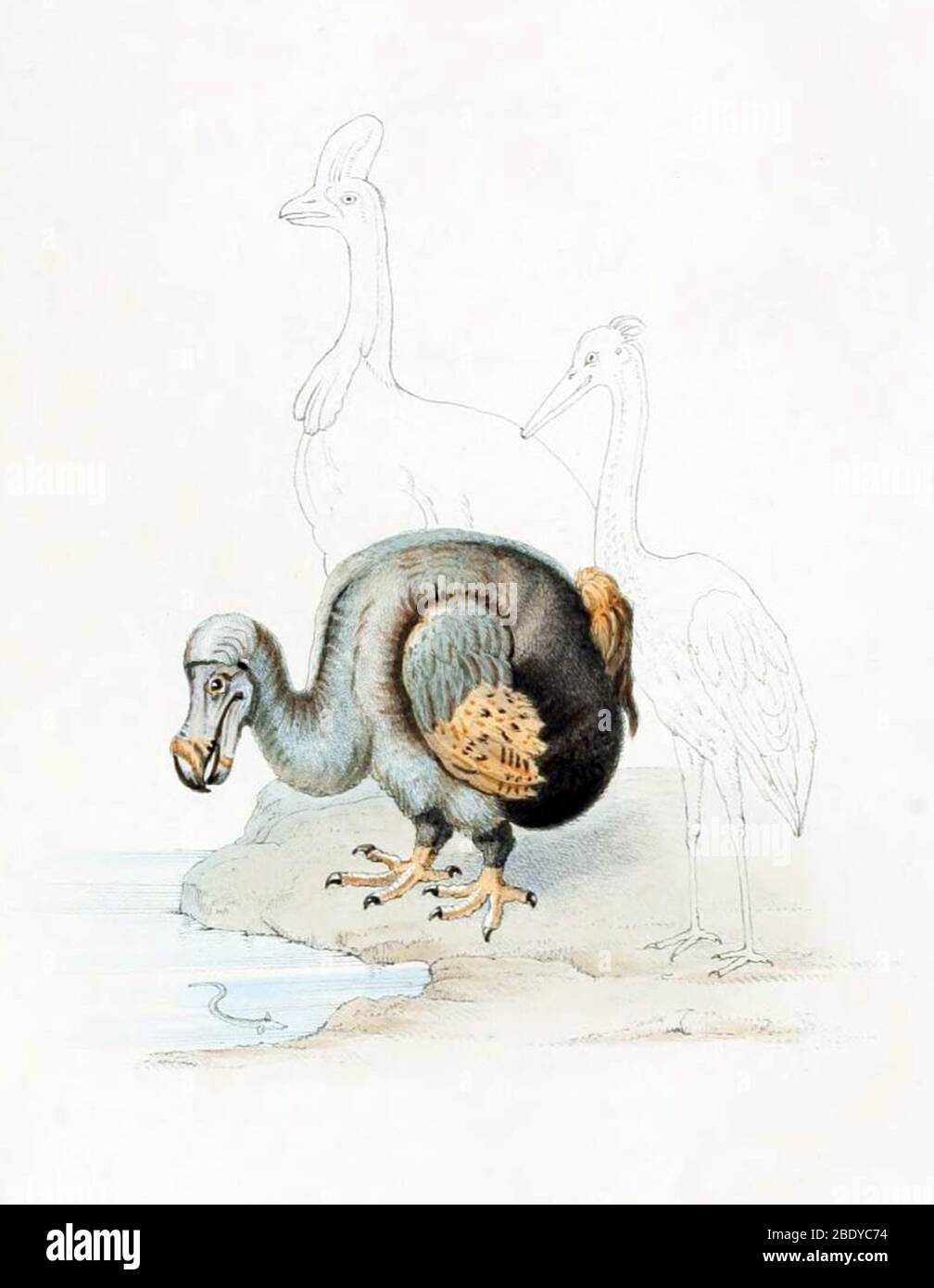 Dodo Stock Photohttps://www.alamy.com/image-license-details/?v=1https://www.alamy.com/dodo-image352800200.html
Dodo Stock Photohttps://www.alamy.com/image-license-details/?v=1https://www.alamy.com/dodo-image352800200.htmlRM2BDYC74–Dodo
 Illustration of extinct Solitaires (Pezophaps solitaria) males 
fighting over territory in the valley of Saint Francois, Rodrigues. Stock Photohttps://www.alamy.com/image-license-details/?v=1https://www.alamy.com/illustration-of-extinct-solitaires-pezophaps-solitaria-males-xafighting-over-territory-in-the-valley-of-saint-francois-rodrigues-image612017481.html
Illustration of extinct Solitaires (Pezophaps solitaria) males 
fighting over territory in the valley of Saint Francois, Rodrigues. Stock Photohttps://www.alamy.com/image-license-details/?v=1https://www.alamy.com/illustration-of-extinct-solitaires-pezophaps-solitaria-males-xafighting-over-territory-in-the-valley-of-saint-francois-rodrigues-image612017481.htmlRM2XFKPF5–Illustration of extinct Solitaires (Pezophaps solitaria) males 
fighting over territory in the valley of Saint Francois, Rodrigues.
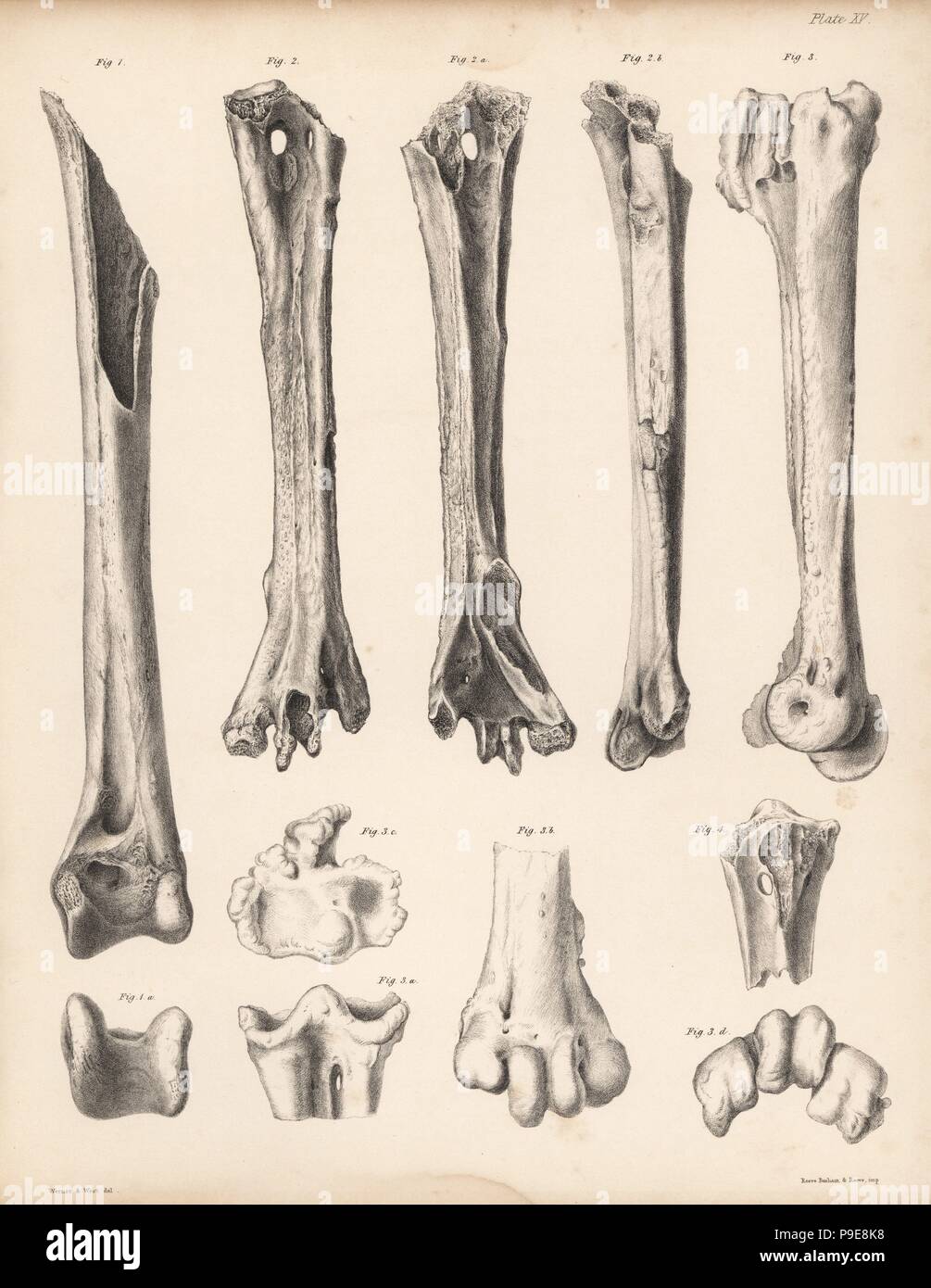 Tibia and metatarsus of the extinct Rodrigues solitaire, Pezophaps solitaria, in the Parisian Collection and Andersonian Collection. Lithograph after Werner and Tuffen West from Hugh Edwin Strickland and Alexander Gordon Melville's The Dodo and its Kindred, London, Reeve, Benham and Reeve, 1848. Stock Photohttps://www.alamy.com/image-license-details/?v=1https://www.alamy.com/tibia-and-metatarsus-of-the-extinct-rodrigues-solitaire-pezophaps-solitaria-in-the-parisian-collection-and-andersonian-collection-lithograph-after-werner-and-tuffen-west-from-hugh-edwin-strickland-and-alexander-gordon-melvilles-the-dodo-and-its-kindred-london-reeve-benham-and-reeve-1848-image212370460.html
Tibia and metatarsus of the extinct Rodrigues solitaire, Pezophaps solitaria, in the Parisian Collection and Andersonian Collection. Lithograph after Werner and Tuffen West from Hugh Edwin Strickland and Alexander Gordon Melville's The Dodo and its Kindred, London, Reeve, Benham and Reeve, 1848. Stock Photohttps://www.alamy.com/image-license-details/?v=1https://www.alamy.com/tibia-and-metatarsus-of-the-extinct-rodrigues-solitaire-pezophaps-solitaria-in-the-parisian-collection-and-andersonian-collection-lithograph-after-werner-and-tuffen-west-from-hugh-edwin-strickland-and-alexander-gordon-melvilles-the-dodo-and-its-kindred-london-reeve-benham-and-reeve-1848-image212370460.htmlRMP9E8K8–Tibia and metatarsus of the extinct Rodrigues solitaire, Pezophaps solitaria, in the Parisian Collection and Andersonian Collection. Lithograph after Werner and Tuffen West from Hugh Edwin Strickland and Alexander Gordon Melville's The Dodo and its Kindred, London, Reeve, Benham and Reeve, 1848.
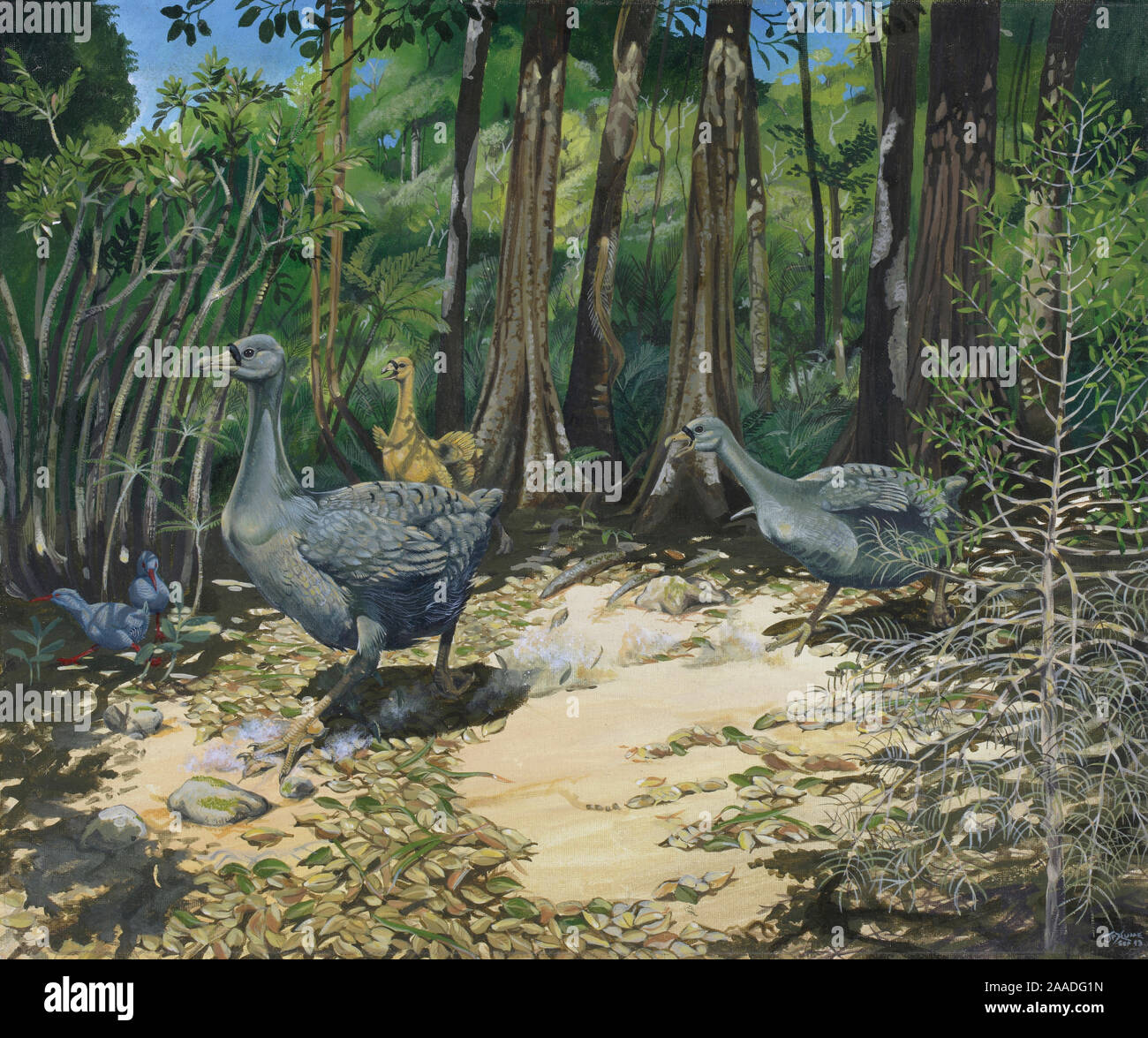 Illustration of extinct birds, Pair of Rodrigues solitaires (Pezophaps solitaria) (Ex.1762) chase an intruding male from their territory. Leguat's rails (Erythromachus leguati) (bottom left) (Ex.1762) under the cover of (Zanthoxylum paniculatum) a tree that, like Scyphochlamys revoluta (right), is now critically endangered Stock Photohttps://www.alamy.com/image-license-details/?v=1https://www.alamy.com/illustration-of-extinct-birds-pair-of-rodrigues-solitaires-pezophaps-solitaria-ex1762-chase-an-intruding-male-from-their-territory-leguats-rails-erythromachus-leguati-bottom-left-ex1762-under-the-cover-of-zanthoxylum-paniculatum-a-tree-that-like-scyphochlamys-revoluta-right-is-now-critically-endangered-image333441521.html
Illustration of extinct birds, Pair of Rodrigues solitaires (Pezophaps solitaria) (Ex.1762) chase an intruding male from their territory. Leguat's rails (Erythromachus leguati) (bottom left) (Ex.1762) under the cover of (Zanthoxylum paniculatum) a tree that, like Scyphochlamys revoluta (right), is now critically endangered Stock Photohttps://www.alamy.com/image-license-details/?v=1https://www.alamy.com/illustration-of-extinct-birds-pair-of-rodrigues-solitaires-pezophaps-solitaria-ex1762-chase-an-intruding-male-from-their-territory-leguats-rails-erythromachus-leguati-bottom-left-ex1762-under-the-cover-of-zanthoxylum-paniculatum-a-tree-that-like-scyphochlamys-revoluta-right-is-now-critically-endangered-image333441521.htmlRM2AADG1N–Illustration of extinct birds, Pair of Rodrigues solitaires (Pezophaps solitaria) (Ex.1762) chase an intruding male from their territory. Leguat's rails (Erythromachus leguati) (bottom left) (Ex.1762) under the cover of (Zanthoxylum paniculatum) a tree that, like Scyphochlamys revoluta (right), is now critically endangered
 Caloenas nicobarica, Print, The Nicobar pigeon (Caloenas nicobarica) is a pigeon found on small islands and in coastal regions from the Andaman and Nicobar Islands, India, east through the Malay Archipelago, to the Solomons and Palau. It is the only living member of the genus Caloenas and might be the closest living relative of the extinct dodo, and extinct Rodrigues solitaire., 1700-1880 Stock Photohttps://www.alamy.com/image-license-details/?v=1https://www.alamy.com/caloenas-nicobarica-print-the-nicobar-pigeon-caloenas-nicobarica-is-a-pigeon-found-on-small-islands-and-in-coastal-regions-from-the-andaman-and-nicobar-islands-india-east-through-the-malay-archipelago-to-the-solomons-and-palau-it-is-the-only-living-member-of-the-genus-caloenas-and-might-be-the-closest-living-relative-of-the-extinct-dodo-and-extinct-rodrigues-solitaire-1700-1880-image328669288.html
Caloenas nicobarica, Print, The Nicobar pigeon (Caloenas nicobarica) is a pigeon found on small islands and in coastal regions from the Andaman and Nicobar Islands, India, east through the Malay Archipelago, to the Solomons and Palau. It is the only living member of the genus Caloenas and might be the closest living relative of the extinct dodo, and extinct Rodrigues solitaire., 1700-1880 Stock Photohttps://www.alamy.com/image-license-details/?v=1https://www.alamy.com/caloenas-nicobarica-print-the-nicobar-pigeon-caloenas-nicobarica-is-a-pigeon-found-on-small-islands-and-in-coastal-regions-from-the-andaman-and-nicobar-islands-india-east-through-the-malay-archipelago-to-the-solomons-and-palau-it-is-the-only-living-member-of-the-genus-caloenas-and-might-be-the-closest-living-relative-of-the-extinct-dodo-and-extinct-rodrigues-solitaire-1700-1880-image328669288.htmlRM2A2M50T–Caloenas nicobarica, Print, The Nicobar pigeon (Caloenas nicobarica) is a pigeon found on small islands and in coastal regions from the Andaman and Nicobar Islands, India, east through the Malay Archipelago, to the Solomons and Palau. It is the only living member of the genus Caloenas and might be the closest living relative of the extinct dodo, and extinct Rodrigues solitaire., 1700-1880
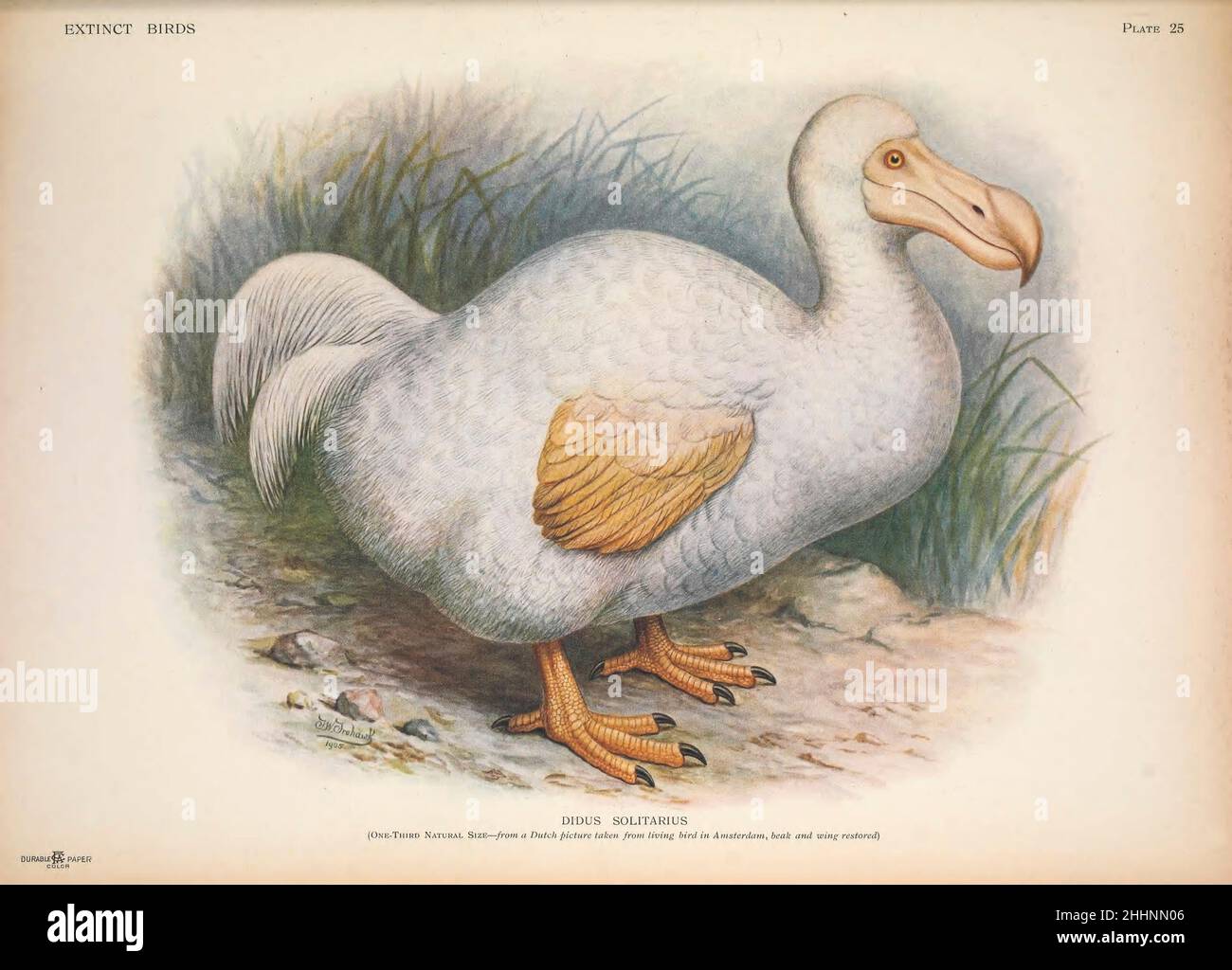 The Rodrigues solitaire (Pezophaps solitaria here as Didus solitarius) From a picture supposed to be taken from a living specimen in Amsterdam, but beak and wing restored. is an extinct flightless bird that was endemic to the island of Rodrigues, east of Madagascar in the Indian Ocean. Genetically within the family of pigeons and doves, it was most closely related to the also extinct dodo of the nearby island Mauritius, the two forming the subfamily Raphinae. The Nicobar pigeon is their closest living genetic relative. from ' Extinct birds ' : an attempt to unite in one volume a short account Stock Photohttps://www.alamy.com/image-license-details/?v=1https://www.alamy.com/the-rodrigues-solitaire-pezophaps-solitaria-here-as-didus-solitarius-from-a-picture-supposed-to-be-taken-from-a-living-specimen-in-amsterdam-but-beak-and-wing-restored-is-an-extinct-flightless-bird-that-was-endemic-to-the-island-of-rodrigues-east-of-madagascar-in-the-indian-ocean-genetically-within-the-family-of-pigeons-and-doves-it-was-most-closely-related-to-the-also-extinct-dodo-of-the-nearby-island-mauritius-the-two-forming-the-subfamily-raphinae-the-nicobar-pigeon-is-their-closest-living-genetic-relative-from-extinct-birds-an-attempt-to-unite-in-one-volume-a-short-account-image458396182.html
The Rodrigues solitaire (Pezophaps solitaria here as Didus solitarius) From a picture supposed to be taken from a living specimen in Amsterdam, but beak and wing restored. is an extinct flightless bird that was endemic to the island of Rodrigues, east of Madagascar in the Indian Ocean. Genetically within the family of pigeons and doves, it was most closely related to the also extinct dodo of the nearby island Mauritius, the two forming the subfamily Raphinae. The Nicobar pigeon is their closest living genetic relative. from ' Extinct birds ' : an attempt to unite in one volume a short account Stock Photohttps://www.alamy.com/image-license-details/?v=1https://www.alamy.com/the-rodrigues-solitaire-pezophaps-solitaria-here-as-didus-solitarius-from-a-picture-supposed-to-be-taken-from-a-living-specimen-in-amsterdam-but-beak-and-wing-restored-is-an-extinct-flightless-bird-that-was-endemic-to-the-island-of-rodrigues-east-of-madagascar-in-the-indian-ocean-genetically-within-the-family-of-pigeons-and-doves-it-was-most-closely-related-to-the-also-extinct-dodo-of-the-nearby-island-mauritius-the-two-forming-the-subfamily-raphinae-the-nicobar-pigeon-is-their-closest-living-genetic-relative-from-extinct-birds-an-attempt-to-unite-in-one-volume-a-short-account-image458396182.htmlRF2HHNN06–The Rodrigues solitaire (Pezophaps solitaria here as Didus solitarius) From a picture supposed to be taken from a living specimen in Amsterdam, but beak and wing restored. is an extinct flightless bird that was endemic to the island of Rodrigues, east of Madagascar in the Indian Ocean. Genetically within the family of pigeons and doves, it was most closely related to the also extinct dodo of the nearby island Mauritius, the two forming the subfamily Raphinae. The Nicobar pigeon is their closest living genetic relative. from ' Extinct birds ' : an attempt to unite in one volume a short account
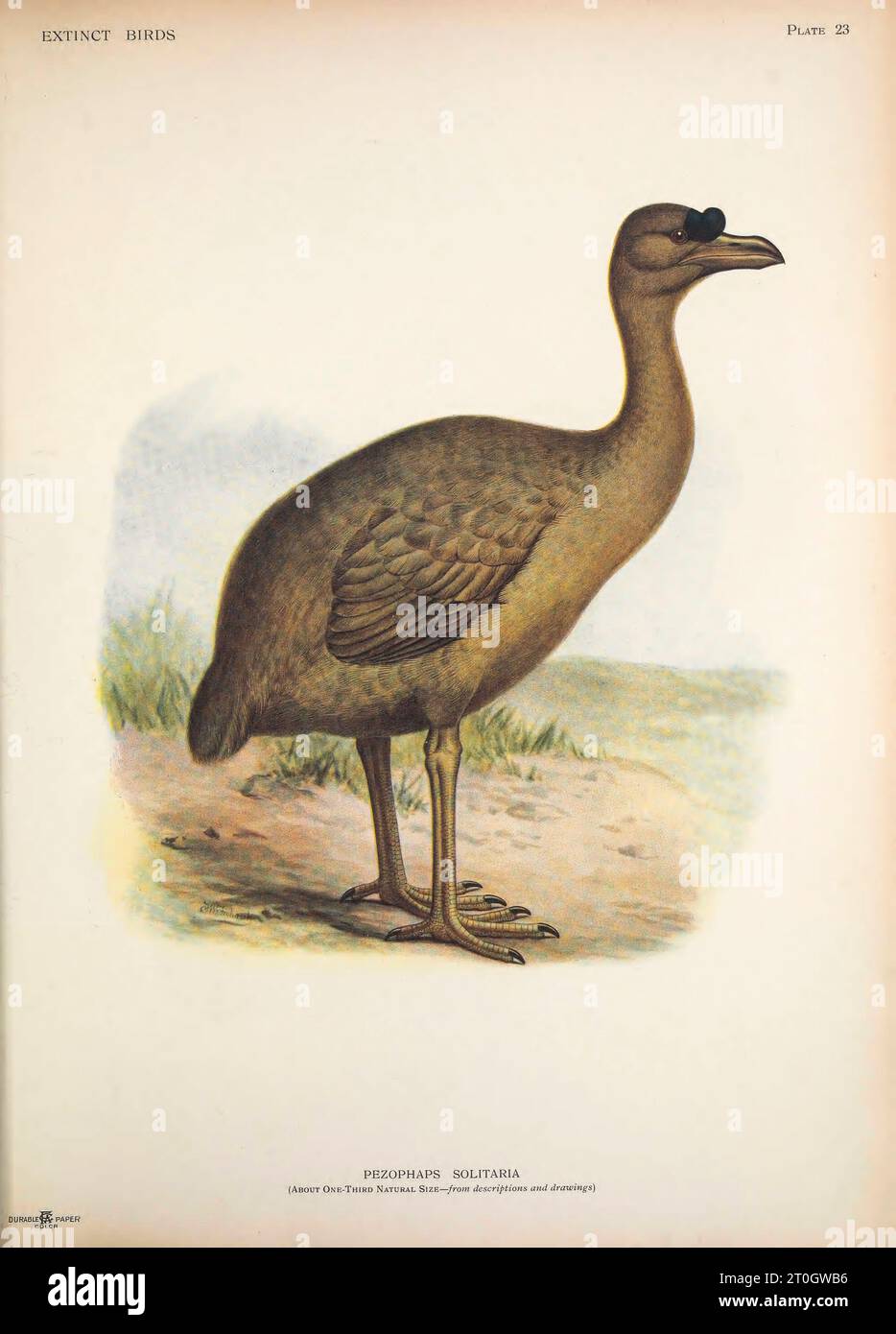 Rodrigues solitaire, illustration Stock Photohttps://www.alamy.com/image-license-details/?v=1https://www.alamy.com/rodrigues-solitaire-illustration-image568313290.html
Rodrigues solitaire, illustration Stock Photohttps://www.alamy.com/image-license-details/?v=1https://www.alamy.com/rodrigues-solitaire-illustration-image568313290.htmlRF2T0GWB6–Rodrigues solitaire, illustration
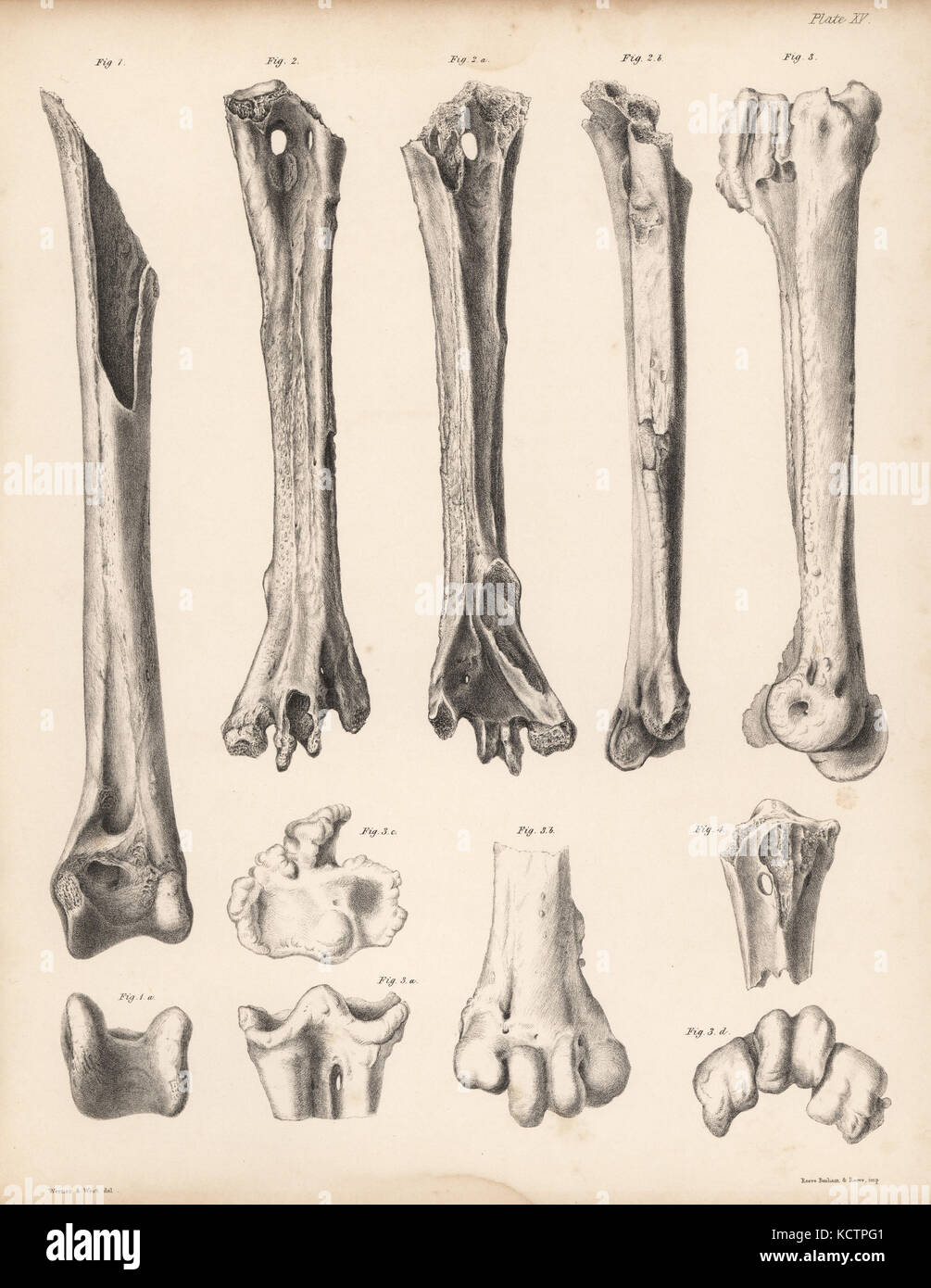 Tibia and metatarsus of the extinct Rodrigues solitaire, Pezophaps solitaria, in the Parisian Collection and Andersonian Collection. Lithograph after Werner and Tuffen West from Hugh Edwin Strickland and Alexander Gordon Melville's The Dodo and its Kindred, London, Reeve, Benham and Reeve, 1848. Stock Photohttps://www.alamy.com/image-license-details/?v=1https://www.alamy.com/stock-image-tibia-and-metatarsus-of-the-extinct-rodrigues-solitaire-pezophaps-162813729.html
Tibia and metatarsus of the extinct Rodrigues solitaire, Pezophaps solitaria, in the Parisian Collection and Andersonian Collection. Lithograph after Werner and Tuffen West from Hugh Edwin Strickland and Alexander Gordon Melville's The Dodo and its Kindred, London, Reeve, Benham and Reeve, 1848. Stock Photohttps://www.alamy.com/image-license-details/?v=1https://www.alamy.com/stock-image-tibia-and-metatarsus-of-the-extinct-rodrigues-solitaire-pezophaps-162813729.htmlRMKCTPG1–Tibia and metatarsus of the extinct Rodrigues solitaire, Pezophaps solitaria, in the Parisian Collection and Andersonian Collection. Lithograph after Werner and Tuffen West from Hugh Edwin Strickland and Alexander Gordon Melville's The Dodo and its Kindred, London, Reeve, Benham and Reeve, 1848.
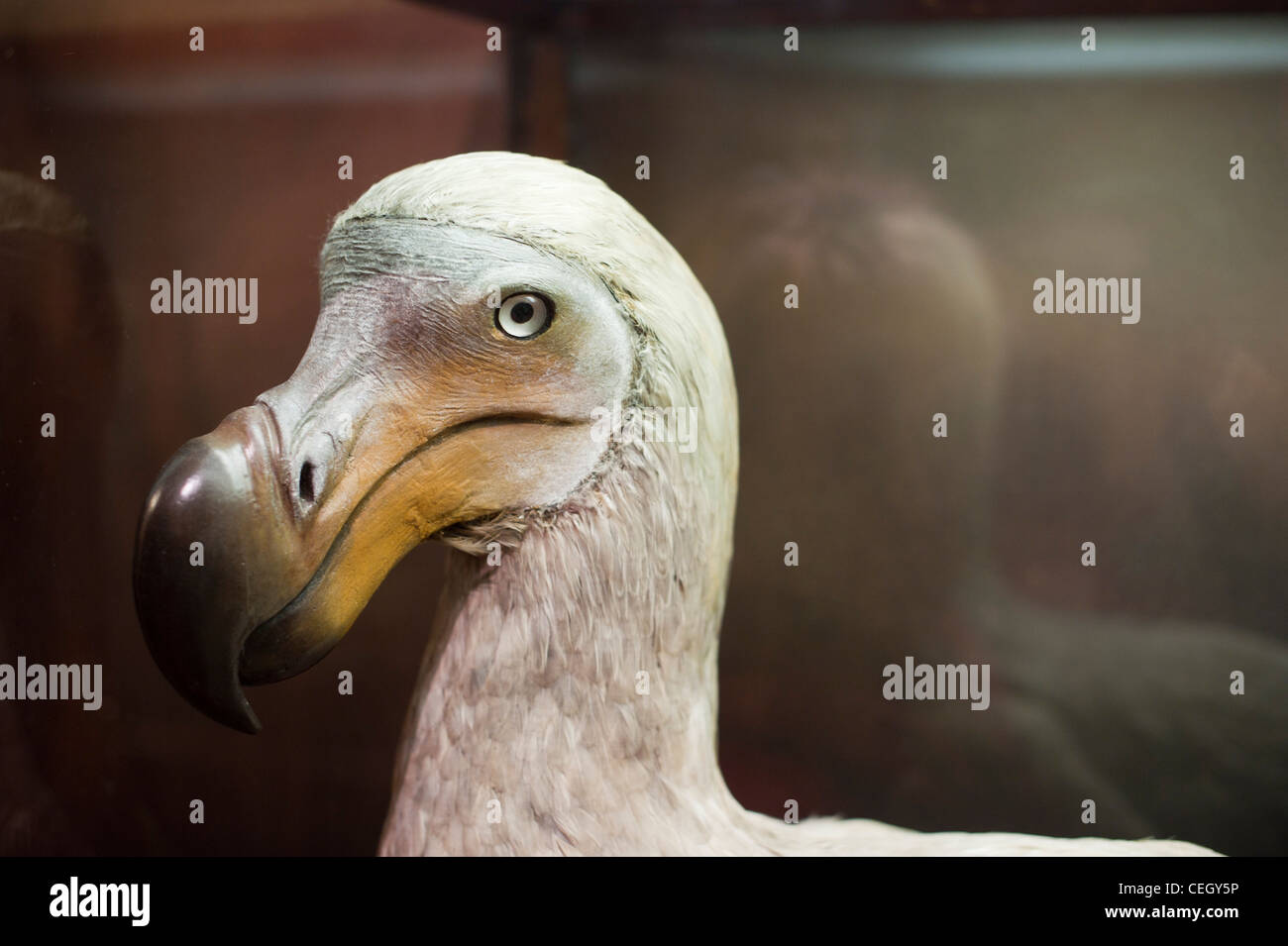 The dodo (Raphus cucullatus) Stock Photohttps://www.alamy.com/image-license-details/?v=1https://www.alamy.com/stock-photo-the-dodo-raphus-cucullatus-43398482.html
The dodo (Raphus cucullatus) Stock Photohttps://www.alamy.com/image-license-details/?v=1https://www.alamy.com/stock-photo-the-dodo-raphus-cucullatus-43398482.htmlRMCEGY5P–The dodo (Raphus cucullatus)
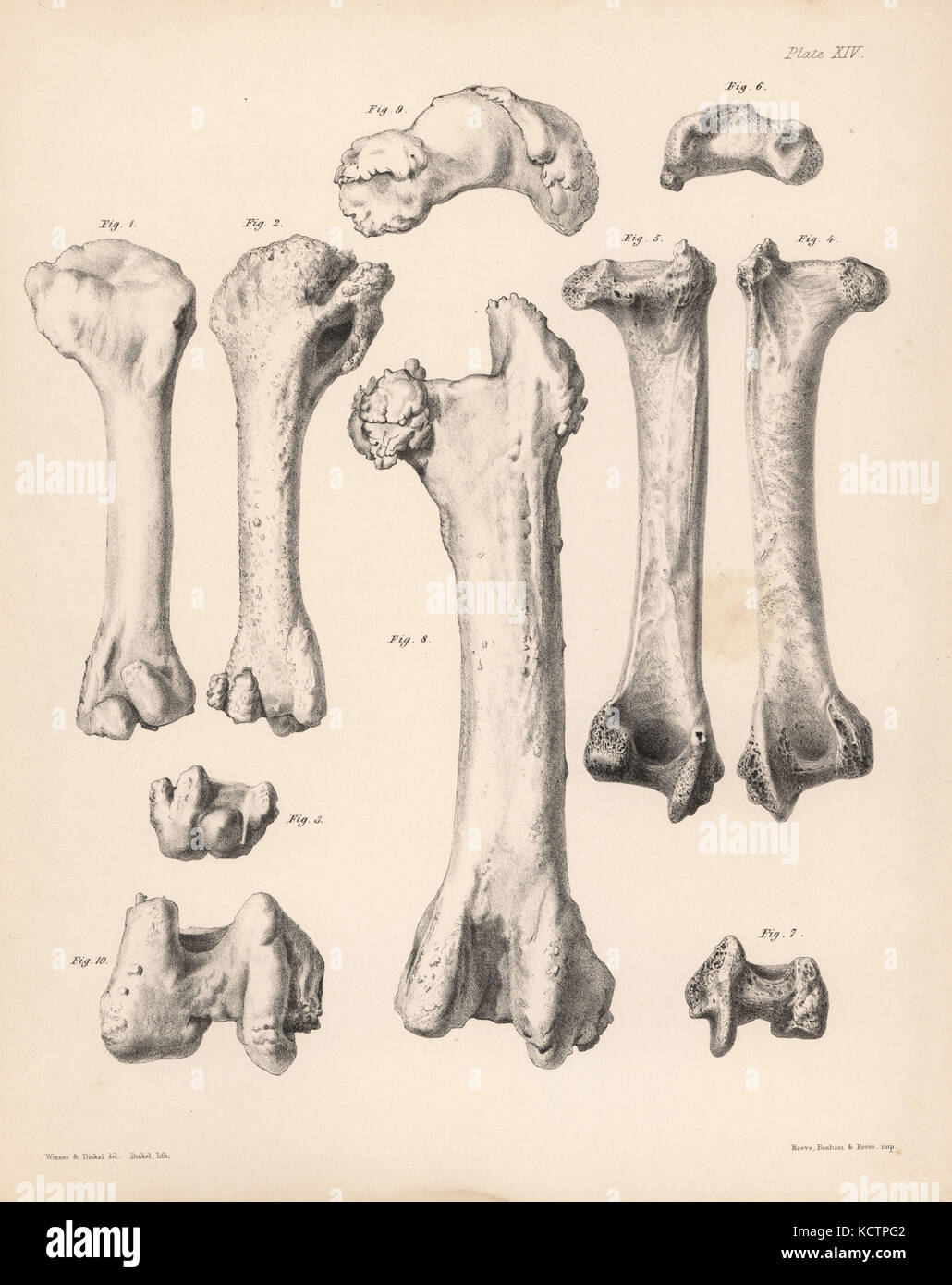 Humerus and femur of the extinct Rodrigues solitaire, Pezophaps solitaria, in the Parisian Collection and Andersonian Collection. Lithograph by Joseph Dinkel after Werner and Dinkel from Hugh Edwin Strickland and Alexander Gordon Melville's The Dodo and its Kindred, London, Reeve, Benham and Reeve, 1848. Stock Photohttps://www.alamy.com/image-license-details/?v=1https://www.alamy.com/stock-image-humerus-and-femur-of-the-extinct-rodrigues-solitaire-pezophaps-solitaria-162813730.html
Humerus and femur of the extinct Rodrigues solitaire, Pezophaps solitaria, in the Parisian Collection and Andersonian Collection. Lithograph by Joseph Dinkel after Werner and Dinkel from Hugh Edwin Strickland and Alexander Gordon Melville's The Dodo and its Kindred, London, Reeve, Benham and Reeve, 1848. Stock Photohttps://www.alamy.com/image-license-details/?v=1https://www.alamy.com/stock-image-humerus-and-femur-of-the-extinct-rodrigues-solitaire-pezophaps-solitaria-162813730.htmlRMKCTPG2–Humerus and femur of the extinct Rodrigues solitaire, Pezophaps solitaria, in the Parisian Collection and Andersonian Collection. Lithograph by Joseph Dinkel after Werner and Dinkel from Hugh Edwin Strickland and Alexander Gordon Melville's The Dodo and its Kindred, London, Reeve, Benham and Reeve, 1848.
 Rodrigues Solitaire skeleton Stock Photohttps://www.alamy.com/image-license-details/?v=1https://www.alamy.com/rodrigues-solitaire-skeleton-image153124808.html
Rodrigues Solitaire skeleton Stock Photohttps://www.alamy.com/image-license-details/?v=1https://www.alamy.com/rodrigues-solitaire-skeleton-image153124808.htmlRMJW3C74–Rodrigues Solitaire skeleton
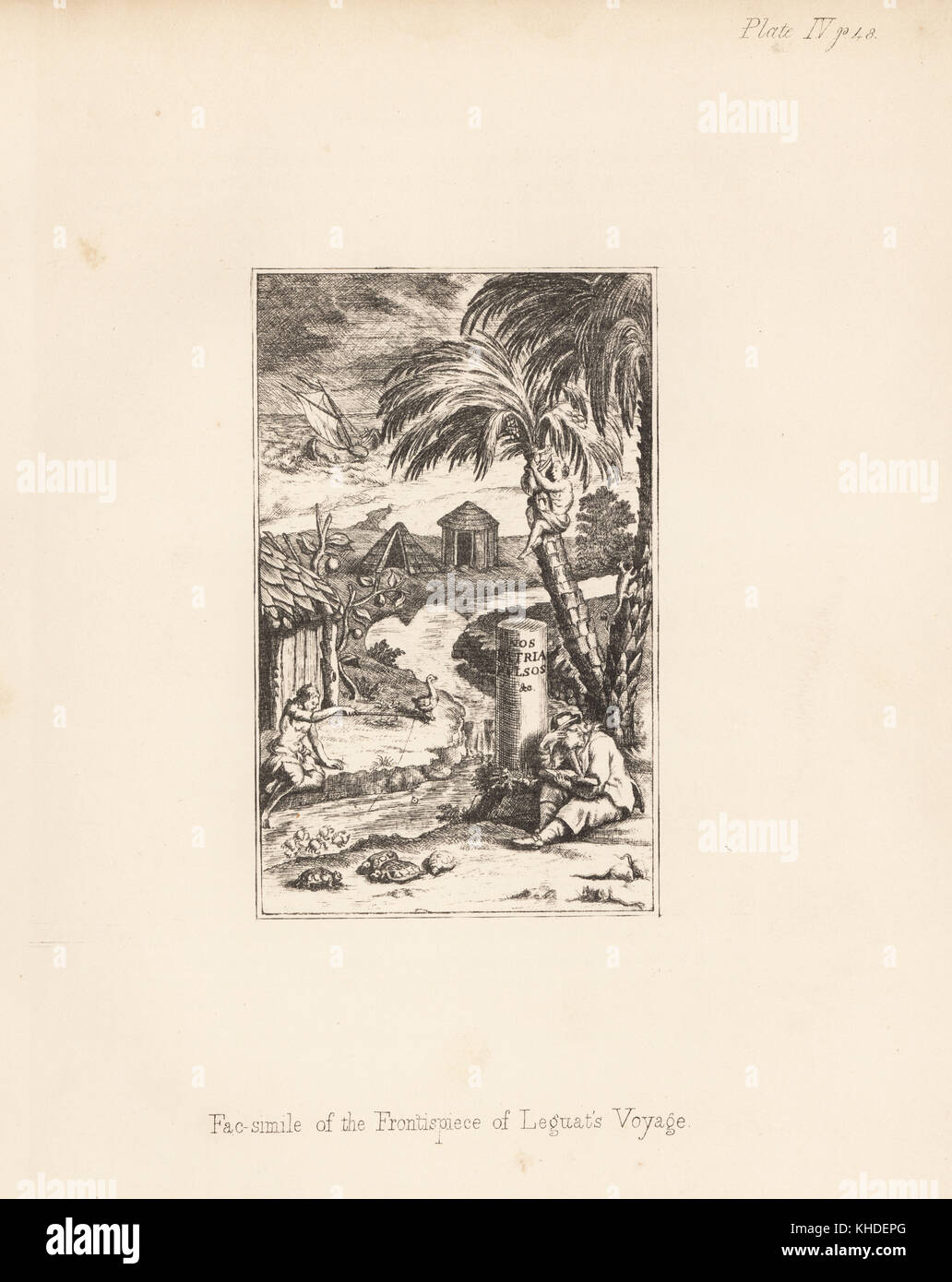 Rodrigues solitaire, Pezophaps solitaria and domed Rodrigues giant tortoise, Cylindraspis peltastes, both extinct. Facsimile of the frontispiece of Francois Leguat's Voyage, published 1708. Lithograph from Hugh Edwin Strickland and Alexander Gordon Melville's The Dodo and its Kindred, London, Reeve, Benham and Reeve, 1848. Stock Photohttps://www.alamy.com/image-license-details/?v=1https://www.alamy.com/stock-image-rodrigues-solitaire-pezophaps-solitaria-and-domed-rodrigues-giant-165639448.html
Rodrigues solitaire, Pezophaps solitaria and domed Rodrigues giant tortoise, Cylindraspis peltastes, both extinct. Facsimile of the frontispiece of Francois Leguat's Voyage, published 1708. Lithograph from Hugh Edwin Strickland and Alexander Gordon Melville's The Dodo and its Kindred, London, Reeve, Benham and Reeve, 1848. Stock Photohttps://www.alamy.com/image-license-details/?v=1https://www.alamy.com/stock-image-rodrigues-solitaire-pezophaps-solitaria-and-domed-rodrigues-giant-165639448.htmlRMKHDEPG–Rodrigues solitaire, Pezophaps solitaria and domed Rodrigues giant tortoise, Cylindraspis peltastes, both extinct. Facsimile of the frontispiece of Francois Leguat's Voyage, published 1708. Lithograph from Hugh Edwin Strickland and Alexander Gordon Melville's The Dodo and its Kindred, London, Reeve, Benham and Reeve, 1848.
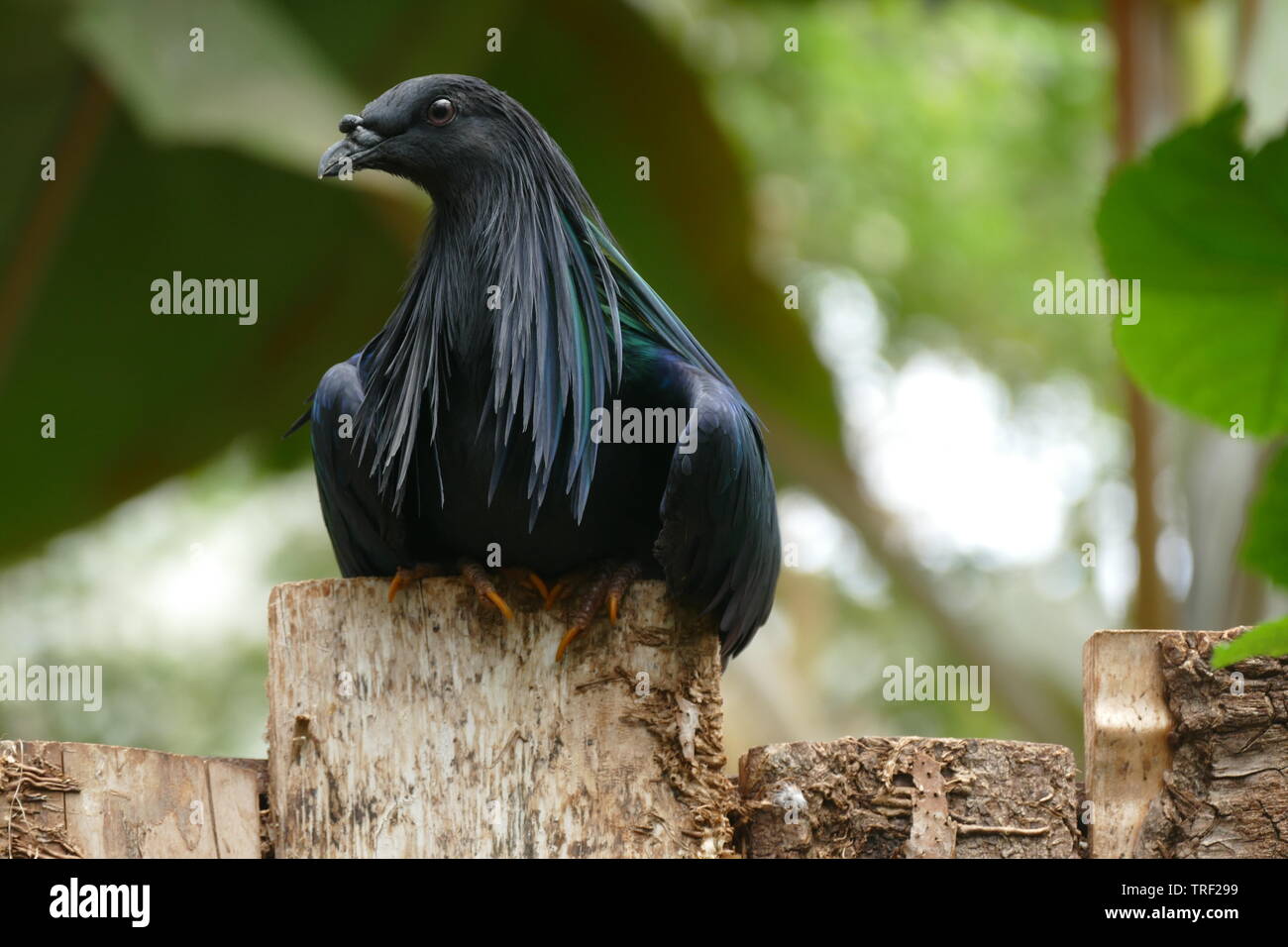 Nicobar pigeon, perched on a fence Stock Photohttps://www.alamy.com/image-license-details/?v=1https://www.alamy.com/nicobar-pigeon-perched-on-a-fence-image255413349.html
Nicobar pigeon, perched on a fence Stock Photohttps://www.alamy.com/image-license-details/?v=1https://www.alamy.com/nicobar-pigeon-perched-on-a-fence-image255413349.htmlRFTRF299–Nicobar pigeon, perched on a fence
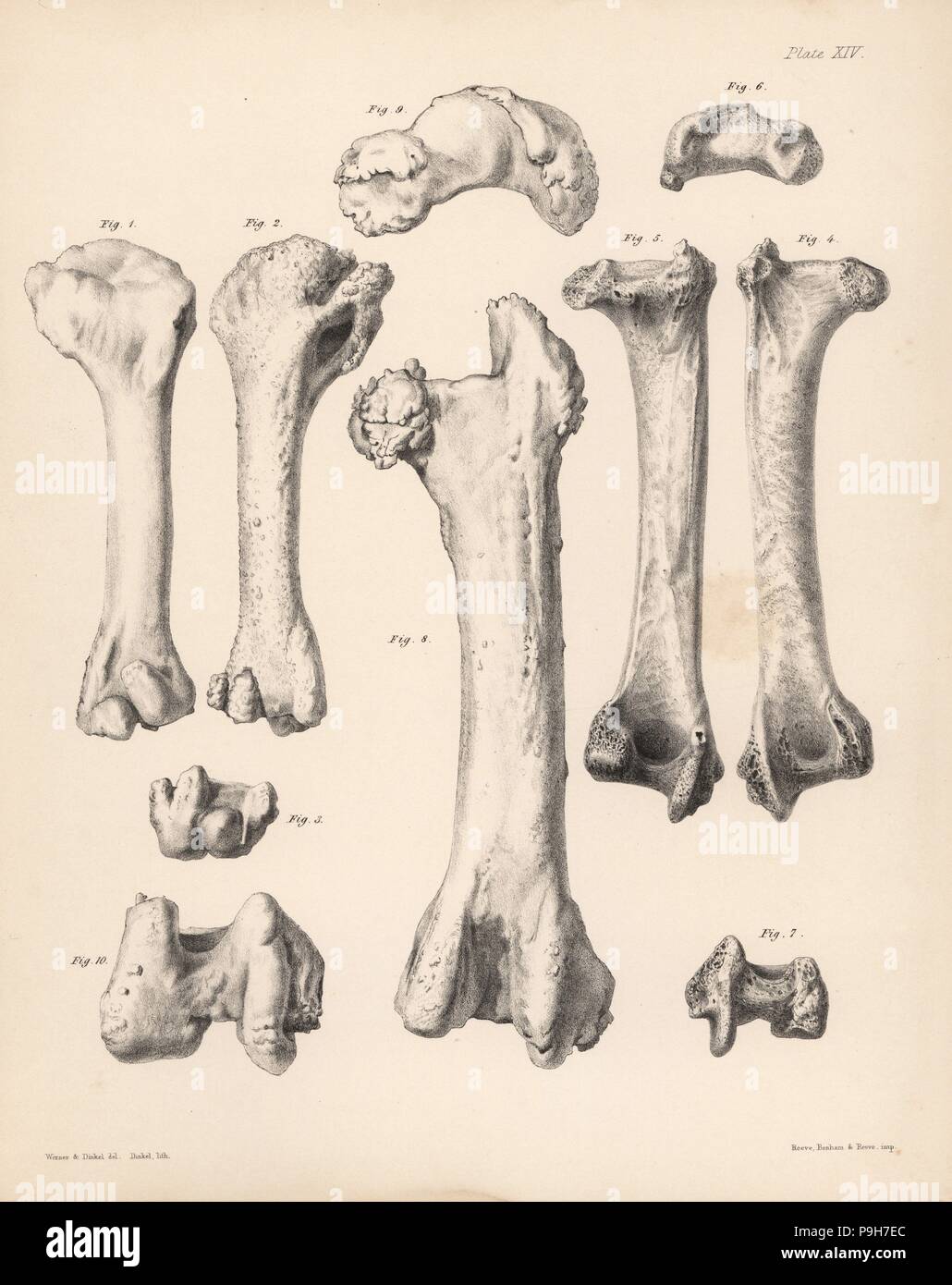 Humerus and femur of the extinct Rodrigues solitaire, Pezophaps solitaria, in the Parisian Collection and Andersonian Collection. Lithograph by Joseph Dinkel after Werner and Dinkel from Hugh Edwin Strickland and Alexander Gordon Melville's The Dodo and its Kindred, London, Reeve, Benham and Reeve, 1848. Stock Photohttps://www.alamy.com/image-license-details/?v=1https://www.alamy.com/humerus-and-femur-of-the-extinct-rodrigues-solitaire-pezophaps-solitaria-in-the-parisian-collection-and-andersonian-collection-lithograph-by-joseph-dinkel-after-werner-and-dinkel-from-hugh-edwin-strickland-and-alexander-gordon-melvilles-the-dodo-and-its-kindred-london-reeve-benham-and-reeve-1848-image212435396.html
Humerus and femur of the extinct Rodrigues solitaire, Pezophaps solitaria, in the Parisian Collection and Andersonian Collection. Lithograph by Joseph Dinkel after Werner and Dinkel from Hugh Edwin Strickland and Alexander Gordon Melville's The Dodo and its Kindred, London, Reeve, Benham and Reeve, 1848. Stock Photohttps://www.alamy.com/image-license-details/?v=1https://www.alamy.com/humerus-and-femur-of-the-extinct-rodrigues-solitaire-pezophaps-solitaria-in-the-parisian-collection-and-andersonian-collection-lithograph-by-joseph-dinkel-after-werner-and-dinkel-from-hugh-edwin-strickland-and-alexander-gordon-melvilles-the-dodo-and-its-kindred-london-reeve-benham-and-reeve-1848-image212435396.htmlRMP9H7EC–Humerus and femur of the extinct Rodrigues solitaire, Pezophaps solitaria, in the Parisian Collection and Andersonian Collection. Lithograph by Joseph Dinkel after Werner and Dinkel from Hugh Edwin Strickland and Alexander Gordon Melville's The Dodo and its Kindred, London, Reeve, Benham and Reeve, 1848.
 Caloenas nicobarica, Print, The Nicobar pigeon (Caloenas nicobarica) is a pigeon found on small islands and in coastal regions from the Andaman and Nicobar Islands, India, east through the Malay Archipelago, to the Solomons and Palau. It is the only living member of the genus Caloenas and might be the closest living relative of the extinct dodo, and extinct Rodrigues solitaire., 1700-1880 Stock Photohttps://www.alamy.com/image-license-details/?v=1https://www.alamy.com/caloenas-nicobarica-print-the-nicobar-pigeon-caloenas-nicobarica-is-a-pigeon-found-on-small-islands-and-in-coastal-regions-from-the-andaman-and-nicobar-islands-india-east-through-the-malay-archipelago-to-the-solomons-and-palau-it-is-the-only-living-member-of-the-genus-caloenas-and-might-be-the-closest-living-relative-of-the-extinct-dodo-and-extinct-rodrigues-solitaire-1700-1880-image328669289.html
Caloenas nicobarica, Print, The Nicobar pigeon (Caloenas nicobarica) is a pigeon found on small islands and in coastal regions from the Andaman and Nicobar Islands, India, east through the Malay Archipelago, to the Solomons and Palau. It is the only living member of the genus Caloenas and might be the closest living relative of the extinct dodo, and extinct Rodrigues solitaire., 1700-1880 Stock Photohttps://www.alamy.com/image-license-details/?v=1https://www.alamy.com/caloenas-nicobarica-print-the-nicobar-pigeon-caloenas-nicobarica-is-a-pigeon-found-on-small-islands-and-in-coastal-regions-from-the-andaman-and-nicobar-islands-india-east-through-the-malay-archipelago-to-the-solomons-and-palau-it-is-the-only-living-member-of-the-genus-caloenas-and-might-be-the-closest-living-relative-of-the-extinct-dodo-and-extinct-rodrigues-solitaire-1700-1880-image328669289.htmlRM2A2M50W–Caloenas nicobarica, Print, The Nicobar pigeon (Caloenas nicobarica) is a pigeon found on small islands and in coastal regions from the Andaman and Nicobar Islands, India, east through the Malay Archipelago, to the Solomons and Palau. It is the only living member of the genus Caloenas and might be the closest living relative of the extinct dodo, and extinct Rodrigues solitaire., 1700-1880
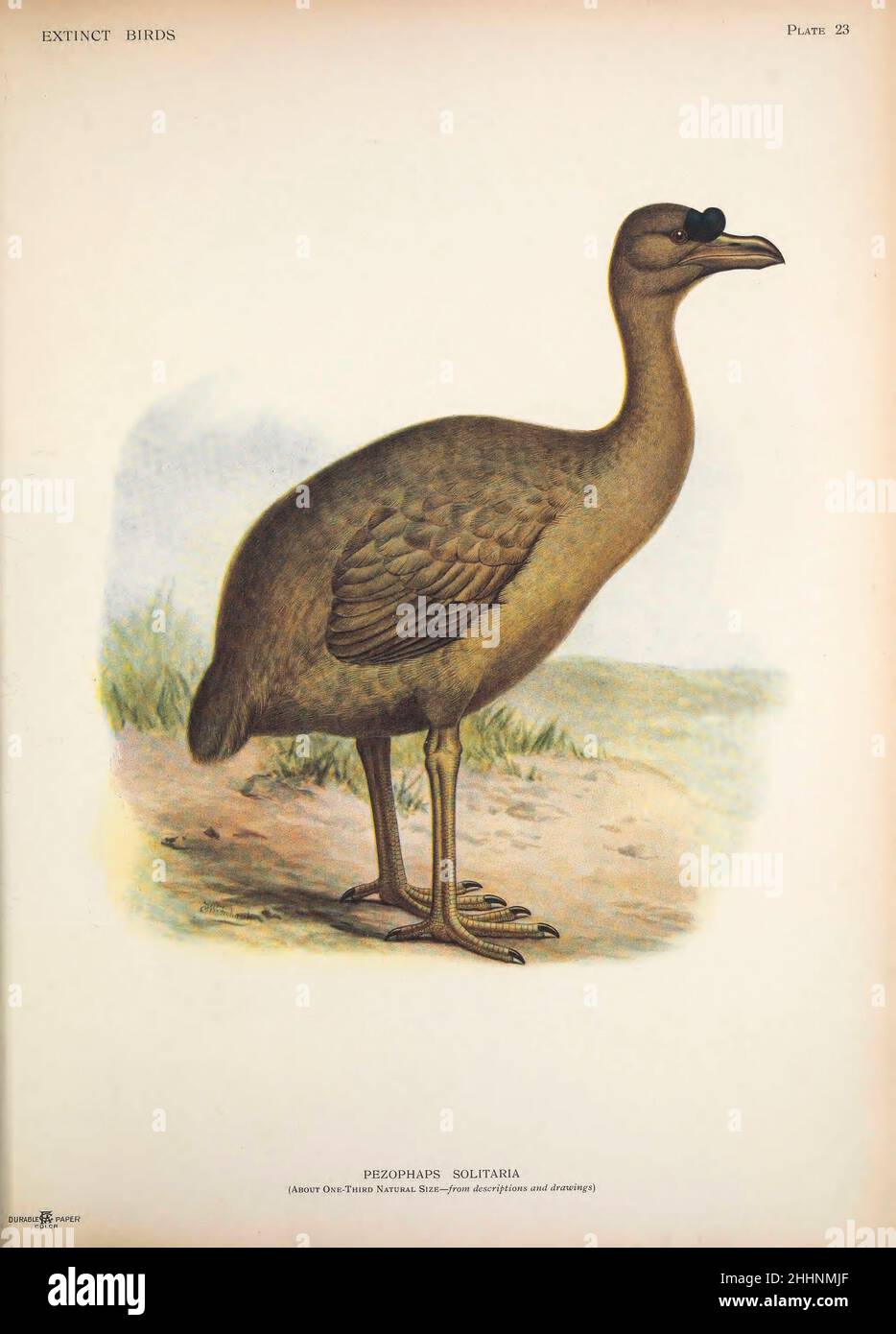 The Rodrigues solitaire (Pezophaps solitaria) is an extinct flightless bird that was endemic to the island of Rodrigues, east of Madagascar in the Indian Ocean Restoration by Frederick William Frohawk, 1907 from ' Extinct birds ' : an attempt to unite in one volume a short account of those birds which have become extinct in historical times : that is, within the last six or seven hundred years : to which are added a few which still exist, but are on the verge of extinction. by Baron, Lionel Walter Rothschild, 1868-1937 Published 1907 as a limited edition book in London by Hutchinson & Co. Stock Photohttps://www.alamy.com/image-license-details/?v=1https://www.alamy.com/the-rodrigues-solitaire-pezophaps-solitaria-is-an-extinct-flightless-bird-that-was-endemic-to-the-island-of-rodrigues-east-of-madagascar-in-the-indian-ocean-restoration-by-frederick-william-frohawk-1907-from-extinct-birds-an-attempt-to-unite-in-one-volume-a-short-account-of-those-birds-which-have-become-extinct-in-historical-times-that-is-within-the-last-six-or-seven-hundred-years-to-which-are-added-a-few-which-still-exist-but-are-on-the-verge-of-extinction-by-baron-lionel-walter-rothschild-1868-1937-published-1907-as-a-limited-edition-book-in-london-by-hutchinson-co-image458395911.html
The Rodrigues solitaire (Pezophaps solitaria) is an extinct flightless bird that was endemic to the island of Rodrigues, east of Madagascar in the Indian Ocean Restoration by Frederick William Frohawk, 1907 from ' Extinct birds ' : an attempt to unite in one volume a short account of those birds which have become extinct in historical times : that is, within the last six or seven hundred years : to which are added a few which still exist, but are on the verge of extinction. by Baron, Lionel Walter Rothschild, 1868-1937 Published 1907 as a limited edition book in London by Hutchinson & Co. Stock Photohttps://www.alamy.com/image-license-details/?v=1https://www.alamy.com/the-rodrigues-solitaire-pezophaps-solitaria-is-an-extinct-flightless-bird-that-was-endemic-to-the-island-of-rodrigues-east-of-madagascar-in-the-indian-ocean-restoration-by-frederick-william-frohawk-1907-from-extinct-birds-an-attempt-to-unite-in-one-volume-a-short-account-of-those-birds-which-have-become-extinct-in-historical-times-that-is-within-the-last-six-or-seven-hundred-years-to-which-are-added-a-few-which-still-exist-but-are-on-the-verge-of-extinction-by-baron-lionel-walter-rothschild-1868-1937-published-1907-as-a-limited-edition-book-in-london-by-hutchinson-co-image458395911.htmlRF2HHNMJF–The Rodrigues solitaire (Pezophaps solitaria) is an extinct flightless bird that was endemic to the island of Rodrigues, east of Madagascar in the Indian Ocean Restoration by Frederick William Frohawk, 1907 from ' Extinct birds ' : an attempt to unite in one volume a short account of those birds which have become extinct in historical times : that is, within the last six or seven hundred years : to which are added a few which still exist, but are on the verge of extinction. by Baron, Lionel Walter Rothschild, 1868-1937 Published 1907 as a limited edition book in London by Hutchinson & Co.
![Didus The Hooded Dodo [The dodo (Raphus cucullatus) is an extinct flightless bird that was endemic to the island of Mauritius, east of Madagascar in the Indian Ocean. The dodo's closest genetic relative was the also-extinct Rodrigues solitaire, the two forming the subfamily Raphinae of the family of pigeons and doves]. Copperplate engraving From the Encyclopaedia Londinensis or, Universal dictionary of arts, sciences, and literature; Volume V; Edited by Wilkes, John. Published in London in 1810 Stock Photo Didus The Hooded Dodo [The dodo (Raphus cucullatus) is an extinct flightless bird that was endemic to the island of Mauritius, east of Madagascar in the Indian Ocean. The dodo's closest genetic relative was the also-extinct Rodrigues solitaire, the two forming the subfamily Raphinae of the family of pigeons and doves]. Copperplate engraving From the Encyclopaedia Londinensis or, Universal dictionary of arts, sciences, and literature; Volume V; Edited by Wilkes, John. Published in London in 1810 Stock Photo](https://c8.alamy.com/comp/2G2935P/didus-the-hooded-dodo-the-dodo-raphus-cucullatus-is-an-extinct-flightless-bird-that-was-endemic-to-the-island-of-mauritius-east-of-madagascar-in-the-indian-ocean-the-dodos-closest-genetic-relative-was-the-also-extinct-rodrigues-solitaire-the-two-forming-the-subfamily-raphinae-of-the-family-of-pigeons-and-doves-copperplate-engraving-from-the-encyclopaedia-londinensis-or-universal-dictionary-of-arts-sciences-and-literature-volume-v-edited-by-wilkes-john-published-in-london-in-1810-2G2935P.jpg) Didus The Hooded Dodo [The dodo (Raphus cucullatus) is an extinct flightless bird that was endemic to the island of Mauritius, east of Madagascar in the Indian Ocean. The dodo's closest genetic relative was the also-extinct Rodrigues solitaire, the two forming the subfamily Raphinae of the family of pigeons and doves]. Copperplate engraving From the Encyclopaedia Londinensis or, Universal dictionary of arts, sciences, and literature; Volume V; Edited by Wilkes, John. Published in London in 1810 Stock Photohttps://www.alamy.com/image-license-details/?v=1https://www.alamy.com/didus-the-hooded-dodo-the-dodo-raphus-cucullatus-is-an-extinct-flightless-bird-that-was-endemic-to-the-island-of-mauritius-east-of-madagascar-in-the-indian-ocean-the-dodos-closest-genetic-relative-was-the-also-extinct-rodrigues-solitaire-the-two-forming-the-subfamily-raphinae-of-the-family-of-pigeons-and-doves-copperplate-engraving-from-the-encyclopaedia-londinensis-or-universal-dictionary-of-arts-sciences-and-literature-volume-v-edited-by-wilkes-john-published-in-london-in-1810-image431688594.html
Didus The Hooded Dodo [The dodo (Raphus cucullatus) is an extinct flightless bird that was endemic to the island of Mauritius, east of Madagascar in the Indian Ocean. The dodo's closest genetic relative was the also-extinct Rodrigues solitaire, the two forming the subfamily Raphinae of the family of pigeons and doves]. Copperplate engraving From the Encyclopaedia Londinensis or, Universal dictionary of arts, sciences, and literature; Volume V; Edited by Wilkes, John. Published in London in 1810 Stock Photohttps://www.alamy.com/image-license-details/?v=1https://www.alamy.com/didus-the-hooded-dodo-the-dodo-raphus-cucullatus-is-an-extinct-flightless-bird-that-was-endemic-to-the-island-of-mauritius-east-of-madagascar-in-the-indian-ocean-the-dodos-closest-genetic-relative-was-the-also-extinct-rodrigues-solitaire-the-two-forming-the-subfamily-raphinae-of-the-family-of-pigeons-and-doves-copperplate-engraving-from-the-encyclopaedia-londinensis-or-universal-dictionary-of-arts-sciences-and-literature-volume-v-edited-by-wilkes-john-published-in-london-in-1810-image431688594.htmlRM2G2935P–Didus The Hooded Dodo [The dodo (Raphus cucullatus) is an extinct flightless bird that was endemic to the island of Mauritius, east of Madagascar in the Indian Ocean. The dodo's closest genetic relative was the also-extinct Rodrigues solitaire, the two forming the subfamily Raphinae of the family of pigeons and doves]. Copperplate engraving From the Encyclopaedia Londinensis or, Universal dictionary of arts, sciences, and literature; Volume V; Edited by Wilkes, John. Published in London in 1810
 Rodrigues solitaire, Pezophaps solitaria and domed Rodrigues giant tortoise, Cylindraspis peltastes, both extinct. Facsimile of the frontispiece of Francois Leguat's Voyage, published 1708. Lithograph from Hugh Edwin Strickland and Alexander Gordon Melville's The Dodo and its Kindred, London, Reeve, Benham and Reeve, 1848. Stock Photohttps://www.alamy.com/image-license-details/?v=1https://www.alamy.com/stock-image-rodrigues-solitaire-pezophaps-solitaria-and-domed-rodrigues-giant-162813728.html
Rodrigues solitaire, Pezophaps solitaria and domed Rodrigues giant tortoise, Cylindraspis peltastes, both extinct. Facsimile of the frontispiece of Francois Leguat's Voyage, published 1708. Lithograph from Hugh Edwin Strickland and Alexander Gordon Melville's The Dodo and its Kindred, London, Reeve, Benham and Reeve, 1848. Stock Photohttps://www.alamy.com/image-license-details/?v=1https://www.alamy.com/stock-image-rodrigues-solitaire-pezophaps-solitaria-and-domed-rodrigues-giant-162813728.htmlRMKCTPG0–Rodrigues solitaire, Pezophaps solitaria and domed Rodrigues giant tortoise, Cylindraspis peltastes, both extinct. Facsimile of the frontispiece of Francois Leguat's Voyage, published 1708. Lithograph from Hugh Edwin Strickland and Alexander Gordon Melville's The Dodo and its Kindred, London, Reeve, Benham and Reeve, 1848.
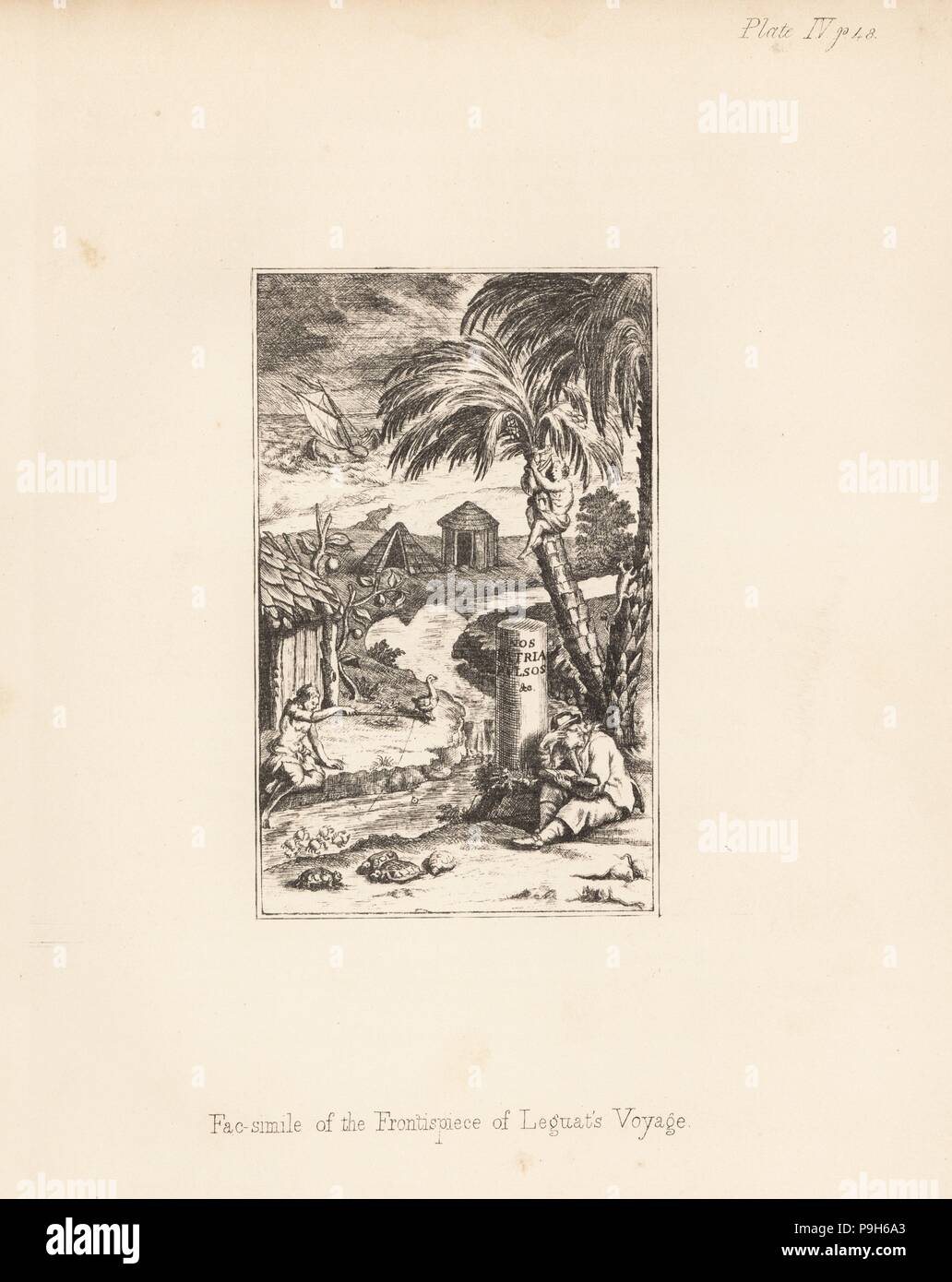 Rodrigues solitaire, Pezophaps solitaria and domed Rodrigues giant tortoise, Cylindraspis peltastes, both extinct. Facsimile of the frontispiece of Francois Leguat's Voyage, published 1708. Lithograph from Hugh Edwin Strickland and Alexander Gordon Melville's The Dodo and its Kindred, London, Reeve, Benham and Reeve, 1848. Stock Photohttps://www.alamy.com/image-license-details/?v=1https://www.alamy.com/rodrigues-solitaire-pezophaps-solitaria-and-domed-rodrigues-giant-tortoise-cylindraspis-peltastes-both-extinct-facsimile-of-the-frontispiece-of-francois-leguats-voyage-published-1708-lithograph-from-hugh-edwin-strickland-and-alexander-gordon-melvilles-the-dodo-and-its-kindred-london-reeve-benham-and-reeve-1848-image212434491.html
Rodrigues solitaire, Pezophaps solitaria and domed Rodrigues giant tortoise, Cylindraspis peltastes, both extinct. Facsimile of the frontispiece of Francois Leguat's Voyage, published 1708. Lithograph from Hugh Edwin Strickland and Alexander Gordon Melville's The Dodo and its Kindred, London, Reeve, Benham and Reeve, 1848. Stock Photohttps://www.alamy.com/image-license-details/?v=1https://www.alamy.com/rodrigues-solitaire-pezophaps-solitaria-and-domed-rodrigues-giant-tortoise-cylindraspis-peltastes-both-extinct-facsimile-of-the-frontispiece-of-francois-leguats-voyage-published-1708-lithograph-from-hugh-edwin-strickland-and-alexander-gordon-melvilles-the-dodo-and-its-kindred-london-reeve-benham-and-reeve-1848-image212434491.htmlRMP9H6A3–Rodrigues solitaire, Pezophaps solitaria and domed Rodrigues giant tortoise, Cylindraspis peltastes, both extinct. Facsimile of the frontispiece of Francois Leguat's Voyage, published 1708. Lithograph from Hugh Edwin Strickland and Alexander Gordon Melville's The Dodo and its Kindred, London, Reeve, Benham and Reeve, 1848.
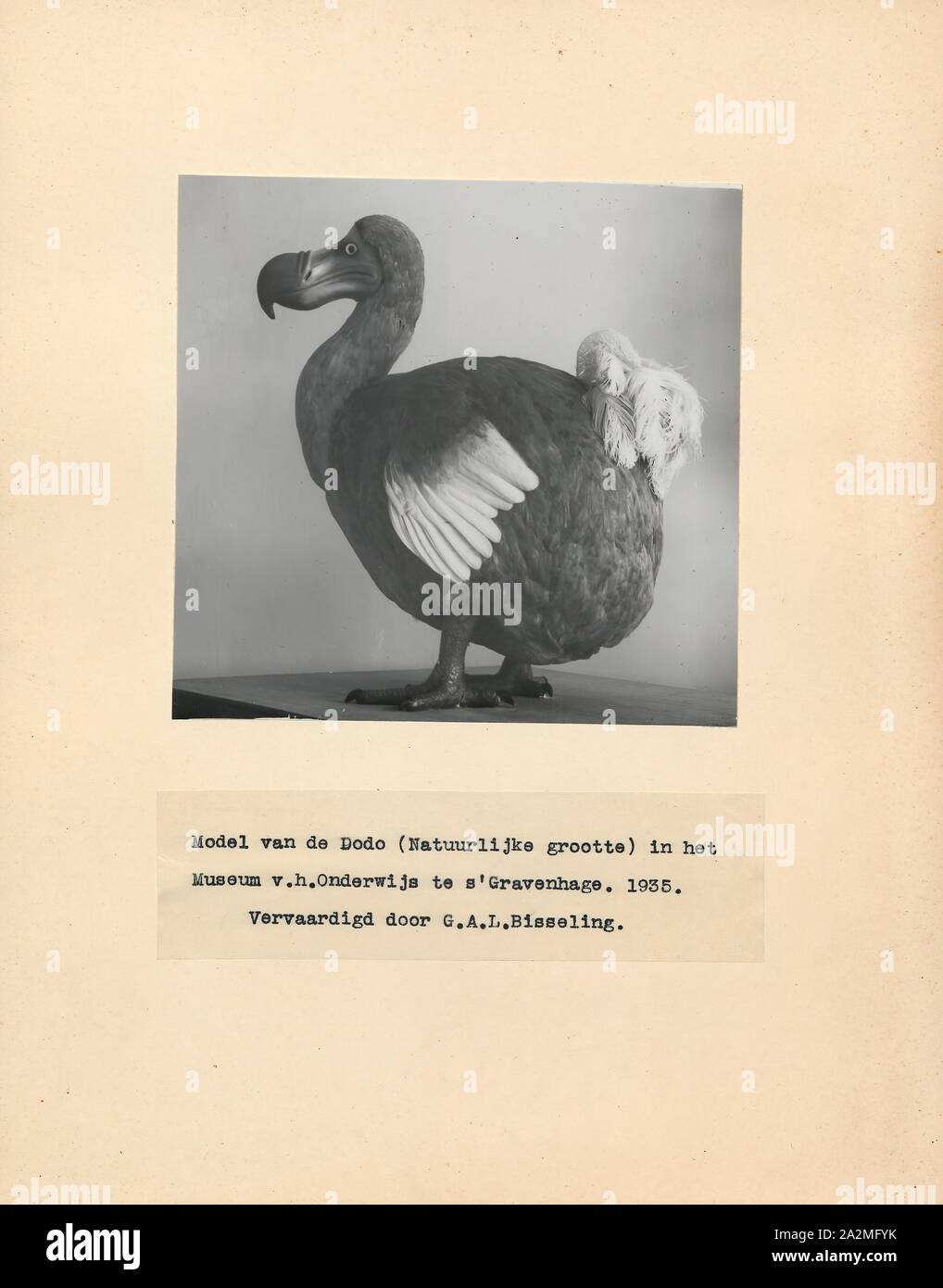 Didus ineptus, Print, The dodo (Raphus cucullatus) is an extinct flightless bird that was endemic to the island of Mauritius, east of Madagascar in the Indian Ocean. The dodo's closest genetic relative was the also-extinct Rodrigues solitaire, the two forming the subfamily Raphinae of the family of pigeons and doves. The closest living relative of the dodo is the Nicobar pigeon. A white dodo was once thought to have existed on the nearby island of Réunion, but this is now thought to have been confusion based on the Réunion ibis and paintings of white dodos Stock Photohttps://www.alamy.com/image-license-details/?v=1https://www.alamy.com/didus-ineptus-print-the-dodo-raphus-cucullatus-is-an-extinct-flightless-bird-that-was-endemic-to-the-island-of-mauritius-east-of-madagascar-in-the-indian-ocean-the-dodos-closest-genetic-relative-was-the-also-extinct-rodrigues-solitaire-the-two-forming-the-subfamily-raphinae-of-the-family-of-pigeons-and-doves-the-closest-living-relative-of-the-dodo-is-the-nicobar-pigeon-a-white-dodo-was-once-thought-to-have-existed-on-the-nearby-island-of-runion-but-this-is-now-thought-to-have-been-confusion-based-on-the-runion-ibis-and-paintings-of-white-dodos-image328677879.html
Didus ineptus, Print, The dodo (Raphus cucullatus) is an extinct flightless bird that was endemic to the island of Mauritius, east of Madagascar in the Indian Ocean. The dodo's closest genetic relative was the also-extinct Rodrigues solitaire, the two forming the subfamily Raphinae of the family of pigeons and doves. The closest living relative of the dodo is the Nicobar pigeon. A white dodo was once thought to have existed on the nearby island of Réunion, but this is now thought to have been confusion based on the Réunion ibis and paintings of white dodos Stock Photohttps://www.alamy.com/image-license-details/?v=1https://www.alamy.com/didus-ineptus-print-the-dodo-raphus-cucullatus-is-an-extinct-flightless-bird-that-was-endemic-to-the-island-of-mauritius-east-of-madagascar-in-the-indian-ocean-the-dodos-closest-genetic-relative-was-the-also-extinct-rodrigues-solitaire-the-two-forming-the-subfamily-raphinae-of-the-family-of-pigeons-and-doves-the-closest-living-relative-of-the-dodo-is-the-nicobar-pigeon-a-white-dodo-was-once-thought-to-have-existed-on-the-nearby-island-of-runion-but-this-is-now-thought-to-have-been-confusion-based-on-the-runion-ibis-and-paintings-of-white-dodos-image328677879.htmlRM2A2MFYK–Didus ineptus, Print, The dodo (Raphus cucullatus) is an extinct flightless bird that was endemic to the island of Mauritius, east of Madagascar in the Indian Ocean. The dodo's closest genetic relative was the also-extinct Rodrigues solitaire, the two forming the subfamily Raphinae of the family of pigeons and doves. The closest living relative of the dodo is the Nicobar pigeon. A white dodo was once thought to have existed on the nearby island of Réunion, but this is now thought to have been confusion based on the Réunion ibis and paintings of white dodos
![Didus The Hooded Dodo [The dodo (Raphus cucullatus) is an extinct flightless bird that was endemic to the island of Mauritius, east of Madagascar in the Indian Ocean. The dodo's closest genetic relative was the also-extinct Rodrigues solitaire, the two forming the subfamily Raphinae of the family of pigeons and doves]. Copperplate engraving From the Encyclopaedia Londinensis or, Universal dictionary of arts, sciences, and literature; Volume V; Edited by Wilkes, John. Published in London in 1810 Stock Photo Didus The Hooded Dodo [The dodo (Raphus cucullatus) is an extinct flightless bird that was endemic to the island of Mauritius, east of Madagascar in the Indian Ocean. The dodo's closest genetic relative was the also-extinct Rodrigues solitaire, the two forming the subfamily Raphinae of the family of pigeons and doves]. Copperplate engraving From the Encyclopaedia Londinensis or, Universal dictionary of arts, sciences, and literature; Volume V; Edited by Wilkes, John. Published in London in 1810 Stock Photo](https://c8.alamy.com/comp/2FMG9TB/didus-the-hooded-dodo-the-dodo-raphus-cucullatus-is-an-extinct-flightless-bird-that-was-endemic-to-the-island-of-mauritius-east-of-madagascar-in-the-indian-ocean-the-dodos-closest-genetic-relative-was-the-also-extinct-rodrigues-solitaire-the-two-forming-the-subfamily-raphinae-of-the-family-of-pigeons-and-doves-copperplate-engraving-from-the-encyclopaedia-londinensis-or-universal-dictionary-of-arts-sciences-and-literature-volume-v-edited-by-wilkes-john-published-in-london-in-1810-2FMG9TB.jpg) Didus The Hooded Dodo [The dodo (Raphus cucullatus) is an extinct flightless bird that was endemic to the island of Mauritius, east of Madagascar in the Indian Ocean. The dodo's closest genetic relative was the also-extinct Rodrigues solitaire, the two forming the subfamily Raphinae of the family of pigeons and doves]. Copperplate engraving From the Encyclopaedia Londinensis or, Universal dictionary of arts, sciences, and literature; Volume V; Edited by Wilkes, John. Published in London in 1810 Stock Photohttps://www.alamy.com/image-license-details/?v=1https://www.alamy.com/didus-the-hooded-dodo-the-dodo-raphus-cucullatus-is-an-extinct-flightless-bird-that-was-endemic-to-the-island-of-mauritius-east-of-madagascar-in-the-indian-ocean-the-dodos-closest-genetic-relative-was-the-also-extinct-rodrigues-solitaire-the-two-forming-the-subfamily-raphinae-of-the-family-of-pigeons-and-doves-copperplate-engraving-from-the-encyclopaedia-londinensis-or-universal-dictionary-of-arts-sciences-and-literature-volume-v-edited-by-wilkes-john-published-in-london-in-1810-image425700923.html
Didus The Hooded Dodo [The dodo (Raphus cucullatus) is an extinct flightless bird that was endemic to the island of Mauritius, east of Madagascar in the Indian Ocean. The dodo's closest genetic relative was the also-extinct Rodrigues solitaire, the two forming the subfamily Raphinae of the family of pigeons and doves]. Copperplate engraving From the Encyclopaedia Londinensis or, Universal dictionary of arts, sciences, and literature; Volume V; Edited by Wilkes, John. Published in London in 1810 Stock Photohttps://www.alamy.com/image-license-details/?v=1https://www.alamy.com/didus-the-hooded-dodo-the-dodo-raphus-cucullatus-is-an-extinct-flightless-bird-that-was-endemic-to-the-island-of-mauritius-east-of-madagascar-in-the-indian-ocean-the-dodos-closest-genetic-relative-was-the-also-extinct-rodrigues-solitaire-the-two-forming-the-subfamily-raphinae-of-the-family-of-pigeons-and-doves-copperplate-engraving-from-the-encyclopaedia-londinensis-or-universal-dictionary-of-arts-sciences-and-literature-volume-v-edited-by-wilkes-john-published-in-london-in-1810-image425700923.htmlRM2FMG9TB–Didus The Hooded Dodo [The dodo (Raphus cucullatus) is an extinct flightless bird that was endemic to the island of Mauritius, east of Madagascar in the Indian Ocean. The dodo's closest genetic relative was the also-extinct Rodrigues solitaire, the two forming the subfamily Raphinae of the family of pigeons and doves]. Copperplate engraving From the Encyclopaedia Londinensis or, Universal dictionary of arts, sciences, and literature; Volume V; Edited by Wilkes, John. Published in London in 1810
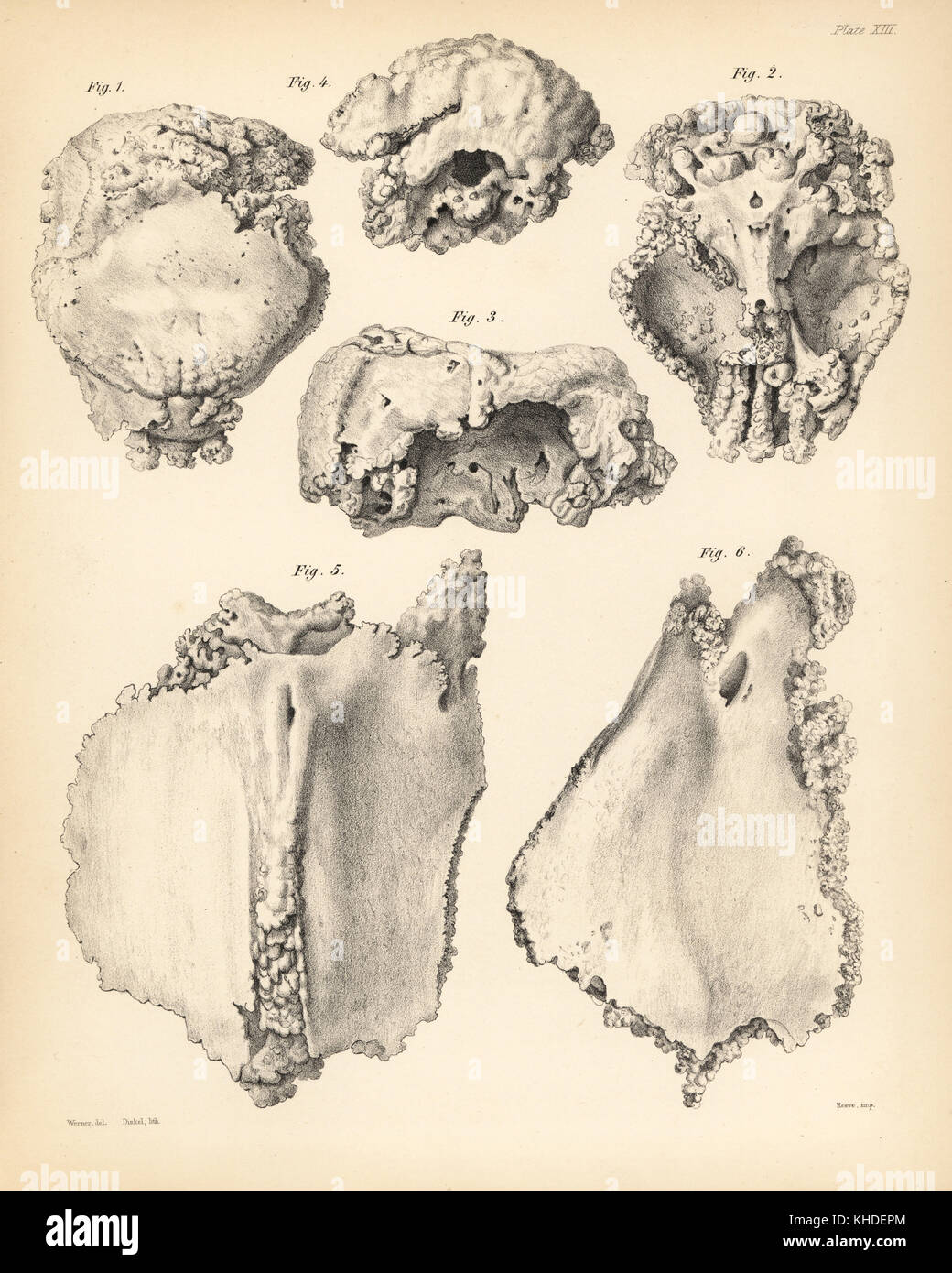 Cranium 1-4 and part of sternum 5,6 of the extinct Rodrigues solitaire, Pezophaps solitaria, in the Parisian Collection. Lithograph by Joseph Dinkel after Werner from Hugh Edwin Strickland and Alexander Gordon Melville's The Dodo and its Kindred, London, Reeve, Benham and Reeve, 1848. Stock Photohttps://www.alamy.com/image-license-details/?v=1https://www.alamy.com/stock-image-cranium-1-4-and-part-of-sternum-56-of-the-extinct-rodrigues-solitaire-165639452.html
Cranium 1-4 and part of sternum 5,6 of the extinct Rodrigues solitaire, Pezophaps solitaria, in the Parisian Collection. Lithograph by Joseph Dinkel after Werner from Hugh Edwin Strickland and Alexander Gordon Melville's The Dodo and its Kindred, London, Reeve, Benham and Reeve, 1848. Stock Photohttps://www.alamy.com/image-license-details/?v=1https://www.alamy.com/stock-image-cranium-1-4-and-part-of-sternum-56-of-the-extinct-rodrigues-solitaire-165639452.htmlRMKHDEPM–Cranium 1-4 and part of sternum 5,6 of the extinct Rodrigues solitaire, Pezophaps solitaria, in the Parisian Collection. Lithograph by Joseph Dinkel after Werner from Hugh Edwin Strickland and Alexander Gordon Melville's The Dodo and its Kindred, London, Reeve, Benham and Reeve, 1848.
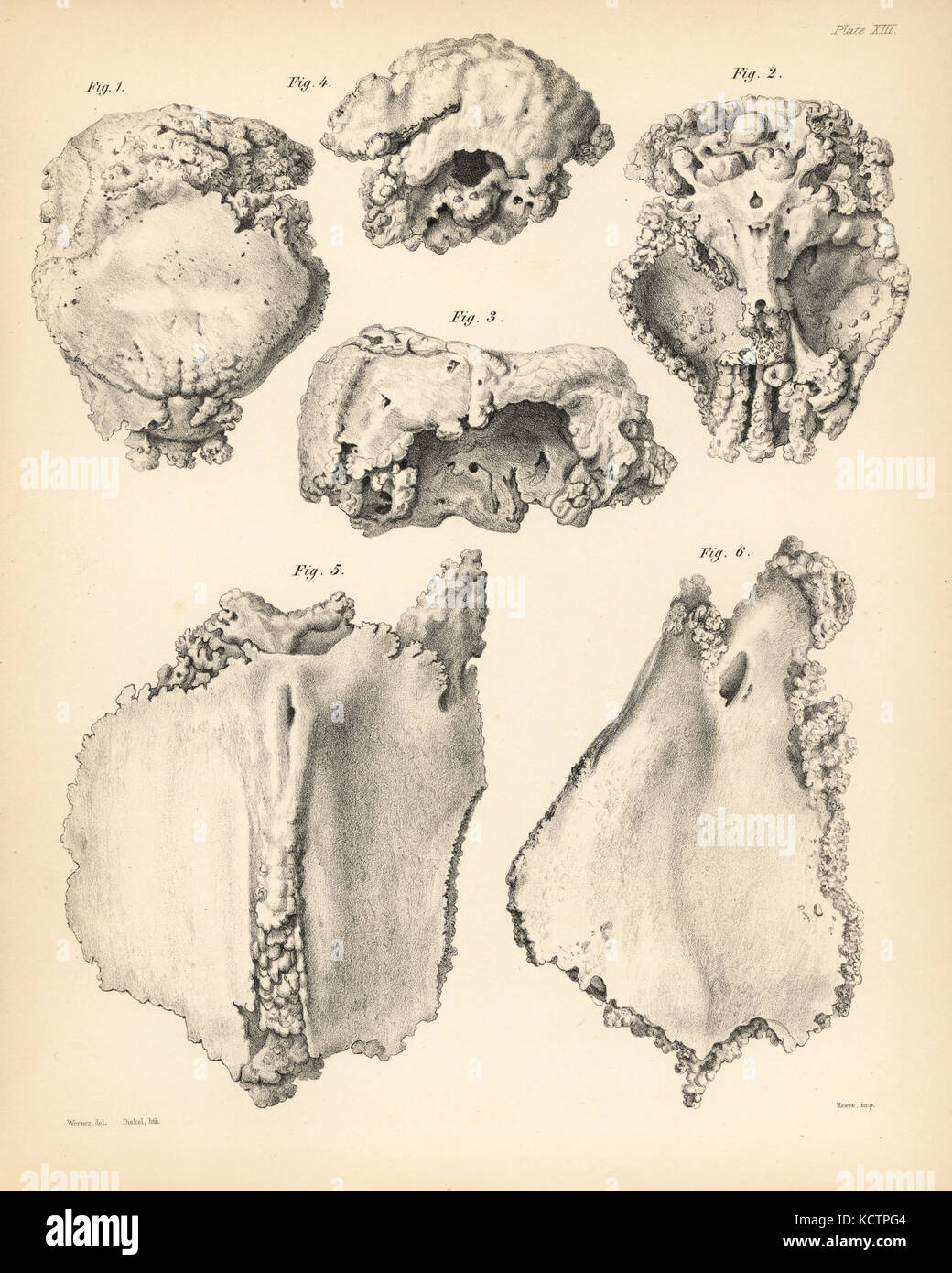 Cranium 1-4 and part of sternum 5,6 of the extinct Rodrigues solitaire, Pezophaps solitaria, in the Parisian Collection. Lithograph by Joseph Dinkel after Werner from Hugh Edwin Strickland and Alexander Gordon Melville's The Dodo and its Kindred, London, Reeve, Benham and Reeve, 1848. Stock Photohttps://www.alamy.com/image-license-details/?v=1https://www.alamy.com/stock-image-cranium-1-4-and-part-of-sternum-56-of-the-extinct-rodrigues-solitaire-162813732.html
Cranium 1-4 and part of sternum 5,6 of the extinct Rodrigues solitaire, Pezophaps solitaria, in the Parisian Collection. Lithograph by Joseph Dinkel after Werner from Hugh Edwin Strickland and Alexander Gordon Melville's The Dodo and its Kindred, London, Reeve, Benham and Reeve, 1848. Stock Photohttps://www.alamy.com/image-license-details/?v=1https://www.alamy.com/stock-image-cranium-1-4-and-part-of-sternum-56-of-the-extinct-rodrigues-solitaire-162813732.htmlRMKCTPG4–Cranium 1-4 and part of sternum 5,6 of the extinct Rodrigues solitaire, Pezophaps solitaria, in the Parisian Collection. Lithograph by Joseph Dinkel after Werner from Hugh Edwin Strickland and Alexander Gordon Melville's The Dodo and its Kindred, London, Reeve, Benham and Reeve, 1848.
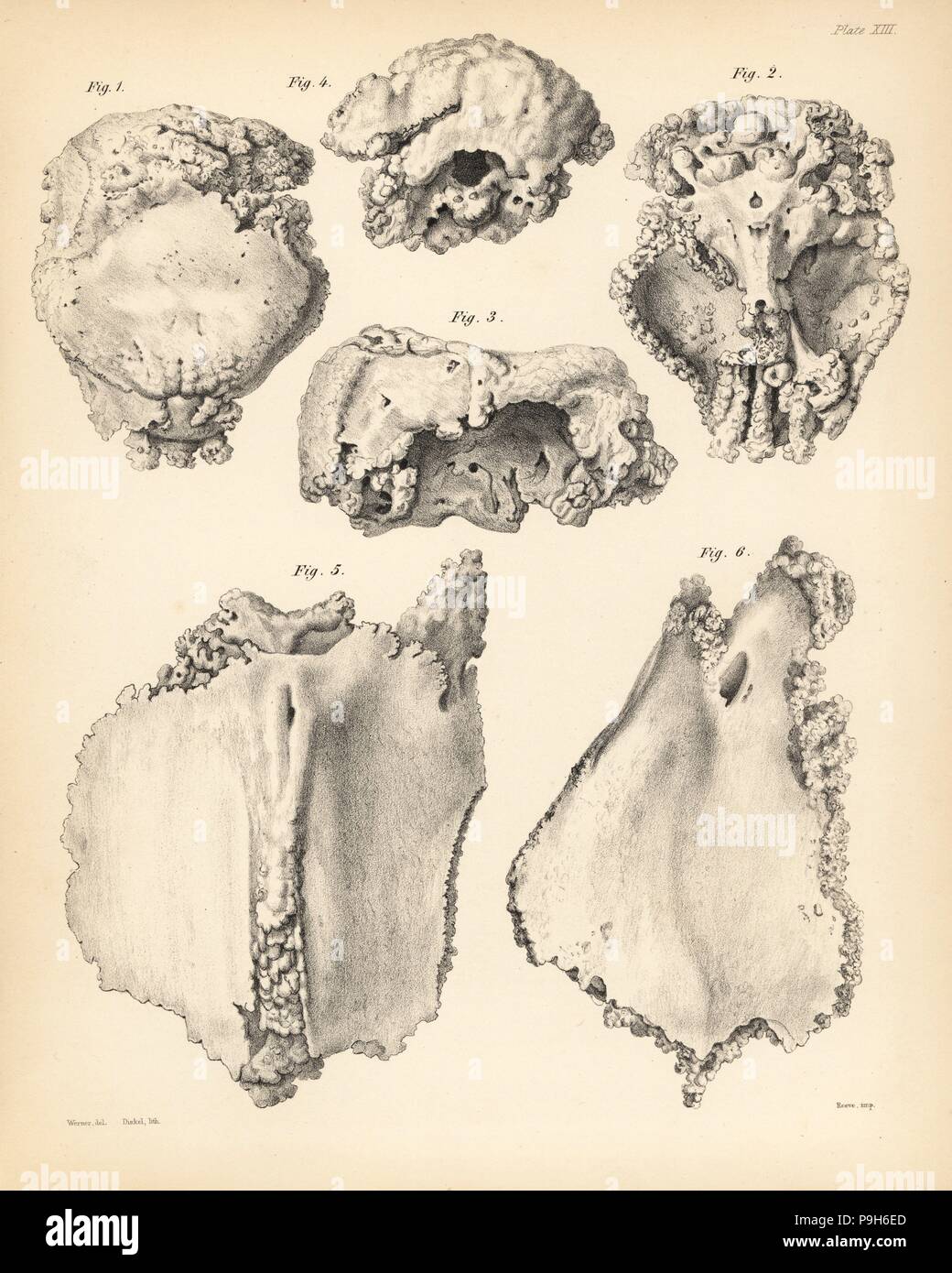 Cranium 1-4 and part of sternum 5,6 of the extinct Rodrigues solitaire, Pezophaps solitaria, in the Parisian Collection. Lithograph by Joseph Dinkel after Werner from Hugh Edwin Strickland and Alexander Gordon Melville's The Dodo and its Kindred, London, Reeve, Benham and Reeve, 1848. Stock Photohttps://www.alamy.com/image-license-details/?v=1https://www.alamy.com/cranium-1-4-and-part-of-sternum-56-of-the-extinct-rodrigues-solitaire-pezophaps-solitaria-in-the-parisian-collection-lithograph-by-joseph-dinkel-after-werner-from-hugh-edwin-strickland-and-alexander-gordon-melvilles-the-dodo-and-its-kindred-london-reeve-benham-and-reeve-1848-image212434613.html
Cranium 1-4 and part of sternum 5,6 of the extinct Rodrigues solitaire, Pezophaps solitaria, in the Parisian Collection. Lithograph by Joseph Dinkel after Werner from Hugh Edwin Strickland and Alexander Gordon Melville's The Dodo and its Kindred, London, Reeve, Benham and Reeve, 1848. Stock Photohttps://www.alamy.com/image-license-details/?v=1https://www.alamy.com/cranium-1-4-and-part-of-sternum-56-of-the-extinct-rodrigues-solitaire-pezophaps-solitaria-in-the-parisian-collection-lithograph-by-joseph-dinkel-after-werner-from-hugh-edwin-strickland-and-alexander-gordon-melvilles-the-dodo-and-its-kindred-london-reeve-benham-and-reeve-1848-image212434613.htmlRMP9H6ED–Cranium 1-4 and part of sternum 5,6 of the extinct Rodrigues solitaire, Pezophaps solitaria, in the Parisian Collection. Lithograph by Joseph Dinkel after Werner from Hugh Edwin Strickland and Alexander Gordon Melville's The Dodo and its Kindred, London, Reeve, Benham and Reeve, 1848.
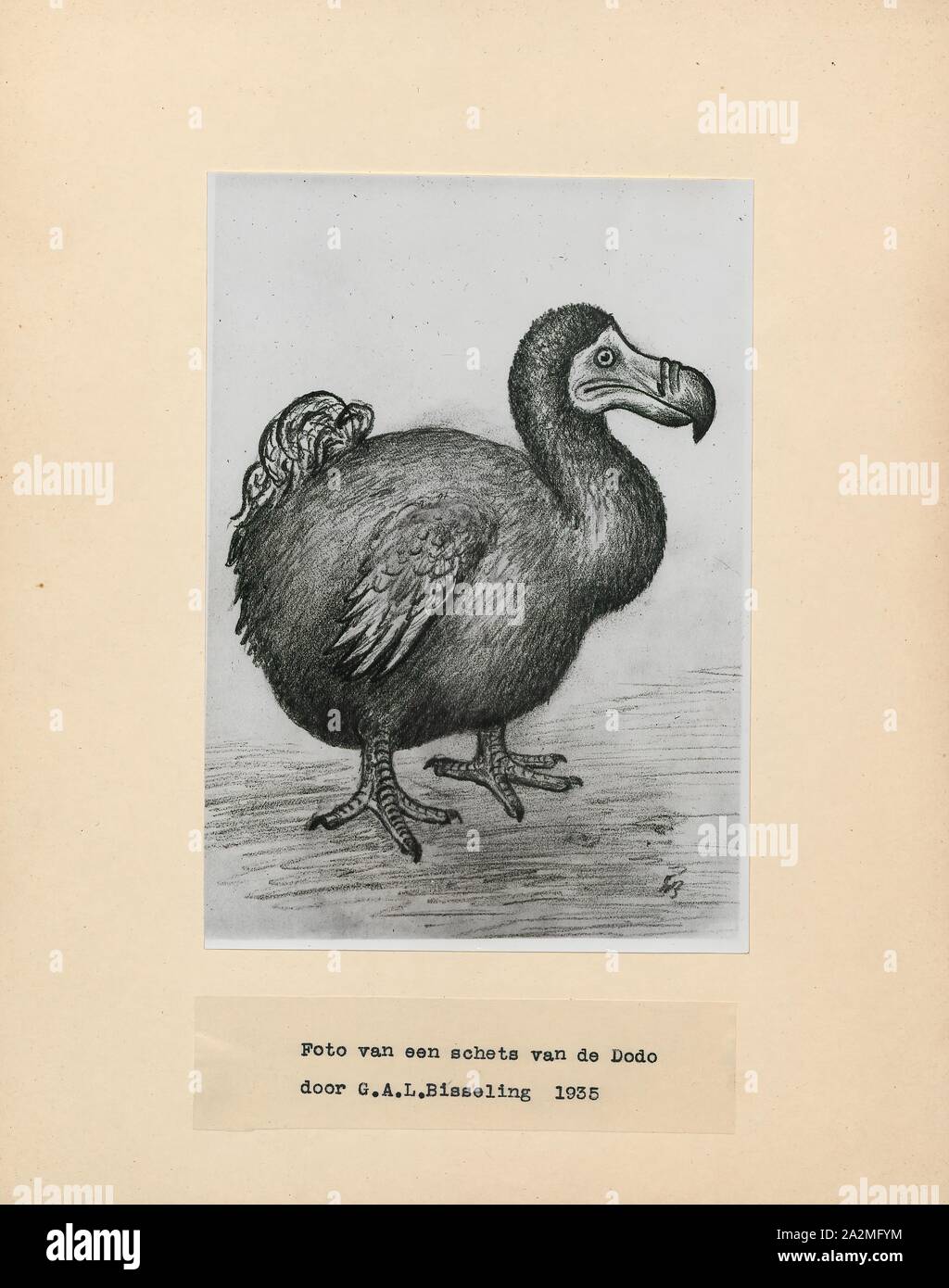 Didus ineptus, Print, The dodo (Raphus cucullatus) is an extinct flightless bird that was endemic to the island of Mauritius, east of Madagascar in the Indian Ocean. The dodo's closest genetic relative was the also-extinct Rodrigues solitaire, the two forming the subfamily Raphinae of the family of pigeons and doves. The closest living relative of the dodo is the Nicobar pigeon. A white dodo was once thought to have existed on the nearby island of Réunion, but this is now thought to have been confusion based on the Réunion ibis and paintings of white dodos Stock Photohttps://www.alamy.com/image-license-details/?v=1https://www.alamy.com/didus-ineptus-print-the-dodo-raphus-cucullatus-is-an-extinct-flightless-bird-that-was-endemic-to-the-island-of-mauritius-east-of-madagascar-in-the-indian-ocean-the-dodos-closest-genetic-relative-was-the-also-extinct-rodrigues-solitaire-the-two-forming-the-subfamily-raphinae-of-the-family-of-pigeons-and-doves-the-closest-living-relative-of-the-dodo-is-the-nicobar-pigeon-a-white-dodo-was-once-thought-to-have-existed-on-the-nearby-island-of-runion-but-this-is-now-thought-to-have-been-confusion-based-on-the-runion-ibis-and-paintings-of-white-dodos-image328677880.html
Didus ineptus, Print, The dodo (Raphus cucullatus) is an extinct flightless bird that was endemic to the island of Mauritius, east of Madagascar in the Indian Ocean. The dodo's closest genetic relative was the also-extinct Rodrigues solitaire, the two forming the subfamily Raphinae of the family of pigeons and doves. The closest living relative of the dodo is the Nicobar pigeon. A white dodo was once thought to have existed on the nearby island of Réunion, but this is now thought to have been confusion based on the Réunion ibis and paintings of white dodos Stock Photohttps://www.alamy.com/image-license-details/?v=1https://www.alamy.com/didus-ineptus-print-the-dodo-raphus-cucullatus-is-an-extinct-flightless-bird-that-was-endemic-to-the-island-of-mauritius-east-of-madagascar-in-the-indian-ocean-the-dodos-closest-genetic-relative-was-the-also-extinct-rodrigues-solitaire-the-two-forming-the-subfamily-raphinae-of-the-family-of-pigeons-and-doves-the-closest-living-relative-of-the-dodo-is-the-nicobar-pigeon-a-white-dodo-was-once-thought-to-have-existed-on-the-nearby-island-of-runion-but-this-is-now-thought-to-have-been-confusion-based-on-the-runion-ibis-and-paintings-of-white-dodos-image328677880.htmlRM2A2MFYM–Didus ineptus, Print, The dodo (Raphus cucullatus) is an extinct flightless bird that was endemic to the island of Mauritius, east of Madagascar in the Indian Ocean. The dodo's closest genetic relative was the also-extinct Rodrigues solitaire, the two forming the subfamily Raphinae of the family of pigeons and doves. The closest living relative of the dodo is the Nicobar pigeon. A white dodo was once thought to have existed on the nearby island of Réunion, but this is now thought to have been confusion based on the Réunion ibis and paintings of white dodos
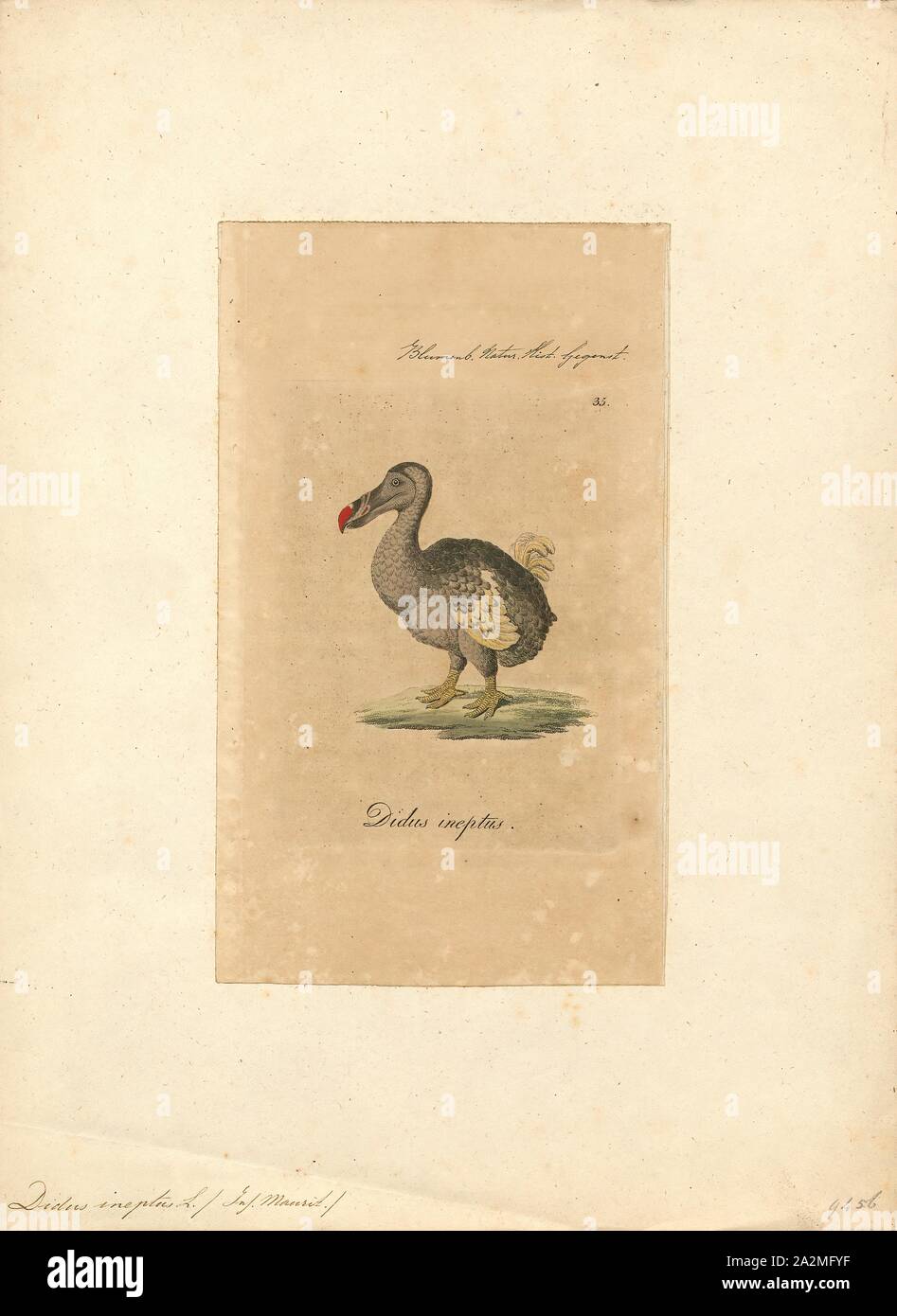 Didus ineptus, Print, The dodo (Raphus cucullatus) is an extinct flightless bird that was endemic to the island of Mauritius, east of Madagascar in the Indian Ocean. The dodo's closest genetic relative was the also-extinct Rodrigues solitaire, the two forming the subfamily Raphinae of the family of pigeons and doves. The closest living relative of the dodo is the Nicobar pigeon. A white dodo was once thought to have existed on the nearby island of Réunion, but this is now thought to have been confusion based on the Réunion ibis and paintings of white dodos., 1810 Stock Photohttps://www.alamy.com/image-license-details/?v=1https://www.alamy.com/didus-ineptus-print-the-dodo-raphus-cucullatus-is-an-extinct-flightless-bird-that-was-endemic-to-the-island-of-mauritius-east-of-madagascar-in-the-indian-ocean-the-dodos-closest-genetic-relative-was-the-also-extinct-rodrigues-solitaire-the-two-forming-the-subfamily-raphinae-of-the-family-of-pigeons-and-doves-the-closest-living-relative-of-the-dodo-is-the-nicobar-pigeon-a-white-dodo-was-once-thought-to-have-existed-on-the-nearby-island-of-runion-but-this-is-now-thought-to-have-been-confusion-based-on-the-runion-ibis-and-paintings-of-white-dodos-1810-image328677875.html
Didus ineptus, Print, The dodo (Raphus cucullatus) is an extinct flightless bird that was endemic to the island of Mauritius, east of Madagascar in the Indian Ocean. The dodo's closest genetic relative was the also-extinct Rodrigues solitaire, the two forming the subfamily Raphinae of the family of pigeons and doves. The closest living relative of the dodo is the Nicobar pigeon. A white dodo was once thought to have existed on the nearby island of Réunion, but this is now thought to have been confusion based on the Réunion ibis and paintings of white dodos., 1810 Stock Photohttps://www.alamy.com/image-license-details/?v=1https://www.alamy.com/didus-ineptus-print-the-dodo-raphus-cucullatus-is-an-extinct-flightless-bird-that-was-endemic-to-the-island-of-mauritius-east-of-madagascar-in-the-indian-ocean-the-dodos-closest-genetic-relative-was-the-also-extinct-rodrigues-solitaire-the-two-forming-the-subfamily-raphinae-of-the-family-of-pigeons-and-doves-the-closest-living-relative-of-the-dodo-is-the-nicobar-pigeon-a-white-dodo-was-once-thought-to-have-existed-on-the-nearby-island-of-runion-but-this-is-now-thought-to-have-been-confusion-based-on-the-runion-ibis-and-paintings-of-white-dodos-1810-image328677875.htmlRM2A2MFYF–Didus ineptus, Print, The dodo (Raphus cucullatus) is an extinct flightless bird that was endemic to the island of Mauritius, east of Madagascar in the Indian Ocean. The dodo's closest genetic relative was the also-extinct Rodrigues solitaire, the two forming the subfamily Raphinae of the family of pigeons and doves. The closest living relative of the dodo is the Nicobar pigeon. A white dodo was once thought to have existed on the nearby island of Réunion, but this is now thought to have been confusion based on the Réunion ibis and paintings of white dodos., 1810
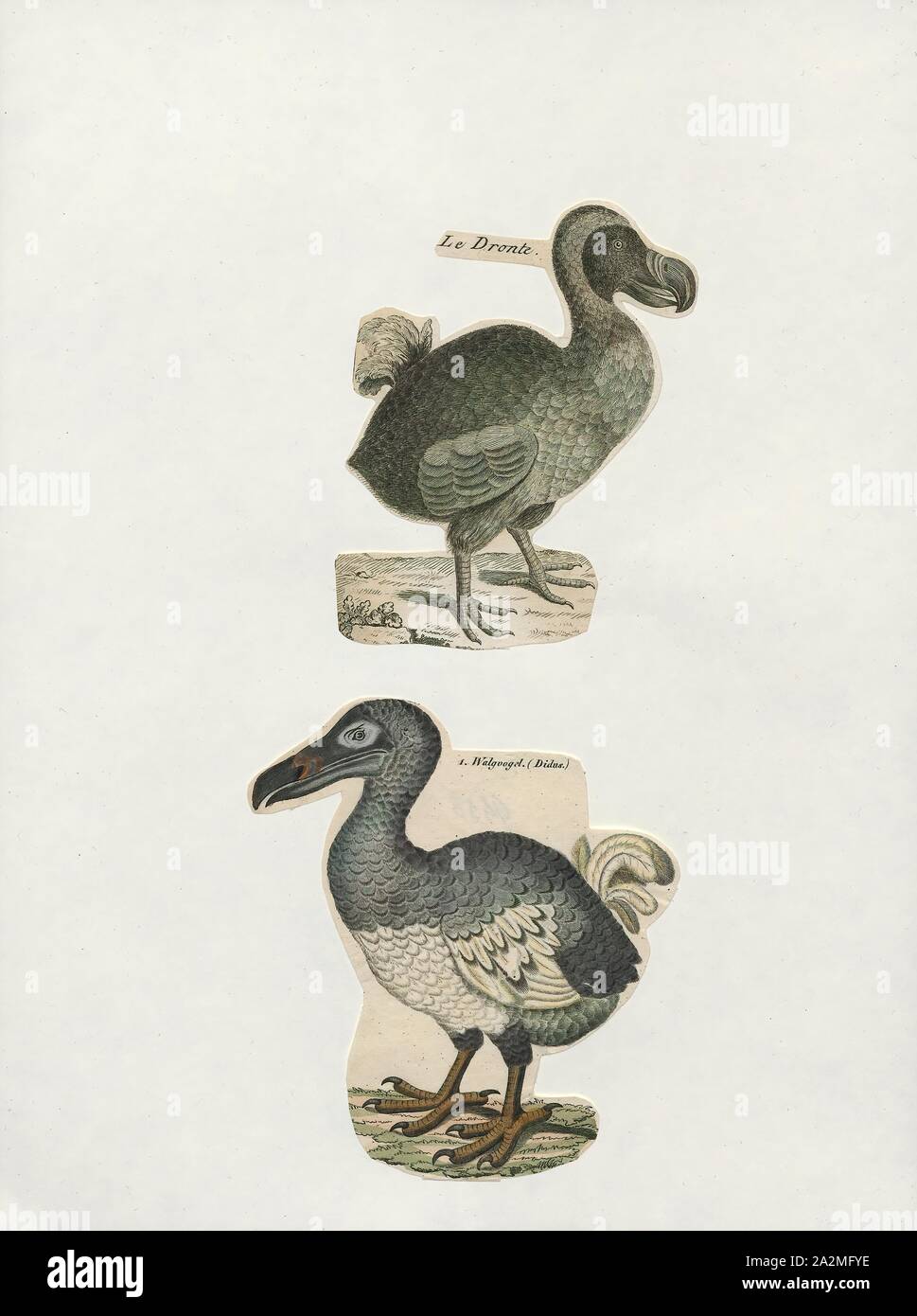 Didus ineptus, Print, The dodo (Raphus cucullatus) is an extinct flightless bird that was endemic to the island of Mauritius, east of Madagascar in the Indian Ocean. The dodo's closest genetic relative was the also-extinct Rodrigues solitaire, the two forming the subfamily Raphinae of the family of pigeons and doves. The closest living relative of the dodo is the Nicobar pigeon. A white dodo was once thought to have existed on the nearby island of Réunion, but this is now thought to have been confusion based on the Réunion ibis and paintings of white dodos., 1700-1880 Stock Photohttps://www.alamy.com/image-license-details/?v=1https://www.alamy.com/didus-ineptus-print-the-dodo-raphus-cucullatus-is-an-extinct-flightless-bird-that-was-endemic-to-the-island-of-mauritius-east-of-madagascar-in-the-indian-ocean-the-dodos-closest-genetic-relative-was-the-also-extinct-rodrigues-solitaire-the-two-forming-the-subfamily-raphinae-of-the-family-of-pigeons-and-doves-the-closest-living-relative-of-the-dodo-is-the-nicobar-pigeon-a-white-dodo-was-once-thought-to-have-existed-on-the-nearby-island-of-runion-but-this-is-now-thought-to-have-been-confusion-based-on-the-runion-ibis-and-paintings-of-white-dodos-1700-1880-image328677874.html
Didus ineptus, Print, The dodo (Raphus cucullatus) is an extinct flightless bird that was endemic to the island of Mauritius, east of Madagascar in the Indian Ocean. The dodo's closest genetic relative was the also-extinct Rodrigues solitaire, the two forming the subfamily Raphinae of the family of pigeons and doves. The closest living relative of the dodo is the Nicobar pigeon. A white dodo was once thought to have existed on the nearby island of Réunion, but this is now thought to have been confusion based on the Réunion ibis and paintings of white dodos., 1700-1880 Stock Photohttps://www.alamy.com/image-license-details/?v=1https://www.alamy.com/didus-ineptus-print-the-dodo-raphus-cucullatus-is-an-extinct-flightless-bird-that-was-endemic-to-the-island-of-mauritius-east-of-madagascar-in-the-indian-ocean-the-dodos-closest-genetic-relative-was-the-also-extinct-rodrigues-solitaire-the-two-forming-the-subfamily-raphinae-of-the-family-of-pigeons-and-doves-the-closest-living-relative-of-the-dodo-is-the-nicobar-pigeon-a-white-dodo-was-once-thought-to-have-existed-on-the-nearby-island-of-runion-but-this-is-now-thought-to-have-been-confusion-based-on-the-runion-ibis-and-paintings-of-white-dodos-1700-1880-image328677874.htmlRM2A2MFYE–Didus ineptus, Print, The dodo (Raphus cucullatus) is an extinct flightless bird that was endemic to the island of Mauritius, east of Madagascar in the Indian Ocean. The dodo's closest genetic relative was the also-extinct Rodrigues solitaire, the two forming the subfamily Raphinae of the family of pigeons and doves. The closest living relative of the dodo is the Nicobar pigeon. A white dodo was once thought to have existed on the nearby island of Réunion, but this is now thought to have been confusion based on the Réunion ibis and paintings of white dodos., 1700-1880
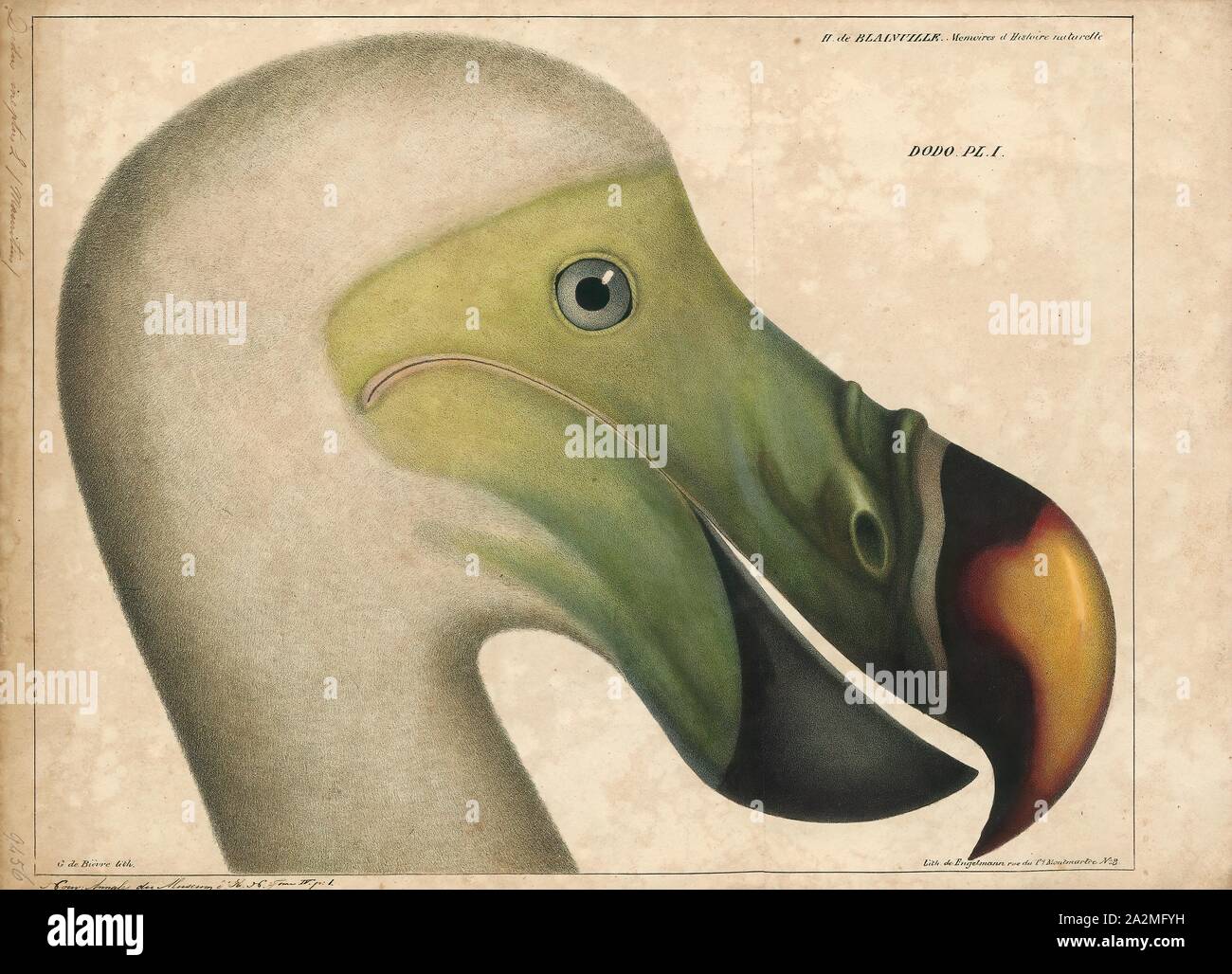 Didus ineptus, Print, The dodo (Raphus cucullatus) is an extinct flightless bird that was endemic to the island of Mauritius, east of Madagascar in the Indian Ocean. The dodo's closest genetic relative was the also-extinct Rodrigues solitaire, the two forming the subfamily Raphinae of the family of pigeons and doves. The closest living relative of the dodo is the Nicobar pigeon. A white dodo was once thought to have existed on the nearby island of Réunion, but this is now thought to have been confusion based on the Réunion ibis and paintings of white dodos., 1835 Stock Photohttps://www.alamy.com/image-license-details/?v=1https://www.alamy.com/didus-ineptus-print-the-dodo-raphus-cucullatus-is-an-extinct-flightless-bird-that-was-endemic-to-the-island-of-mauritius-east-of-madagascar-in-the-indian-ocean-the-dodos-closest-genetic-relative-was-the-also-extinct-rodrigues-solitaire-the-two-forming-the-subfamily-raphinae-of-the-family-of-pigeons-and-doves-the-closest-living-relative-of-the-dodo-is-the-nicobar-pigeon-a-white-dodo-was-once-thought-to-have-existed-on-the-nearby-island-of-runion-but-this-is-now-thought-to-have-been-confusion-based-on-the-runion-ibis-and-paintings-of-white-dodos-1835-image328677877.html
Didus ineptus, Print, The dodo (Raphus cucullatus) is an extinct flightless bird that was endemic to the island of Mauritius, east of Madagascar in the Indian Ocean. The dodo's closest genetic relative was the also-extinct Rodrigues solitaire, the two forming the subfamily Raphinae of the family of pigeons and doves. The closest living relative of the dodo is the Nicobar pigeon. A white dodo was once thought to have existed on the nearby island of Réunion, but this is now thought to have been confusion based on the Réunion ibis and paintings of white dodos., 1835 Stock Photohttps://www.alamy.com/image-license-details/?v=1https://www.alamy.com/didus-ineptus-print-the-dodo-raphus-cucullatus-is-an-extinct-flightless-bird-that-was-endemic-to-the-island-of-mauritius-east-of-madagascar-in-the-indian-ocean-the-dodos-closest-genetic-relative-was-the-also-extinct-rodrigues-solitaire-the-two-forming-the-subfamily-raphinae-of-the-family-of-pigeons-and-doves-the-closest-living-relative-of-the-dodo-is-the-nicobar-pigeon-a-white-dodo-was-once-thought-to-have-existed-on-the-nearby-island-of-runion-but-this-is-now-thought-to-have-been-confusion-based-on-the-runion-ibis-and-paintings-of-white-dodos-1835-image328677877.htmlRM2A2MFYH–Didus ineptus, Print, The dodo (Raphus cucullatus) is an extinct flightless bird that was endemic to the island of Mauritius, east of Madagascar in the Indian Ocean. The dodo's closest genetic relative was the also-extinct Rodrigues solitaire, the two forming the subfamily Raphinae of the family of pigeons and doves. The closest living relative of the dodo is the Nicobar pigeon. A white dodo was once thought to have existed on the nearby island of Réunion, but this is now thought to have been confusion based on the Réunion ibis and paintings of white dodos., 1835
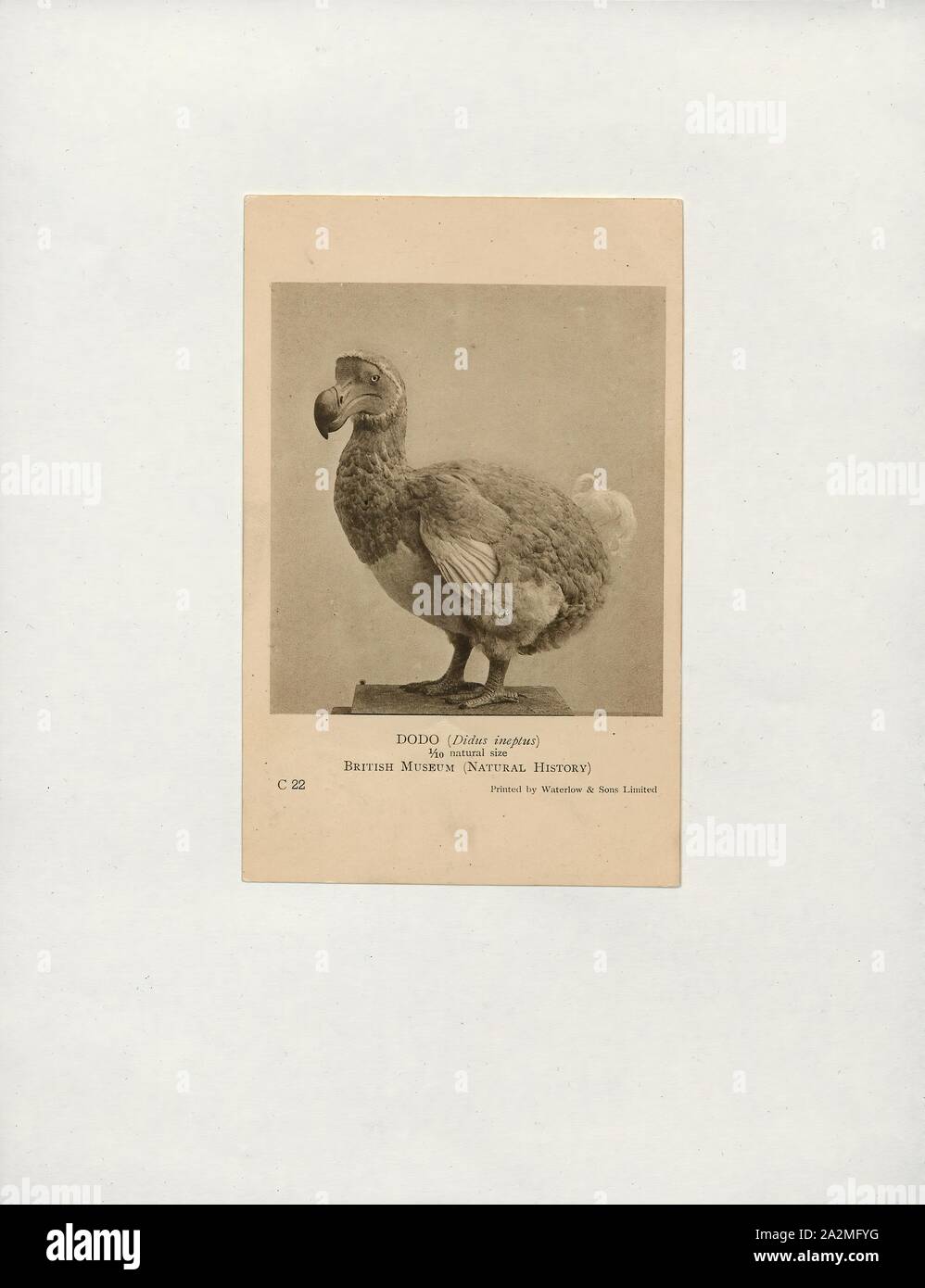 Didus ineptus, Print, The dodo (Raphus cucullatus) is an extinct flightless bird that was endemic to the island of Mauritius, east of Madagascar in the Indian Ocean. The dodo's closest genetic relative was the also-extinct Rodrigues solitaire, the two forming the subfamily Raphinae of the family of pigeons and doves. The closest living relative of the dodo is the Nicobar pigeon. A white dodo was once thought to have existed on the nearby island of Réunion, but this is now thought to have been confusion based on the Réunion ibis and paintings of white dodos., 1700-1880 Stock Photohttps://www.alamy.com/image-license-details/?v=1https://www.alamy.com/didus-ineptus-print-the-dodo-raphus-cucullatus-is-an-extinct-flightless-bird-that-was-endemic-to-the-island-of-mauritius-east-of-madagascar-in-the-indian-ocean-the-dodos-closest-genetic-relative-was-the-also-extinct-rodrigues-solitaire-the-two-forming-the-subfamily-raphinae-of-the-family-of-pigeons-and-doves-the-closest-living-relative-of-the-dodo-is-the-nicobar-pigeon-a-white-dodo-was-once-thought-to-have-existed-on-the-nearby-island-of-runion-but-this-is-now-thought-to-have-been-confusion-based-on-the-runion-ibis-and-paintings-of-white-dodos-1700-1880-image328677876.html
Didus ineptus, Print, The dodo (Raphus cucullatus) is an extinct flightless bird that was endemic to the island of Mauritius, east of Madagascar in the Indian Ocean. The dodo's closest genetic relative was the also-extinct Rodrigues solitaire, the two forming the subfamily Raphinae of the family of pigeons and doves. The closest living relative of the dodo is the Nicobar pigeon. A white dodo was once thought to have existed on the nearby island of Réunion, but this is now thought to have been confusion based on the Réunion ibis and paintings of white dodos., 1700-1880 Stock Photohttps://www.alamy.com/image-license-details/?v=1https://www.alamy.com/didus-ineptus-print-the-dodo-raphus-cucullatus-is-an-extinct-flightless-bird-that-was-endemic-to-the-island-of-mauritius-east-of-madagascar-in-the-indian-ocean-the-dodos-closest-genetic-relative-was-the-also-extinct-rodrigues-solitaire-the-two-forming-the-subfamily-raphinae-of-the-family-of-pigeons-and-doves-the-closest-living-relative-of-the-dodo-is-the-nicobar-pigeon-a-white-dodo-was-once-thought-to-have-existed-on-the-nearby-island-of-runion-but-this-is-now-thought-to-have-been-confusion-based-on-the-runion-ibis-and-paintings-of-white-dodos-1700-1880-image328677876.htmlRM2A2MFYG–Didus ineptus, Print, The dodo (Raphus cucullatus) is an extinct flightless bird that was endemic to the island of Mauritius, east of Madagascar in the Indian Ocean. The dodo's closest genetic relative was the also-extinct Rodrigues solitaire, the two forming the subfamily Raphinae of the family of pigeons and doves. The closest living relative of the dodo is the Nicobar pigeon. A white dodo was once thought to have existed on the nearby island of Réunion, but this is now thought to have been confusion based on the Réunion ibis and paintings of white dodos., 1700-1880
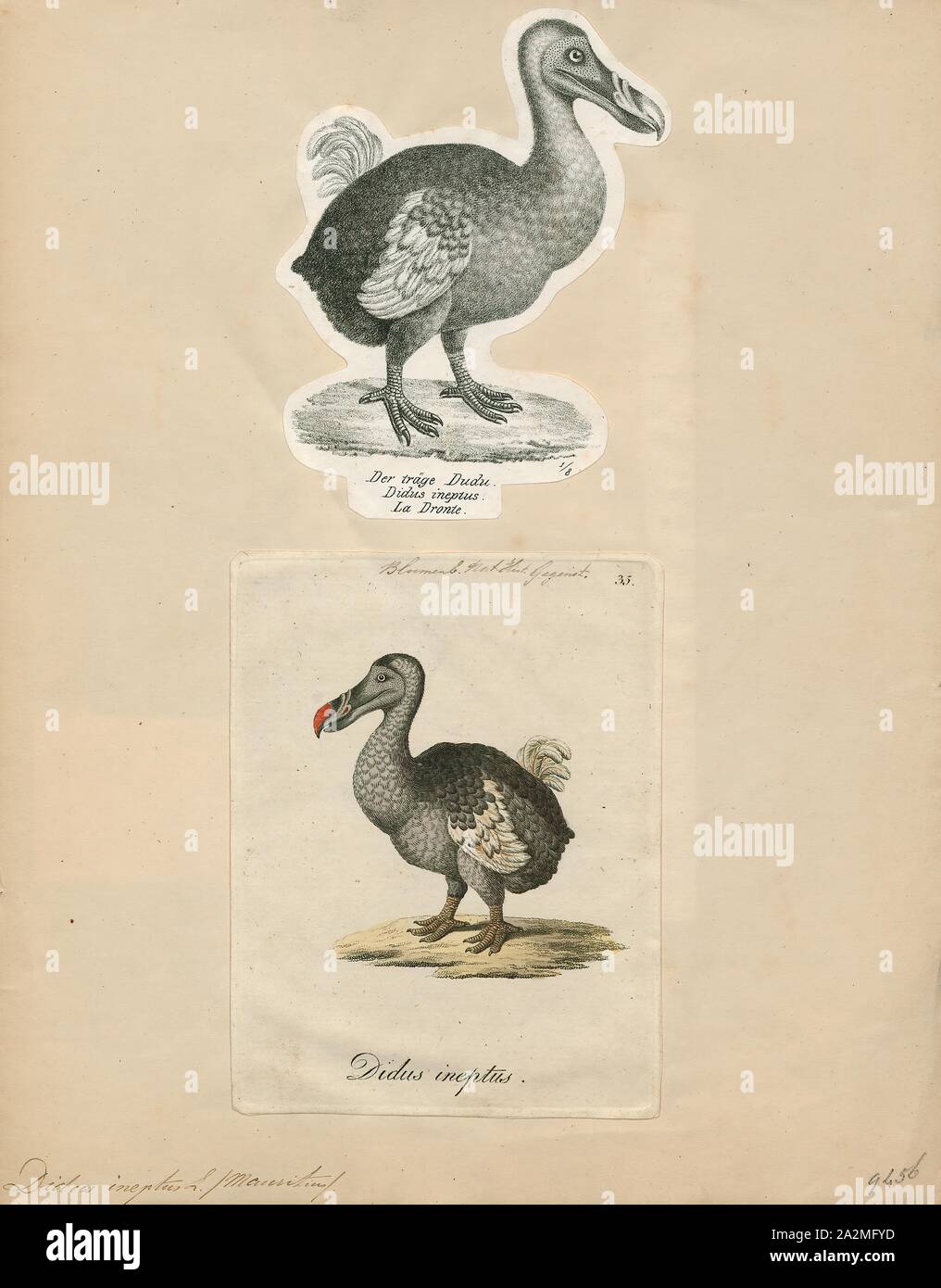 Didus ineptus, Print, The dodo (Raphus cucullatus) is an extinct flightless bird that was endemic to the island of Mauritius, east of Madagascar in the Indian Ocean. The dodo's closest genetic relative was the also-extinct Rodrigues solitaire, the two forming the subfamily Raphinae of the family of pigeons and doves. The closest living relative of the dodo is the Nicobar pigeon. A white dodo was once thought to have existed on the nearby island of Réunion, but this is now thought to have been confusion based on the Réunion ibis and paintings of white dodos., 1700-1880 Stock Photohttps://www.alamy.com/image-license-details/?v=1https://www.alamy.com/didus-ineptus-print-the-dodo-raphus-cucullatus-is-an-extinct-flightless-bird-that-was-endemic-to-the-island-of-mauritius-east-of-madagascar-in-the-indian-ocean-the-dodos-closest-genetic-relative-was-the-also-extinct-rodrigues-solitaire-the-two-forming-the-subfamily-raphinae-of-the-family-of-pigeons-and-doves-the-closest-living-relative-of-the-dodo-is-the-nicobar-pigeon-a-white-dodo-was-once-thought-to-have-existed-on-the-nearby-island-of-runion-but-this-is-now-thought-to-have-been-confusion-based-on-the-runion-ibis-and-paintings-of-white-dodos-1700-1880-image328677873.html
Didus ineptus, Print, The dodo (Raphus cucullatus) is an extinct flightless bird that was endemic to the island of Mauritius, east of Madagascar in the Indian Ocean. The dodo's closest genetic relative was the also-extinct Rodrigues solitaire, the two forming the subfamily Raphinae of the family of pigeons and doves. The closest living relative of the dodo is the Nicobar pigeon. A white dodo was once thought to have existed on the nearby island of Réunion, but this is now thought to have been confusion based on the Réunion ibis and paintings of white dodos., 1700-1880 Stock Photohttps://www.alamy.com/image-license-details/?v=1https://www.alamy.com/didus-ineptus-print-the-dodo-raphus-cucullatus-is-an-extinct-flightless-bird-that-was-endemic-to-the-island-of-mauritius-east-of-madagascar-in-the-indian-ocean-the-dodos-closest-genetic-relative-was-the-also-extinct-rodrigues-solitaire-the-two-forming-the-subfamily-raphinae-of-the-family-of-pigeons-and-doves-the-closest-living-relative-of-the-dodo-is-the-nicobar-pigeon-a-white-dodo-was-once-thought-to-have-existed-on-the-nearby-island-of-runion-but-this-is-now-thought-to-have-been-confusion-based-on-the-runion-ibis-and-paintings-of-white-dodos-1700-1880-image328677873.htmlRM2A2MFYD–Didus ineptus, Print, The dodo (Raphus cucullatus) is an extinct flightless bird that was endemic to the island of Mauritius, east of Madagascar in the Indian Ocean. The dodo's closest genetic relative was the also-extinct Rodrigues solitaire, the two forming the subfamily Raphinae of the family of pigeons and doves. The closest living relative of the dodo is the Nicobar pigeon. A white dodo was once thought to have existed on the nearby island of Réunion, but this is now thought to have been confusion based on the Réunion ibis and paintings of white dodos., 1700-1880
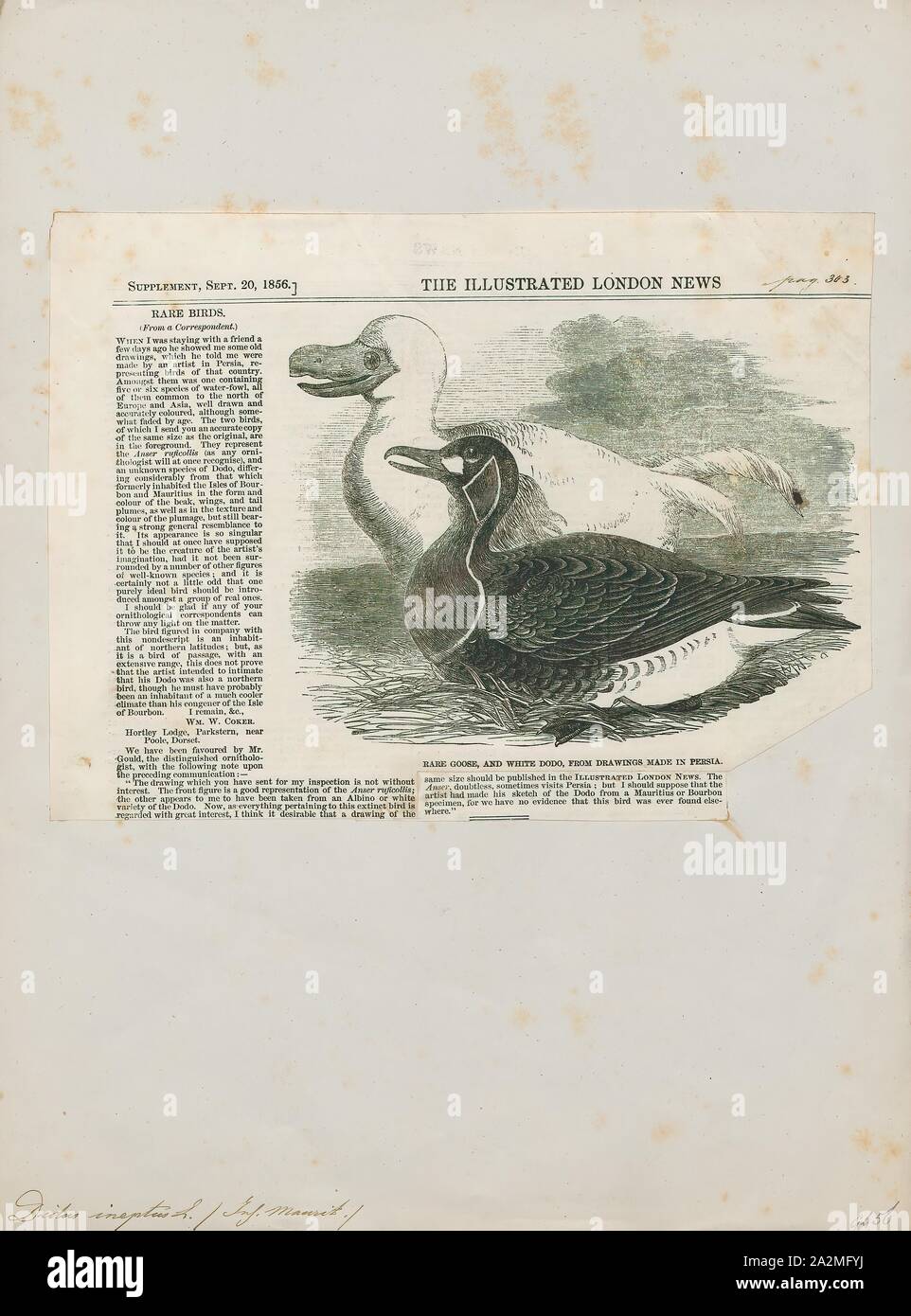 Didus ineptus, Print, The dodo (Raphus cucullatus) is an extinct flightless bird that was endemic to the island of Mauritius, east of Madagascar in the Indian Ocean. The dodo's closest genetic relative was the also-extinct Rodrigues solitaire, the two forming the subfamily Raphinae of the family of pigeons and doves. The closest living relative of the dodo is the Nicobar pigeon. A white dodo was once thought to have existed on the nearby island of Réunion, but this is now thought to have been confusion based on the Réunion ibis and paintings of white dodos., 1856 Stock Photohttps://www.alamy.com/image-license-details/?v=1https://www.alamy.com/didus-ineptus-print-the-dodo-raphus-cucullatus-is-an-extinct-flightless-bird-that-was-endemic-to-the-island-of-mauritius-east-of-madagascar-in-the-indian-ocean-the-dodos-closest-genetic-relative-was-the-also-extinct-rodrigues-solitaire-the-two-forming-the-subfamily-raphinae-of-the-family-of-pigeons-and-doves-the-closest-living-relative-of-the-dodo-is-the-nicobar-pigeon-a-white-dodo-was-once-thought-to-have-existed-on-the-nearby-island-of-runion-but-this-is-now-thought-to-have-been-confusion-based-on-the-runion-ibis-and-paintings-of-white-dodos-1856-image328677878.html
Didus ineptus, Print, The dodo (Raphus cucullatus) is an extinct flightless bird that was endemic to the island of Mauritius, east of Madagascar in the Indian Ocean. The dodo's closest genetic relative was the also-extinct Rodrigues solitaire, the two forming the subfamily Raphinae of the family of pigeons and doves. The closest living relative of the dodo is the Nicobar pigeon. A white dodo was once thought to have existed on the nearby island of Réunion, but this is now thought to have been confusion based on the Réunion ibis and paintings of white dodos., 1856 Stock Photohttps://www.alamy.com/image-license-details/?v=1https://www.alamy.com/didus-ineptus-print-the-dodo-raphus-cucullatus-is-an-extinct-flightless-bird-that-was-endemic-to-the-island-of-mauritius-east-of-madagascar-in-the-indian-ocean-the-dodos-closest-genetic-relative-was-the-also-extinct-rodrigues-solitaire-the-two-forming-the-subfamily-raphinae-of-the-family-of-pigeons-and-doves-the-closest-living-relative-of-the-dodo-is-the-nicobar-pigeon-a-white-dodo-was-once-thought-to-have-existed-on-the-nearby-island-of-runion-but-this-is-now-thought-to-have-been-confusion-based-on-the-runion-ibis-and-paintings-of-white-dodos-1856-image328677878.htmlRM2A2MFYJ–Didus ineptus, Print, The dodo (Raphus cucullatus) is an extinct flightless bird that was endemic to the island of Mauritius, east of Madagascar in the Indian Ocean. The dodo's closest genetic relative was the also-extinct Rodrigues solitaire, the two forming the subfamily Raphinae of the family of pigeons and doves. The closest living relative of the dodo is the Nicobar pigeon. A white dodo was once thought to have existed on the nearby island of Réunion, but this is now thought to have been confusion based on the Réunion ibis and paintings of white dodos., 1856